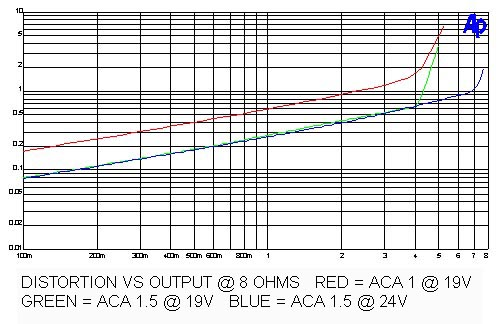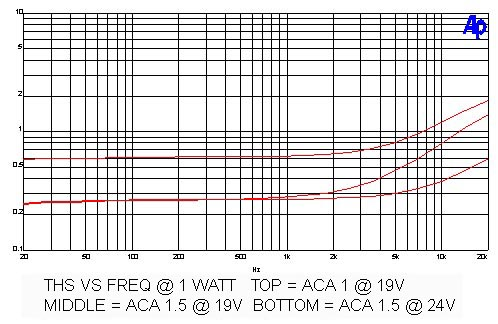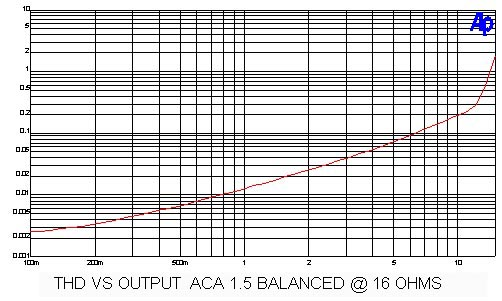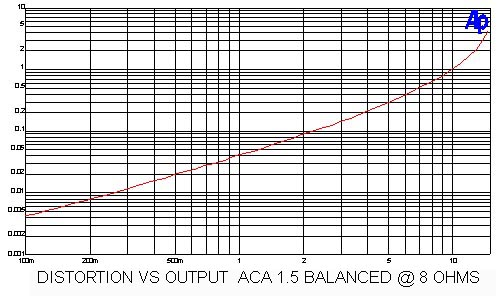Amp Camp Amp V1.5 Illustrated Build Guide
This build guide is for all builders of the 2nd version of the diyAudio.com/PassDIY "Amp Camp Amp" Using the wonderful HiFi2000 custom chassis and the V1.1 PCBs. This was sold as the ACA V1.5 during March 2018. The PCBs have one single center mounting hole and say V1.1. From V1.6 onwards, the PCB, the kit, the chassis will all have the same version number 🙂
Nelson also gave away some PCBs at BAF 2017 that said 1.1 and have a slightly different layout. If you have one of those please see the upgrade information here and this post on how to mount that PCB in the new V1.6 chassis.
A new guide for V1.6 will be published when people start receiving their V1.6 kits.
Amp Camp Amp Parts Kit – diyAudio Store
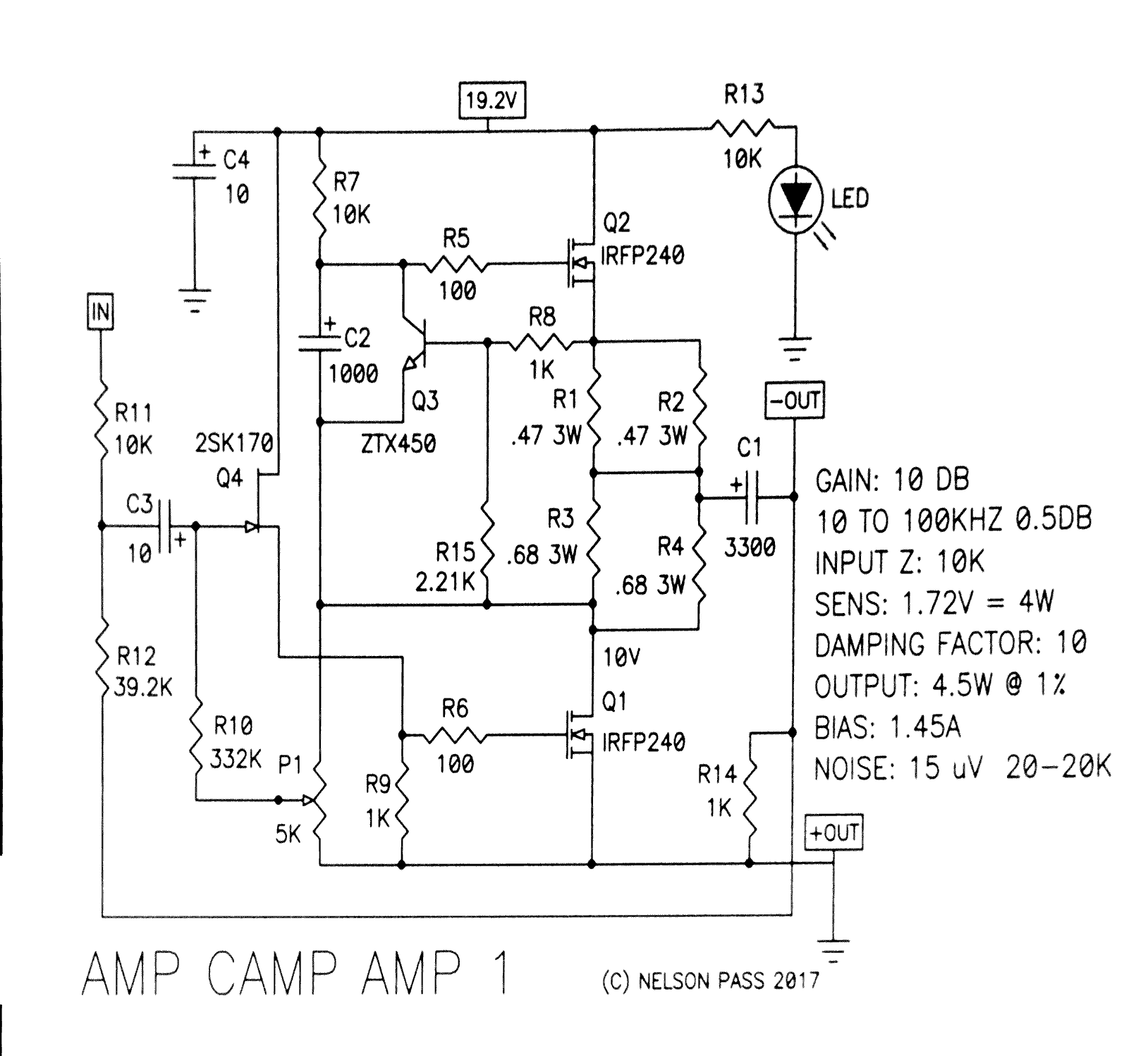
Schematic. Print this out on paper and have in front of you during the whole process. 🙂
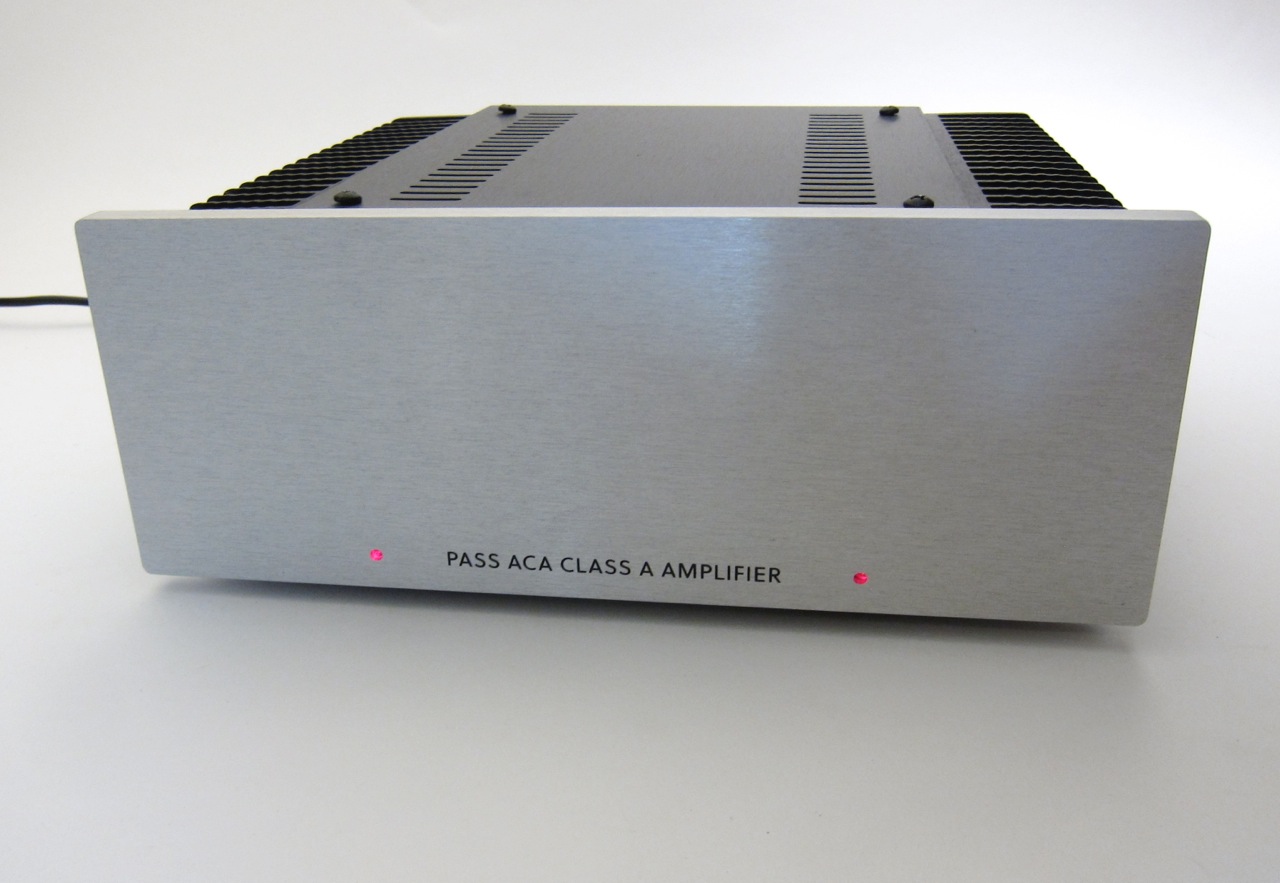
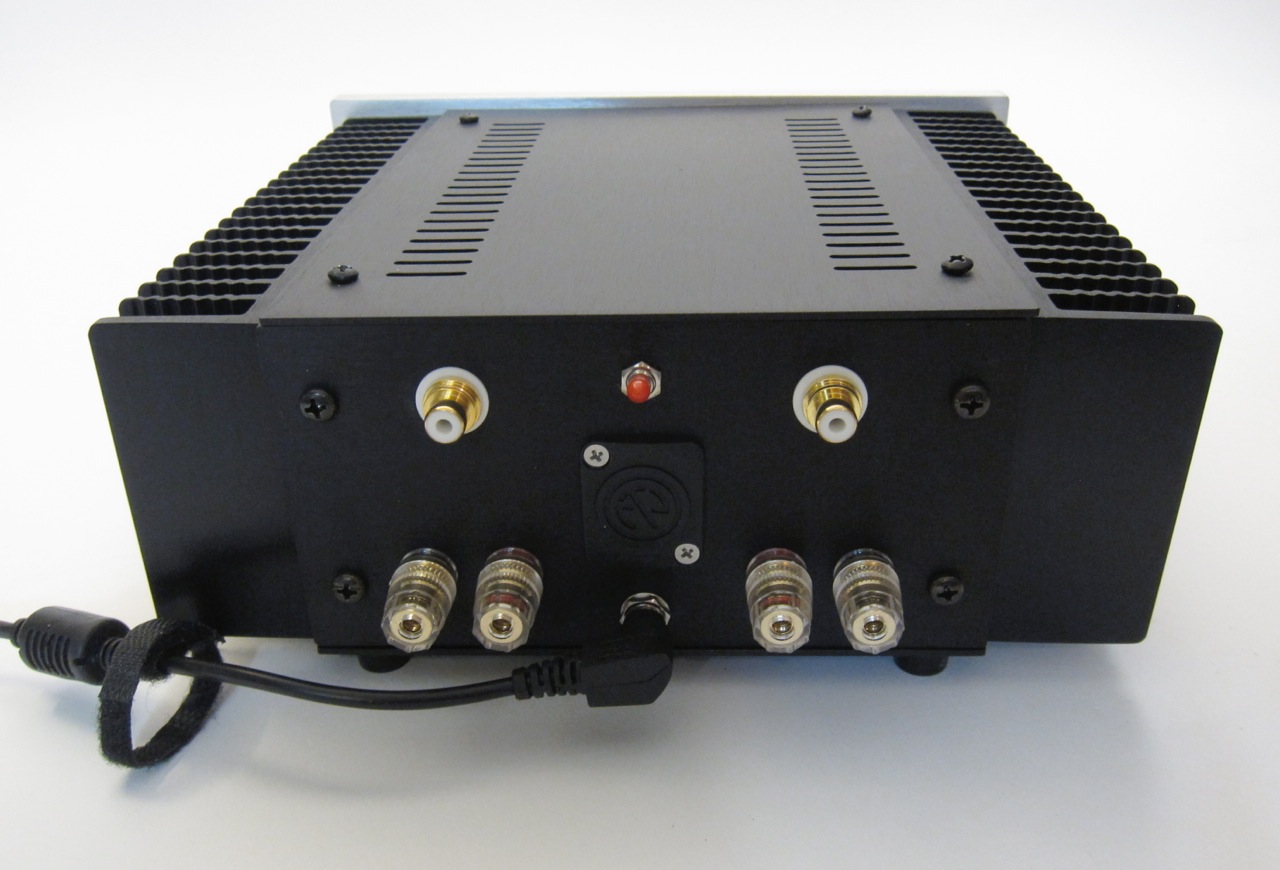
The guide will be broken up into a few sections, each containing a bunch of photos with captions underneath, showing various parts of the amp and how it all goes together.
It's my intention to have the photos be good enough on their own to show how it all works, but many times there will be a good bit of information in the caption below that, so please read them.
Also, the forum software resizes and sometimes squishes the photos into a big thumbnail, but you can click on any photo to show it larger and in proper dimension.
This build guide is for all builders of the 2nd version of the diyAudio.com/PassDIY "Amp Camp Amp" Using the wonderful HiFi2000 custom chassis and the V1.1 PCBs. This was sold as the ACA V1.5 during March 2018. The PCBs have one single center mounting hole and say V1.1. From V1.6 onwards, the PCB, the kit, the chassis will all have the same version number 🙂
Nelson also gave away some PCBs at BAF 2017 that said 1.1 and have a slightly different layout. If you have one of those please see the upgrade information here and this post on how to mount that PCB in the new V1.6 chassis.
A new guide for V1.6 will be published when people start receiving their V1.6 kits.
Amp Camp Amp Parts Kit – diyAudio Store
Schematic. Print this out on paper and have in front of you during the whole process. 🙂


The guide will be broken up into a few sections, each containing a bunch of photos with captions underneath, showing various parts of the amp and how it all goes together.
It's my intention to have the photos be good enough on their own to show how it all works, but many times there will be a good bit of information in the caption below that, so please read them.
Also, the forum software resizes and sometimes squishes the photos into a big thumbnail, but you can click on any photo to show it larger and in proper dimension.
Last edited by a moderator:
Stuffing circuit board
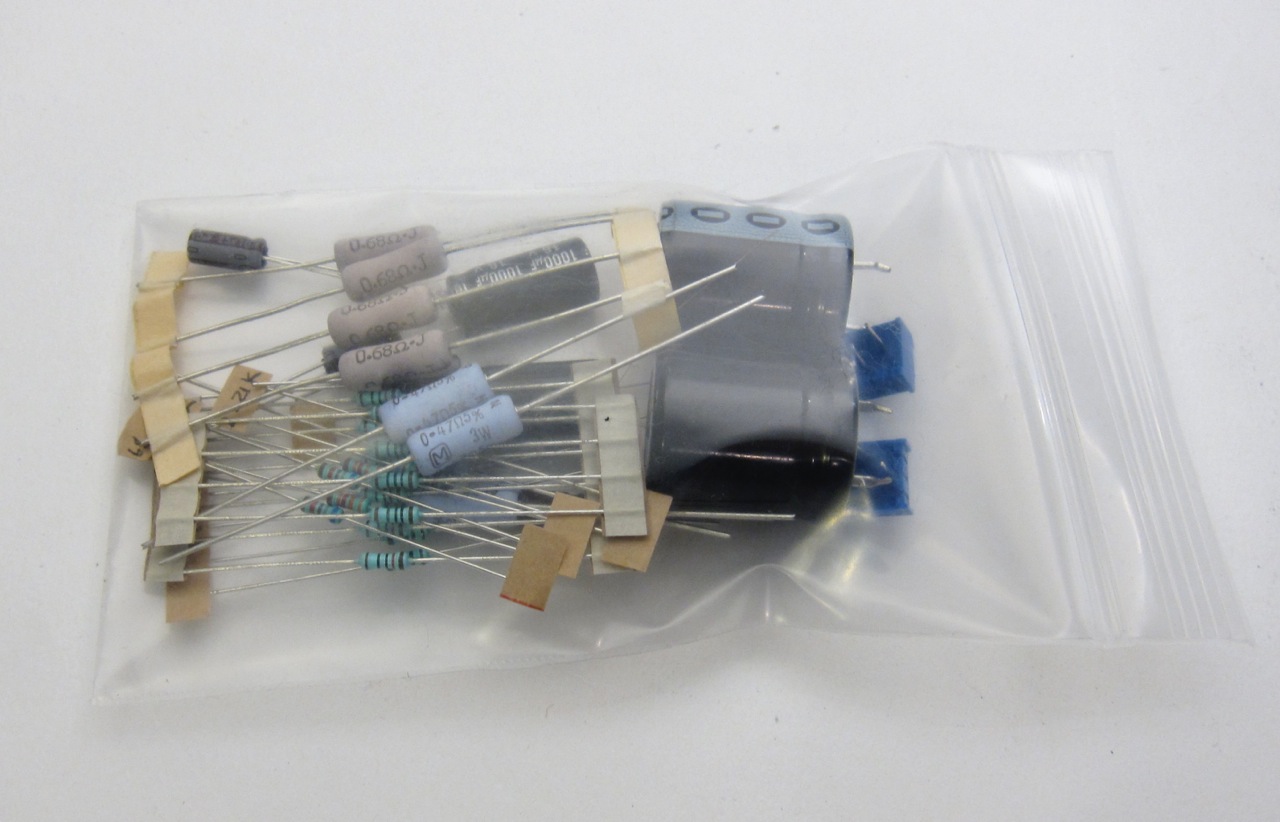
Resistors, pots, capacitors.
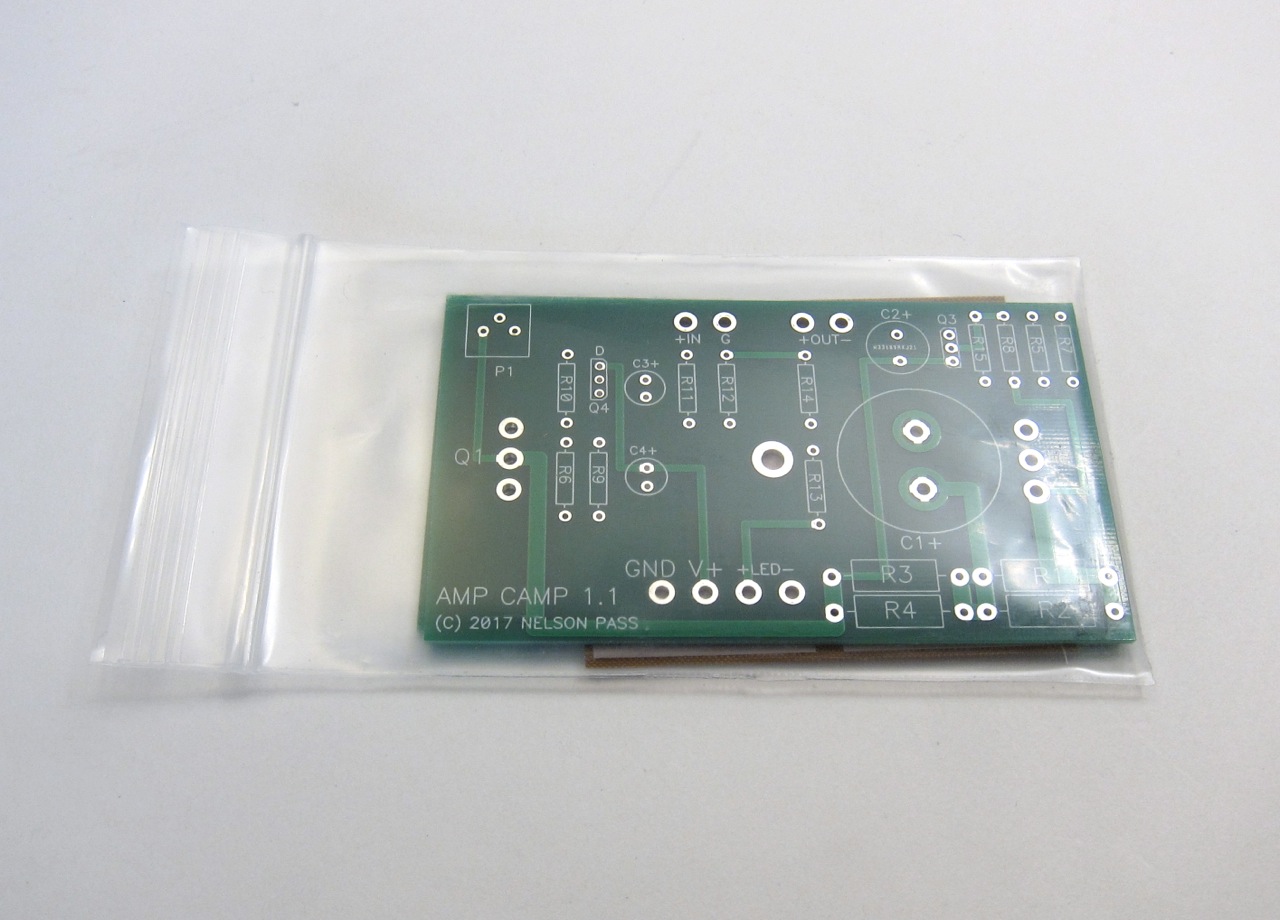
PCB and Keratherm insulators
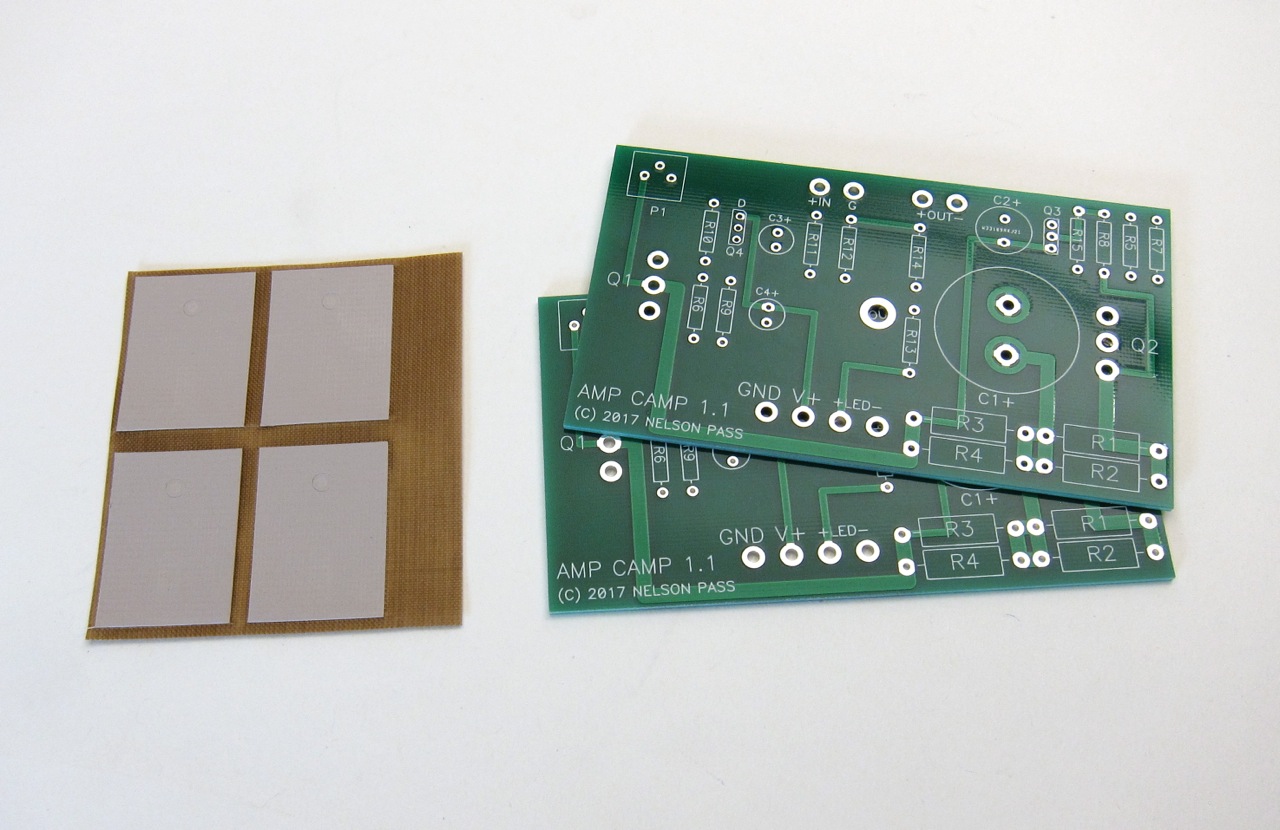
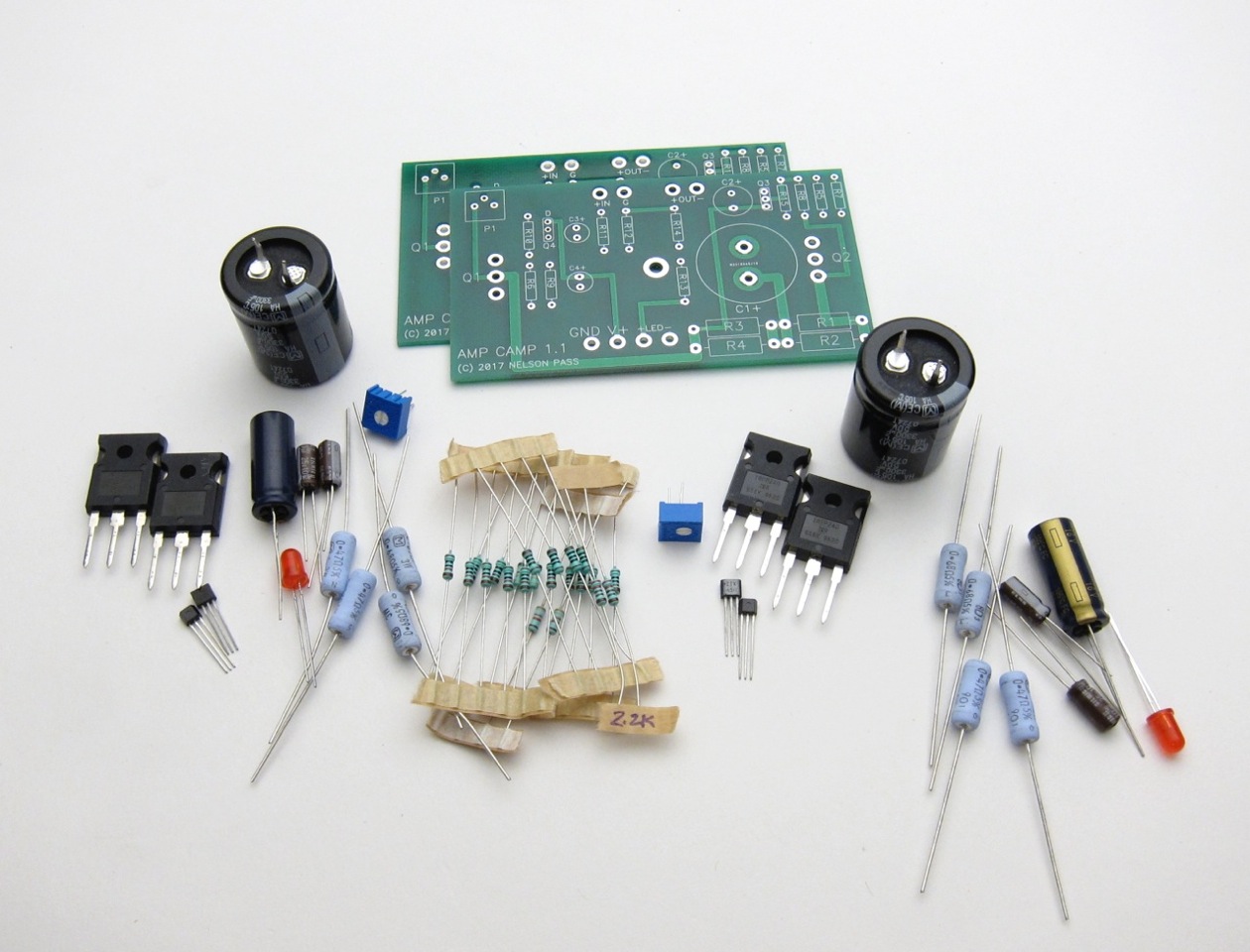
The components that solder to the circuit boards
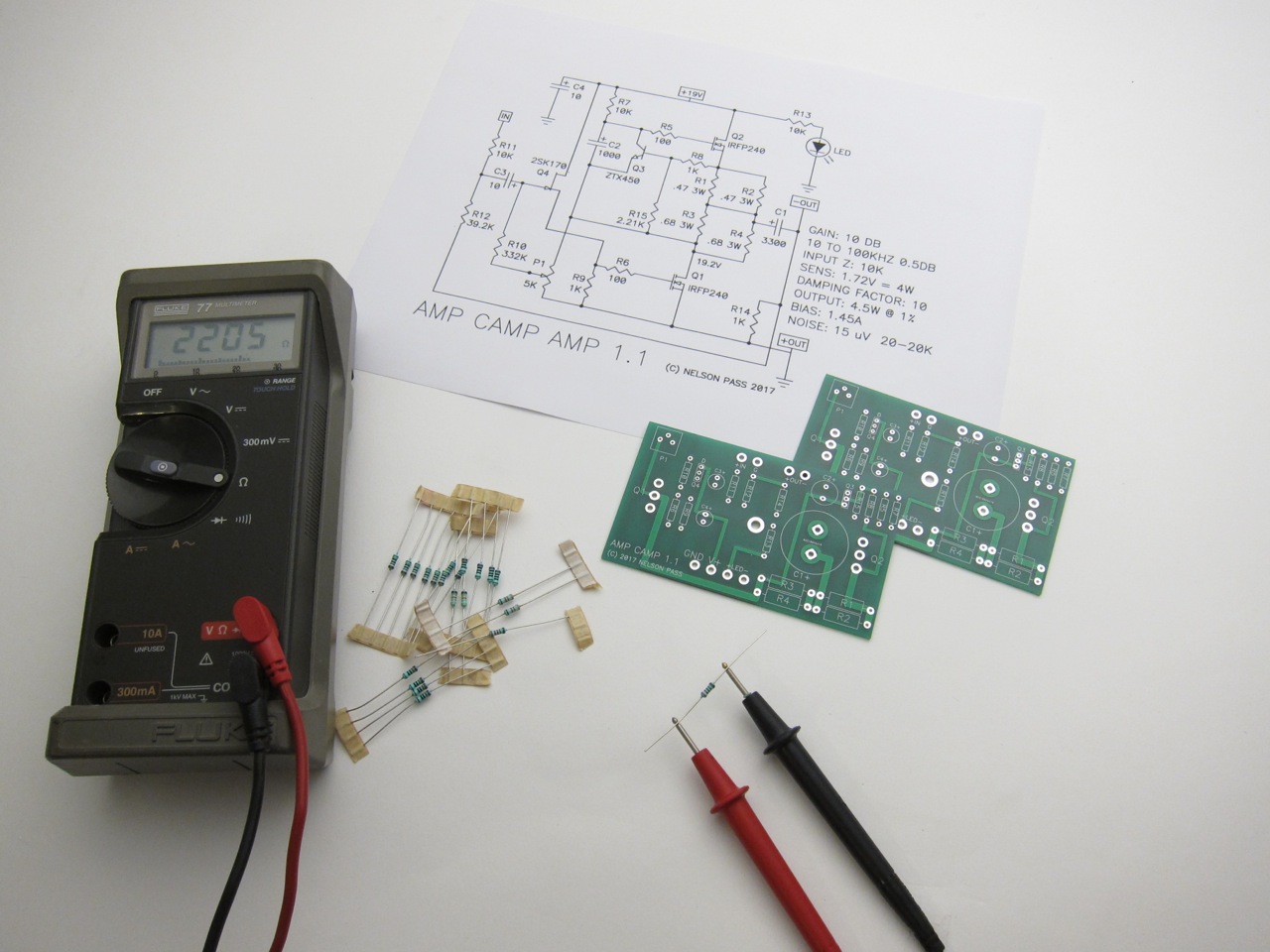
Measure EVERYTHING before placing in the board. 🙂 And have the schematic printed in front of you at all times.
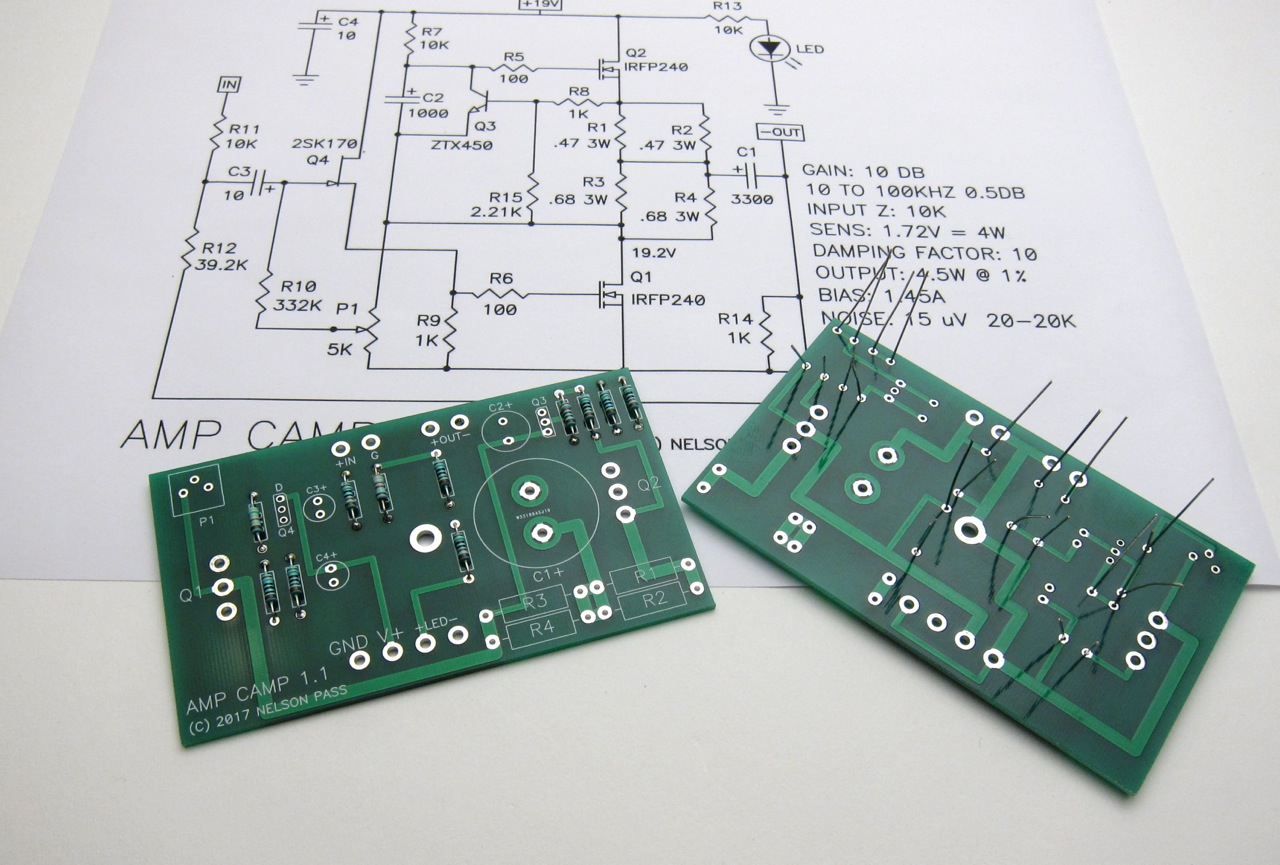
Generally it's easiest to start stuffing the PCBs with the smallest components first - in this case the resistors.
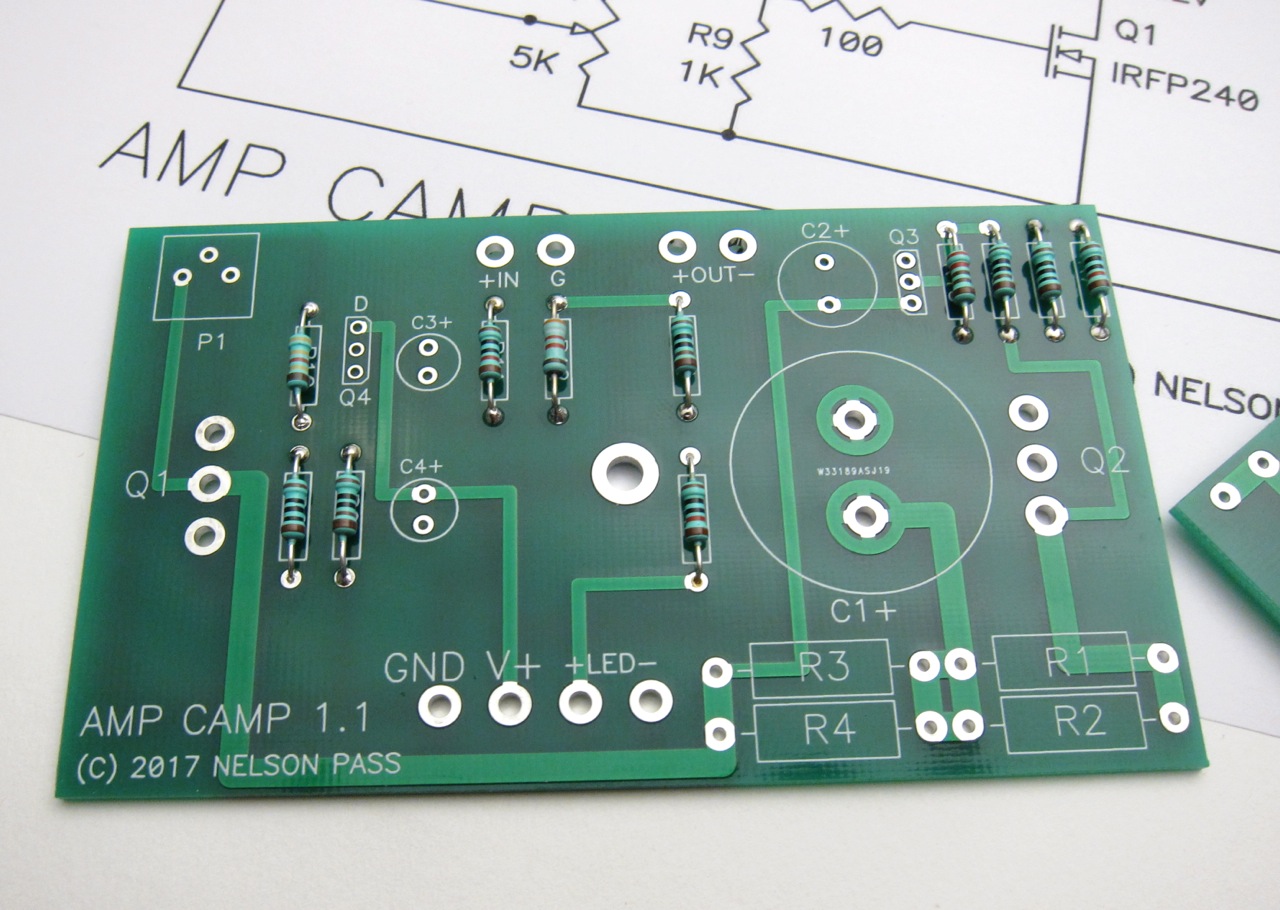
Note the 1% resistors all have a brown band at one end - to help assist troubleshooting in the future if needed, place the brown at the bottom of all resistors.
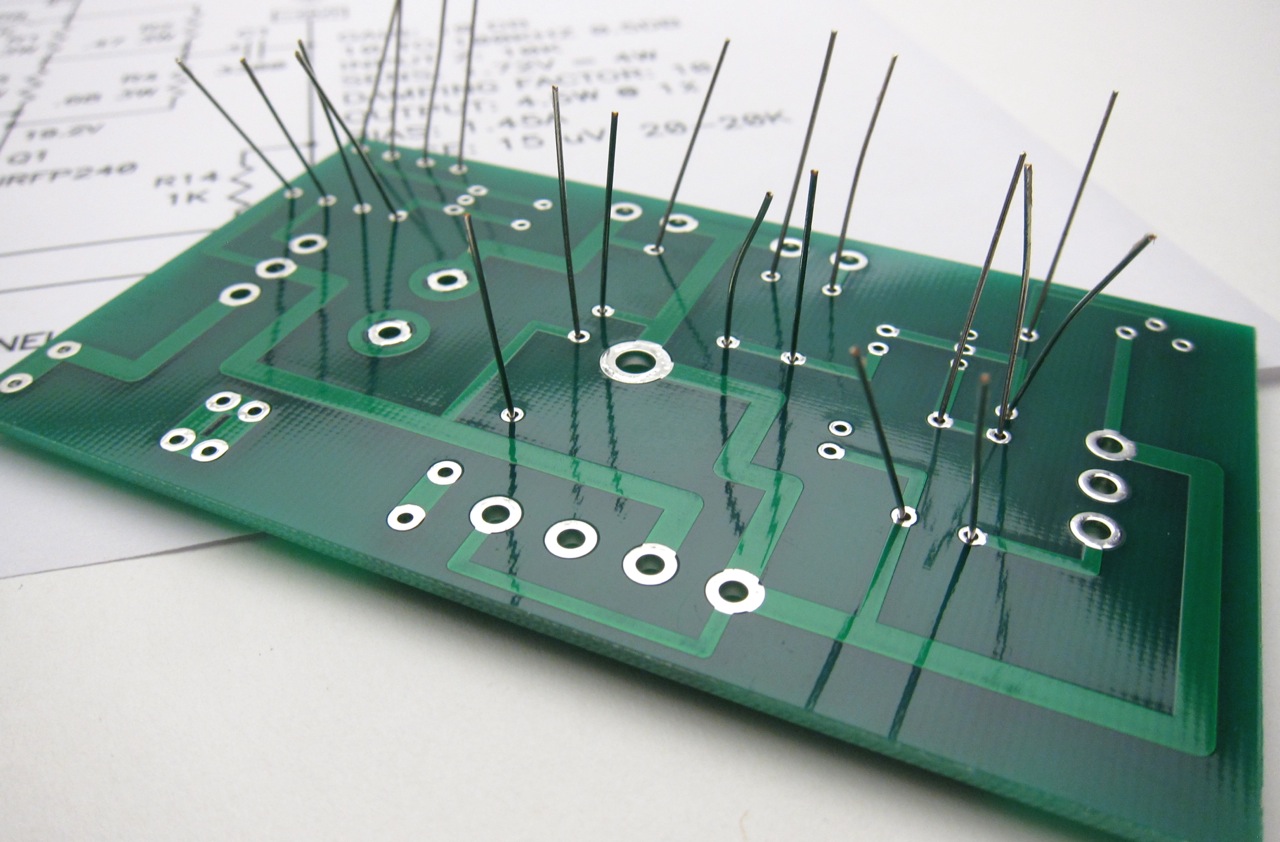
Slightly bend out leads before soldering
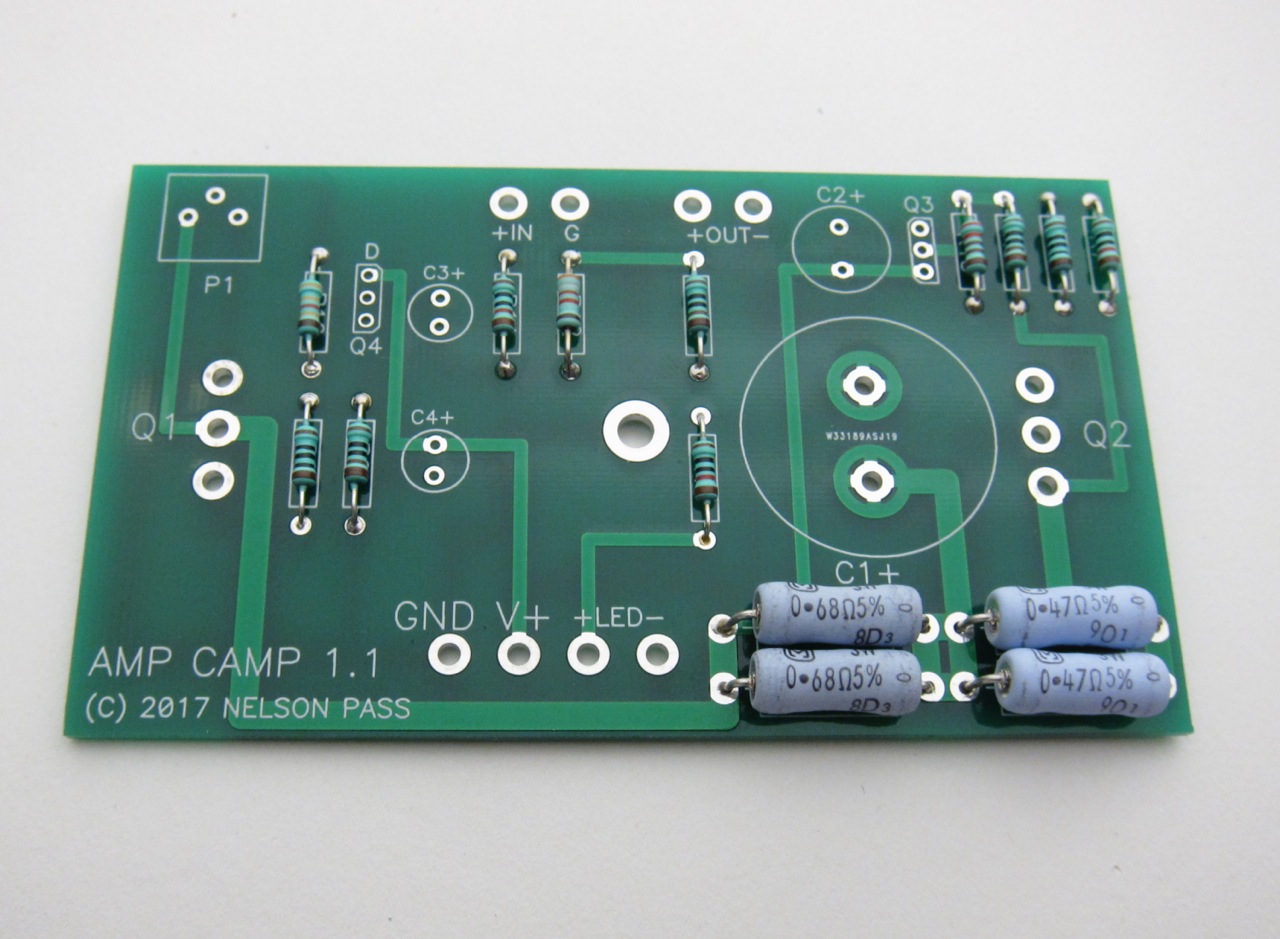
The big and little resistors in their places. Note the large resistors have the value printed right on them - try to bend the leads so the values show and align as shown.
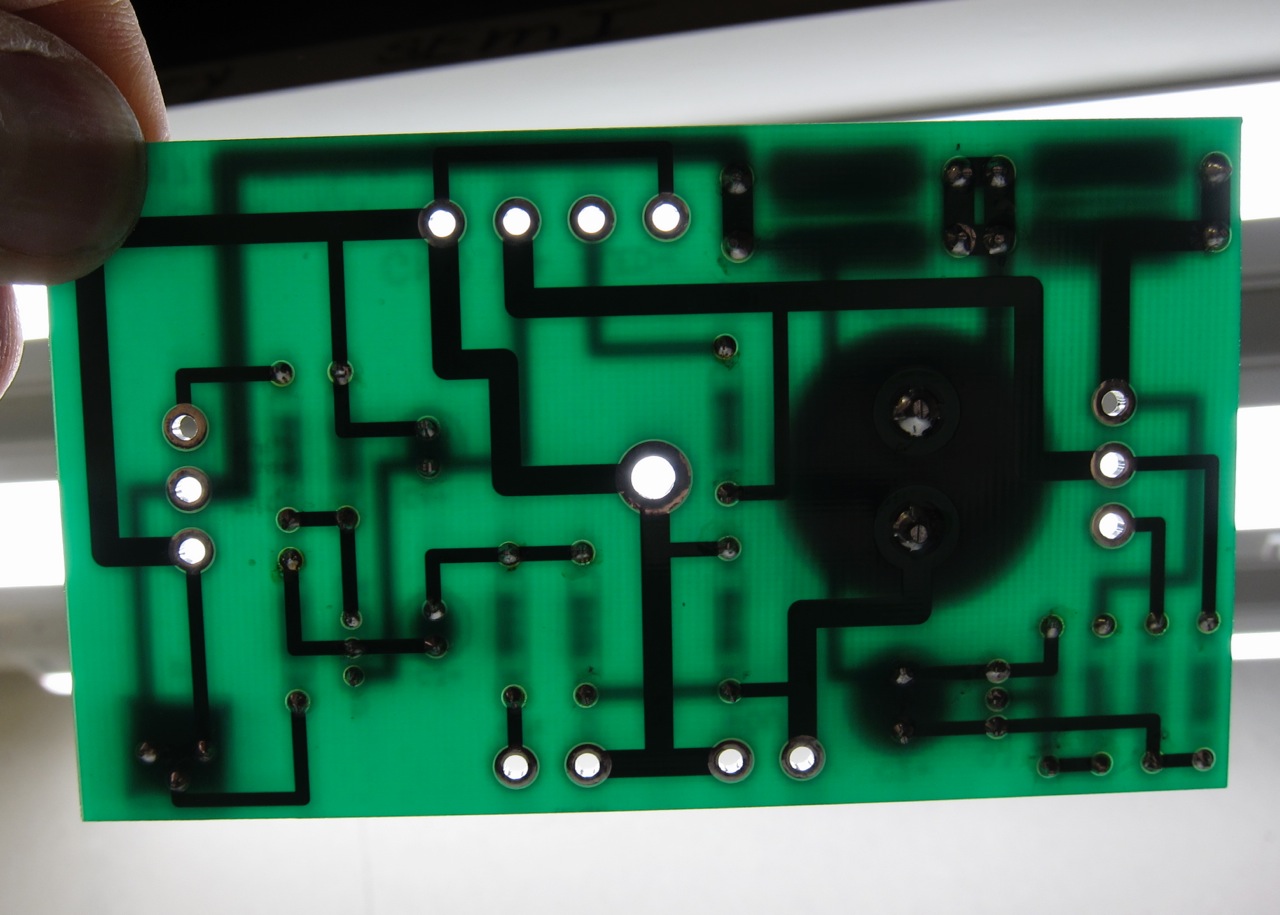
If you hold the PCB up to the light, you can see if you missed any solder holes.
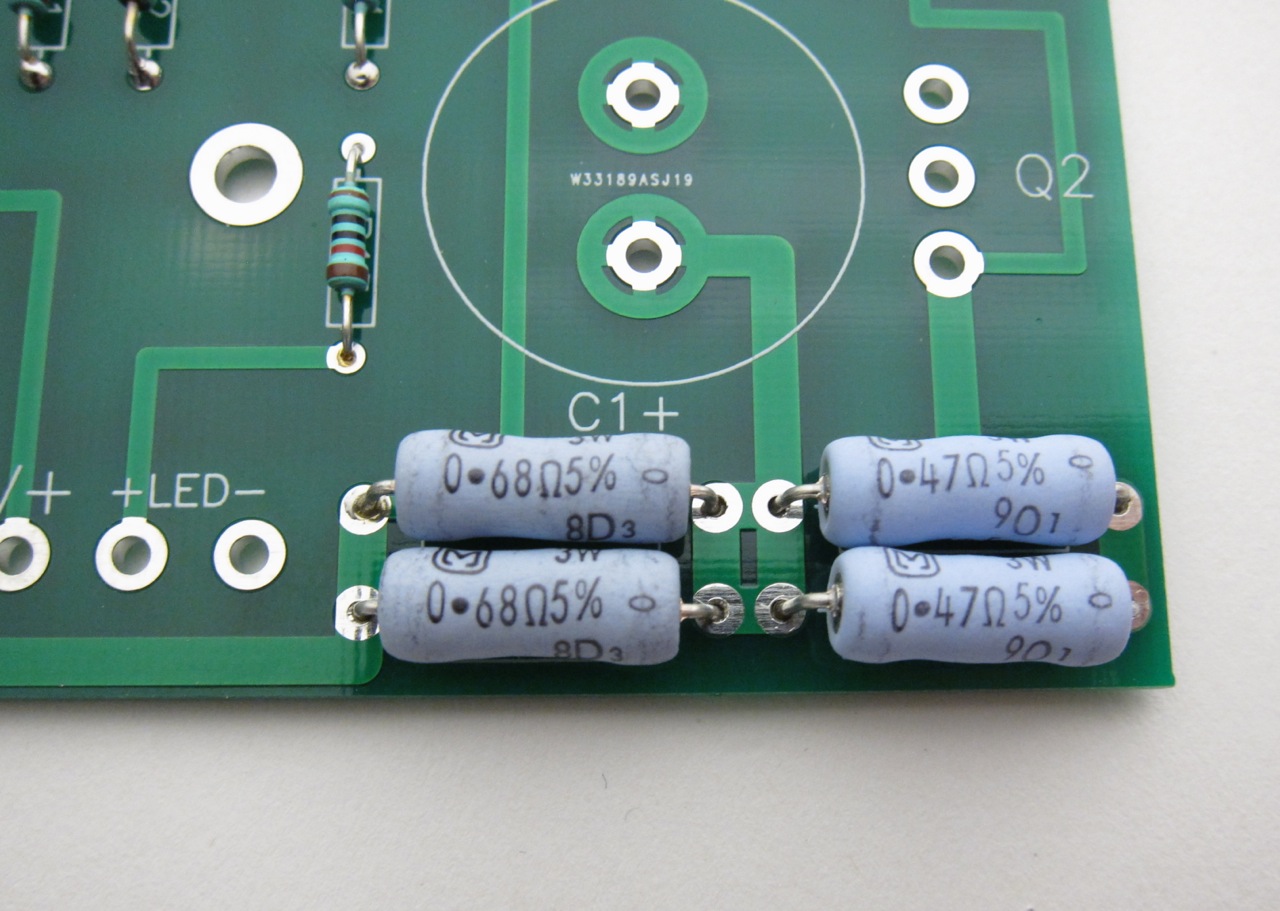
Arrange resistors with values showing.
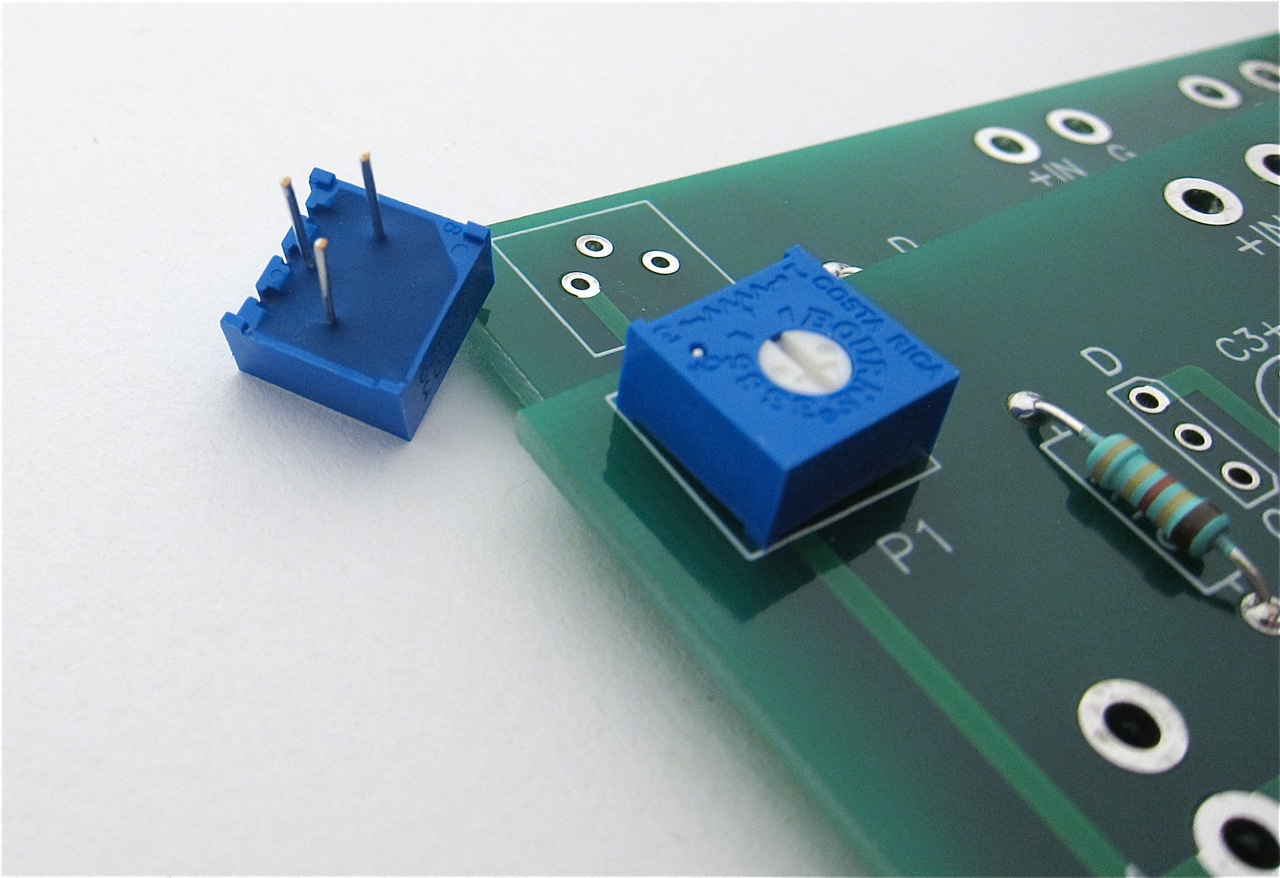
The potentiometers have three leads in a triangular formation, they are impossible to insert backwards.
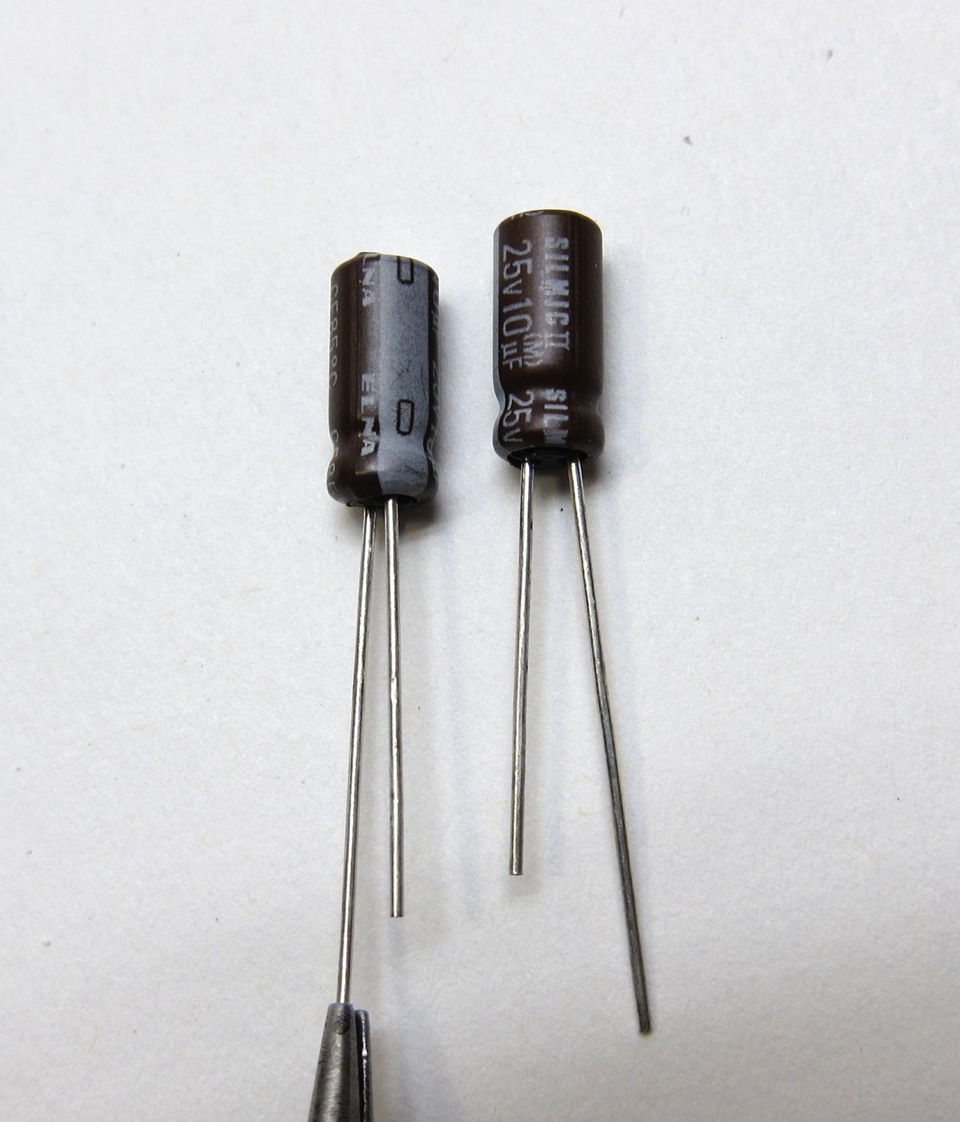
Capacitors have polarity - the long leg is Positive +, and the mark on the can shows negative -
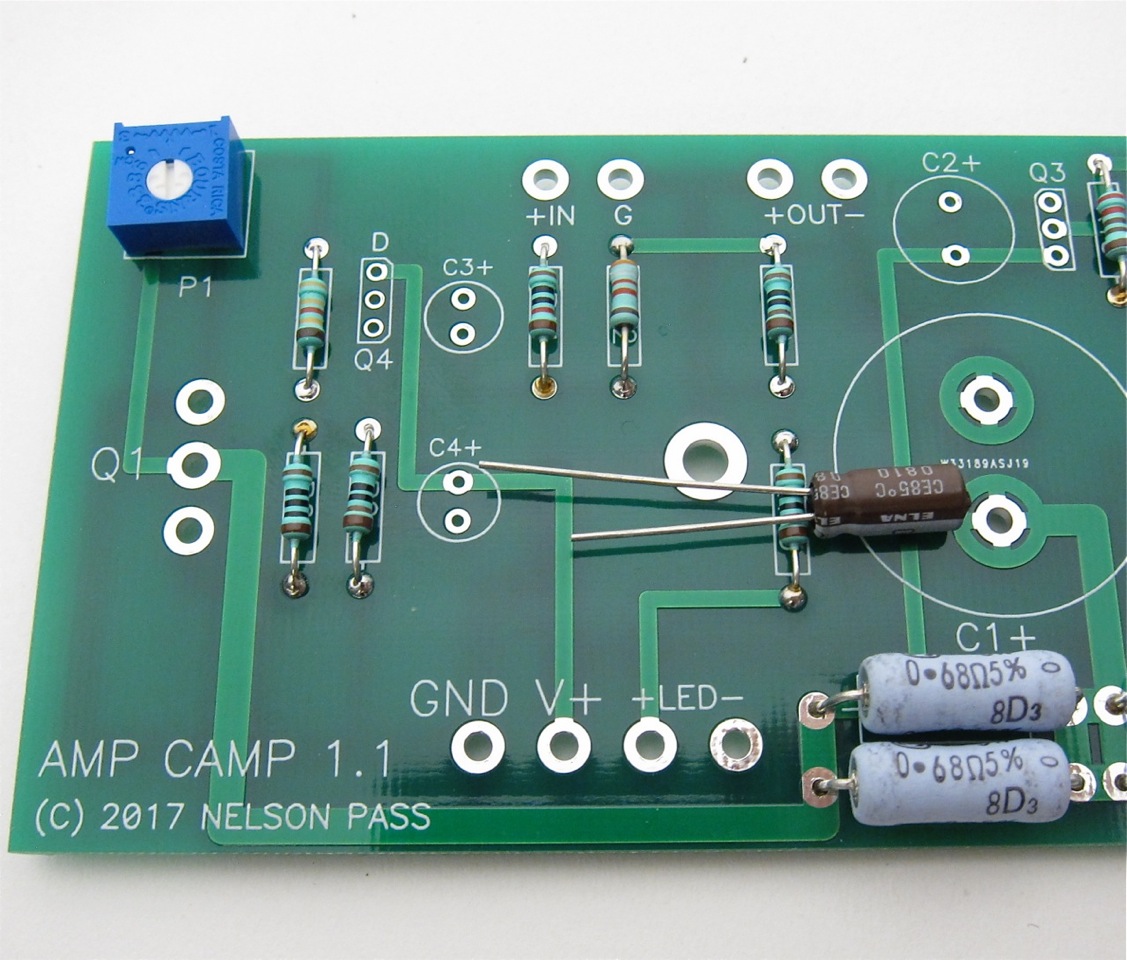
Long leg in the positive marked hole
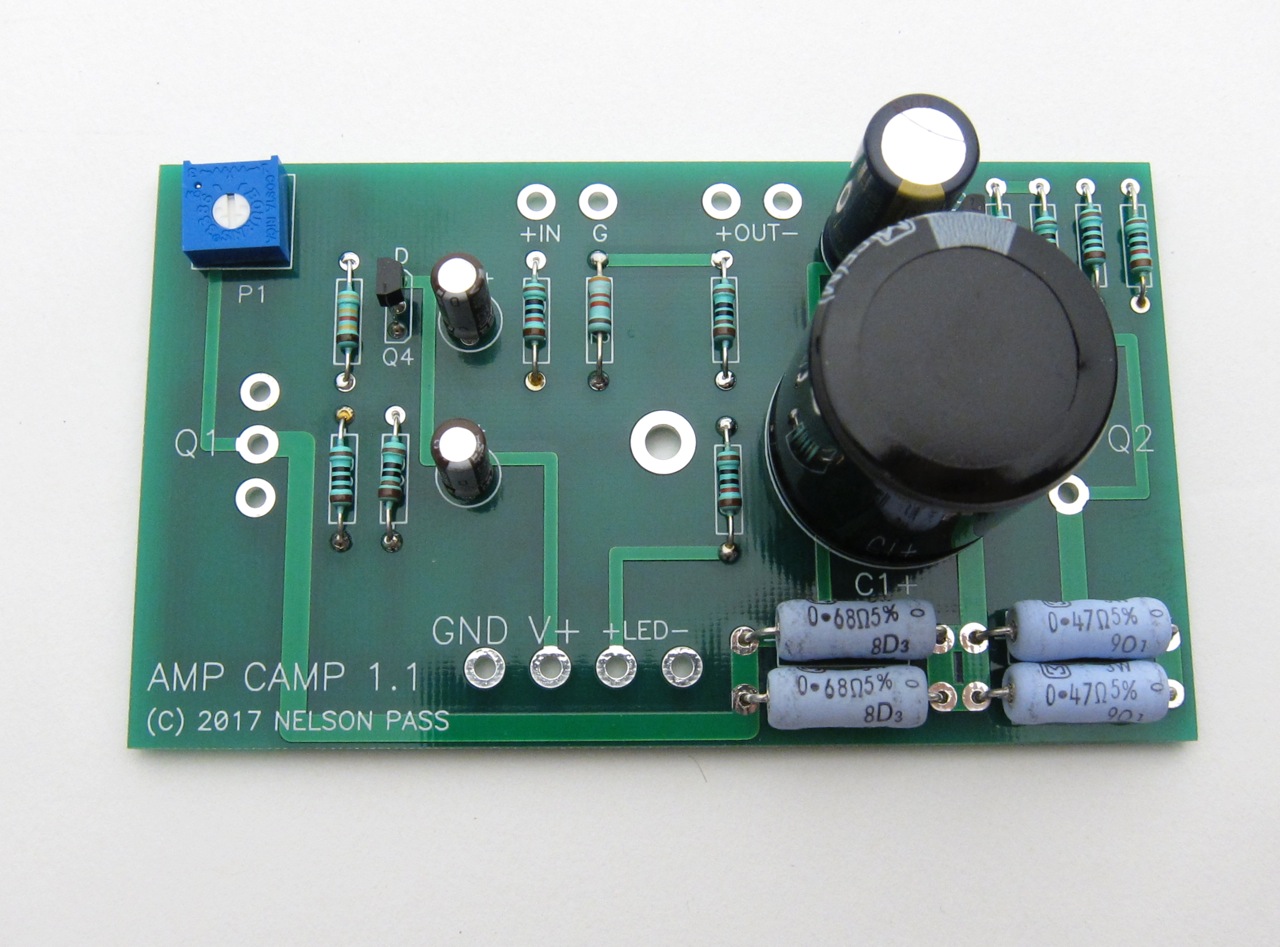
Everything on PCB except the big power transistors.
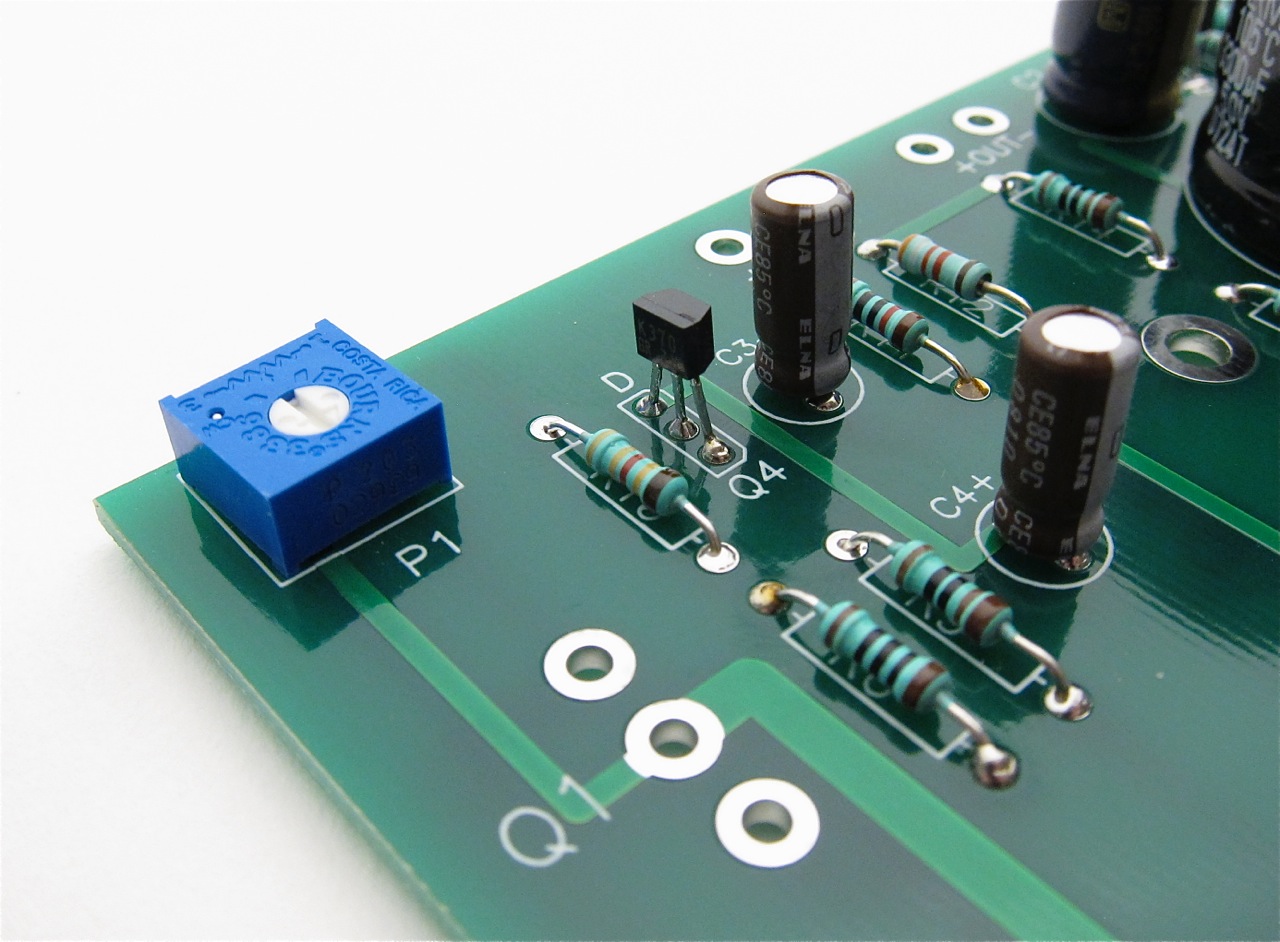
Align the flat of the small transistors with the silkscreen as shown.
Q4 is the input Toshiba or LS Jfet, marked K370 or K170 on the flat of the package.
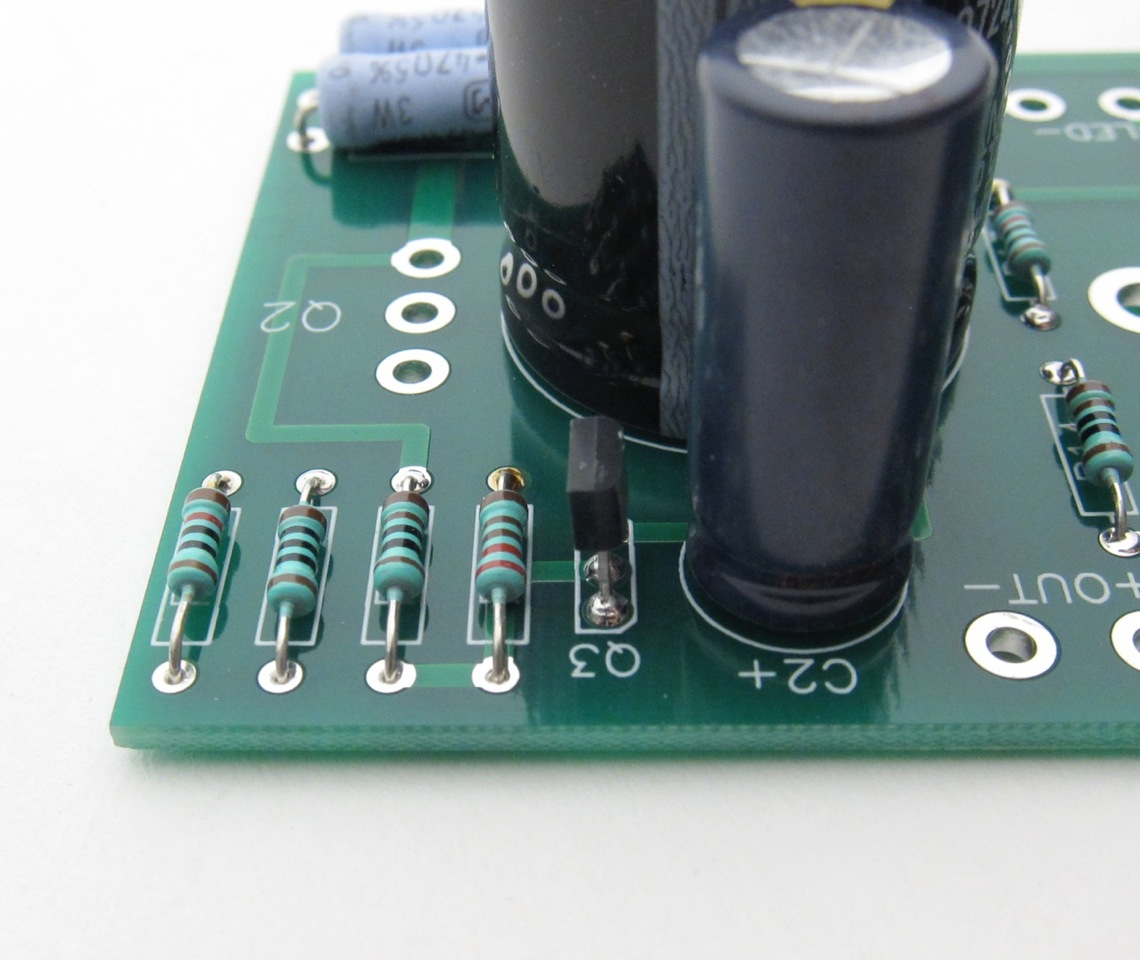
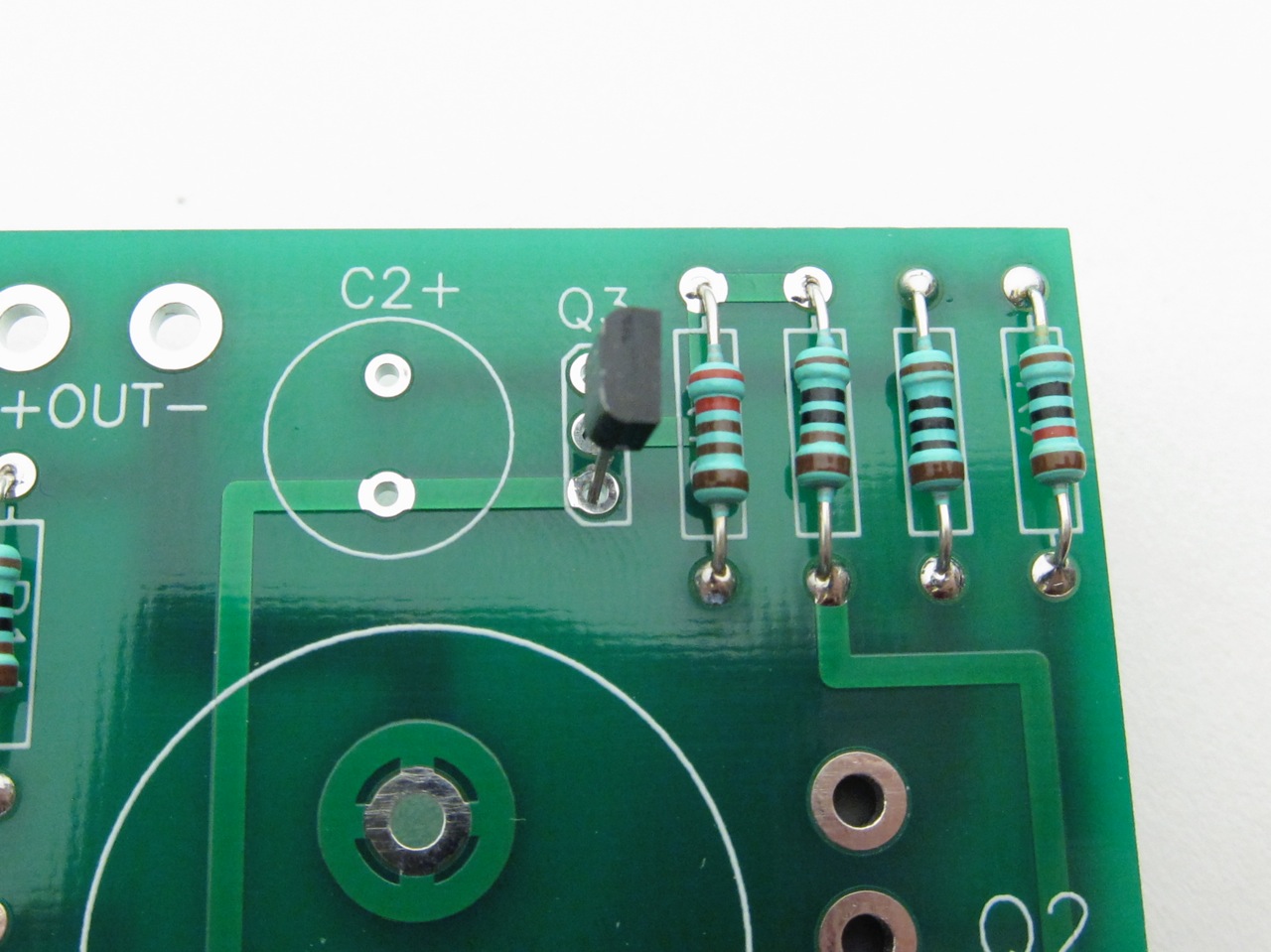
Q3 is the ZTX450 bipolar transistor. It's marked 450 on the back.
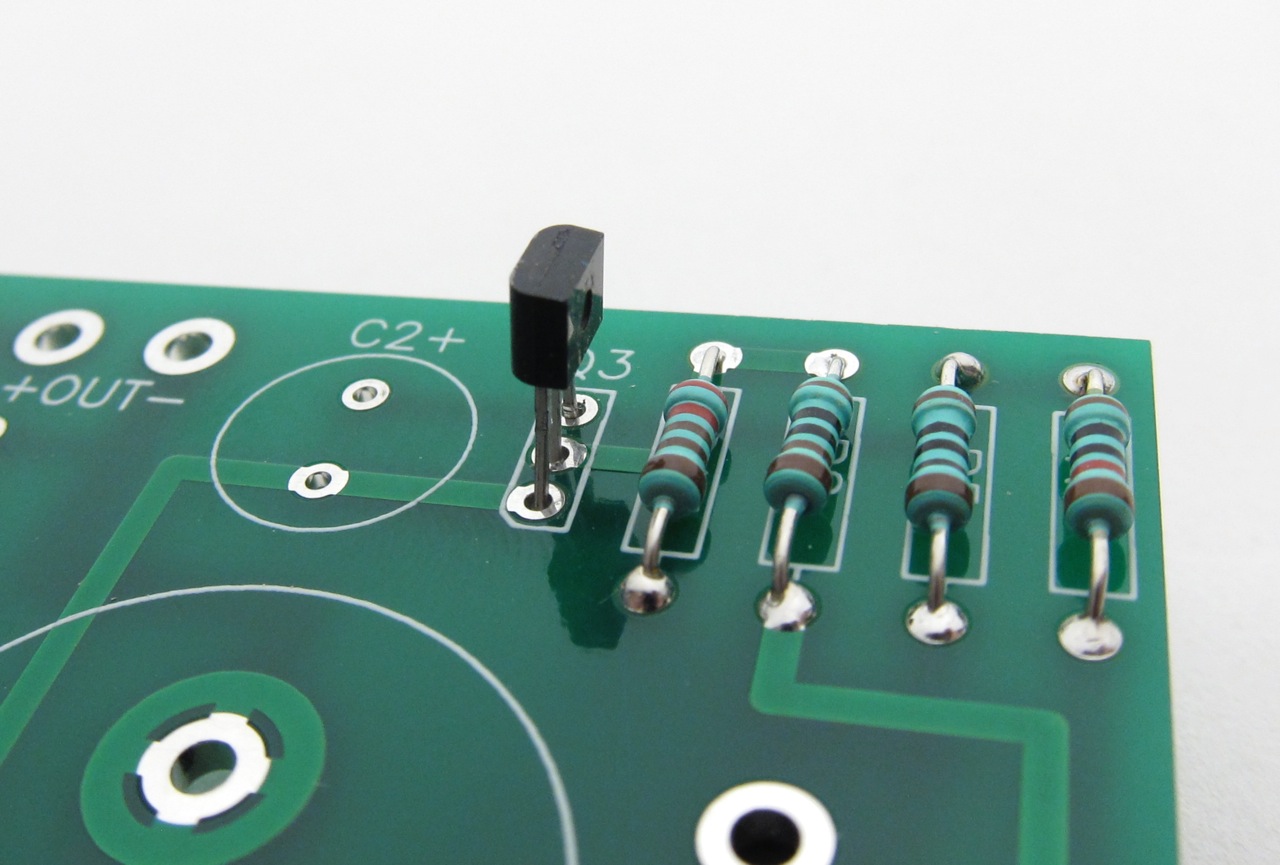
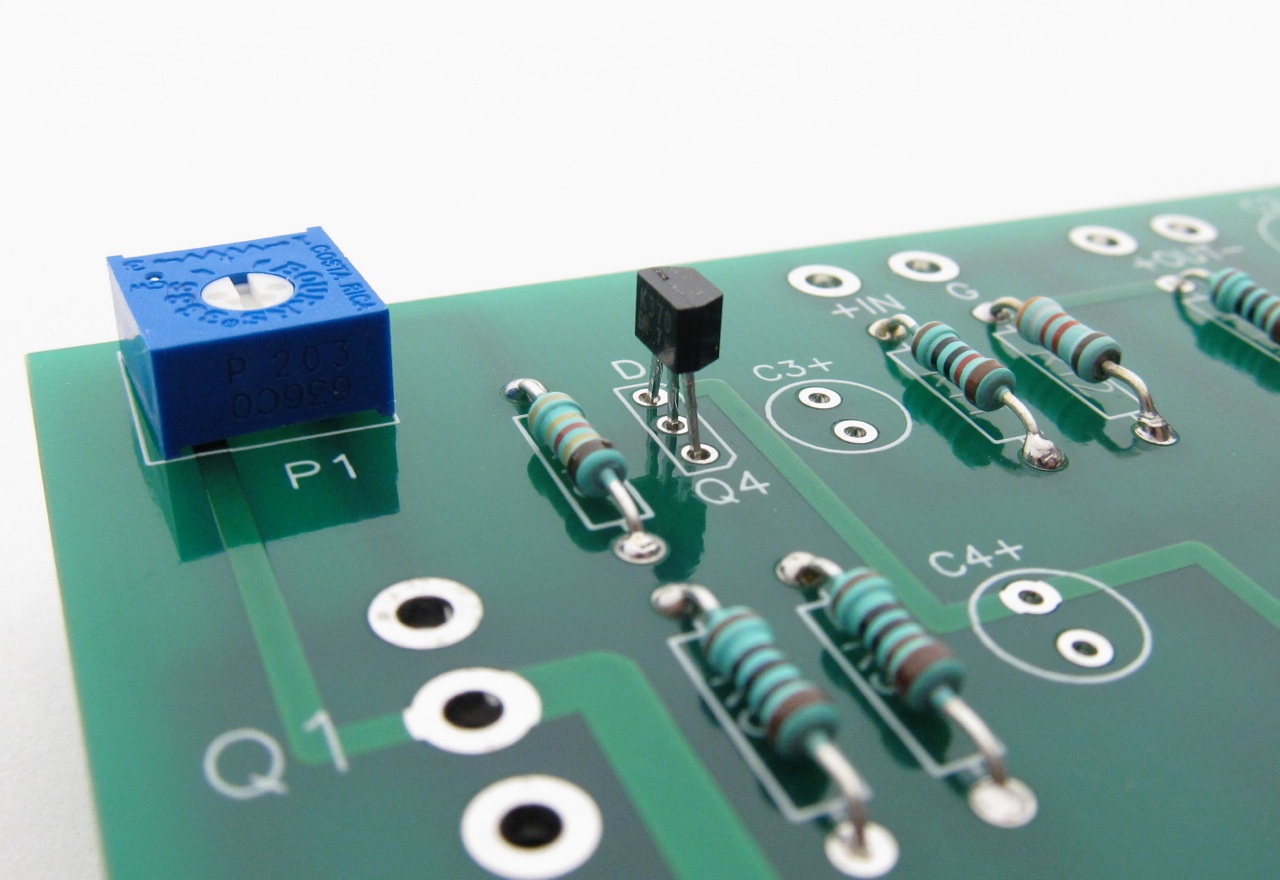
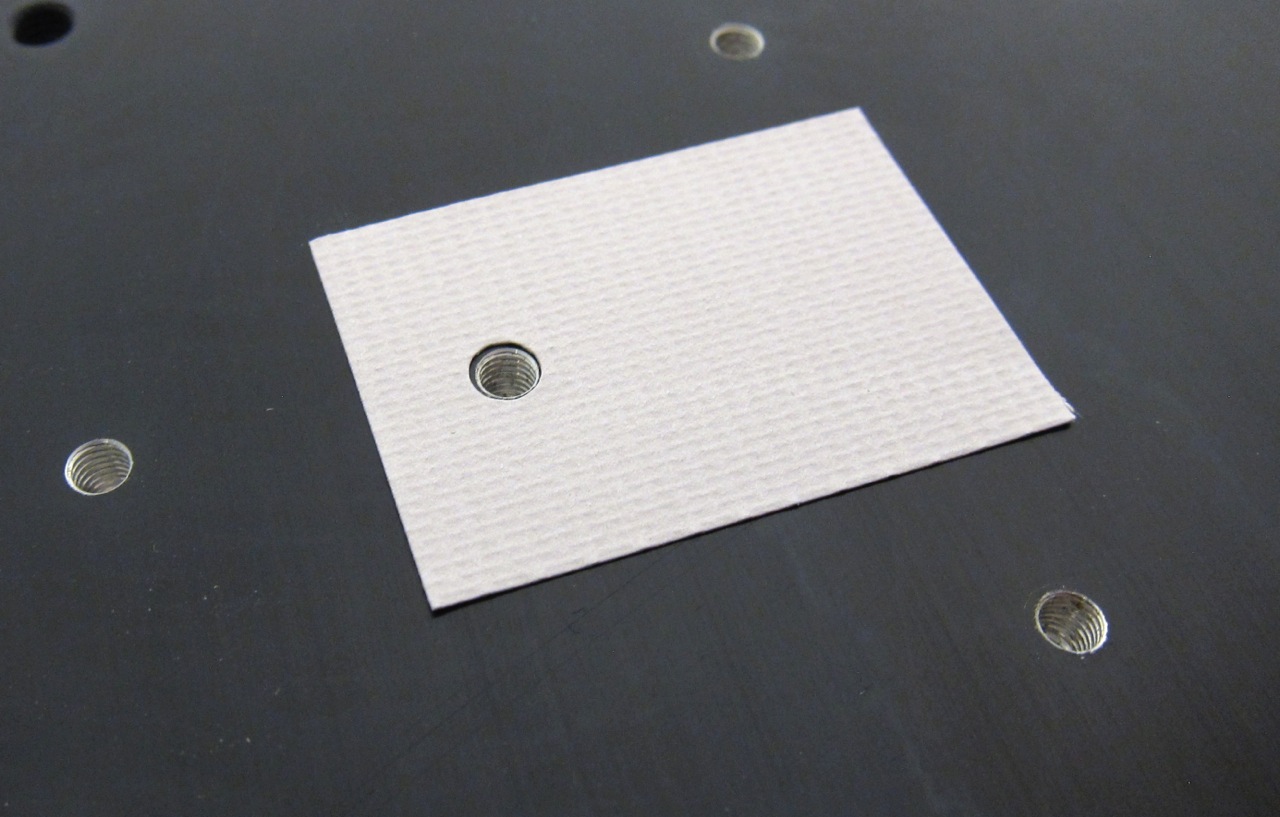
The Keratherm insulator is the thinner rubbery pink stuff. The brown material (not shown) is just the backing.
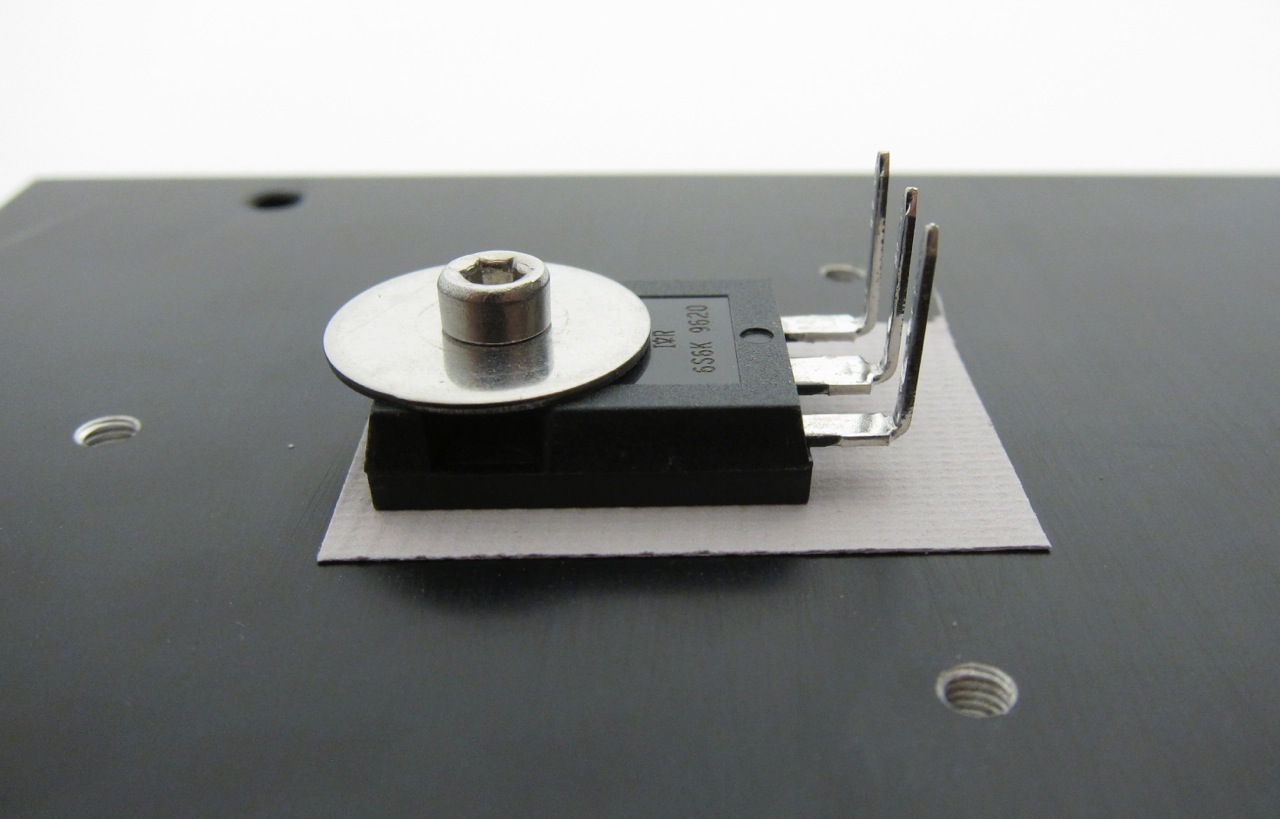
Big transistors mount as shown here, and gently bend the legs up right at the point that they narrow.
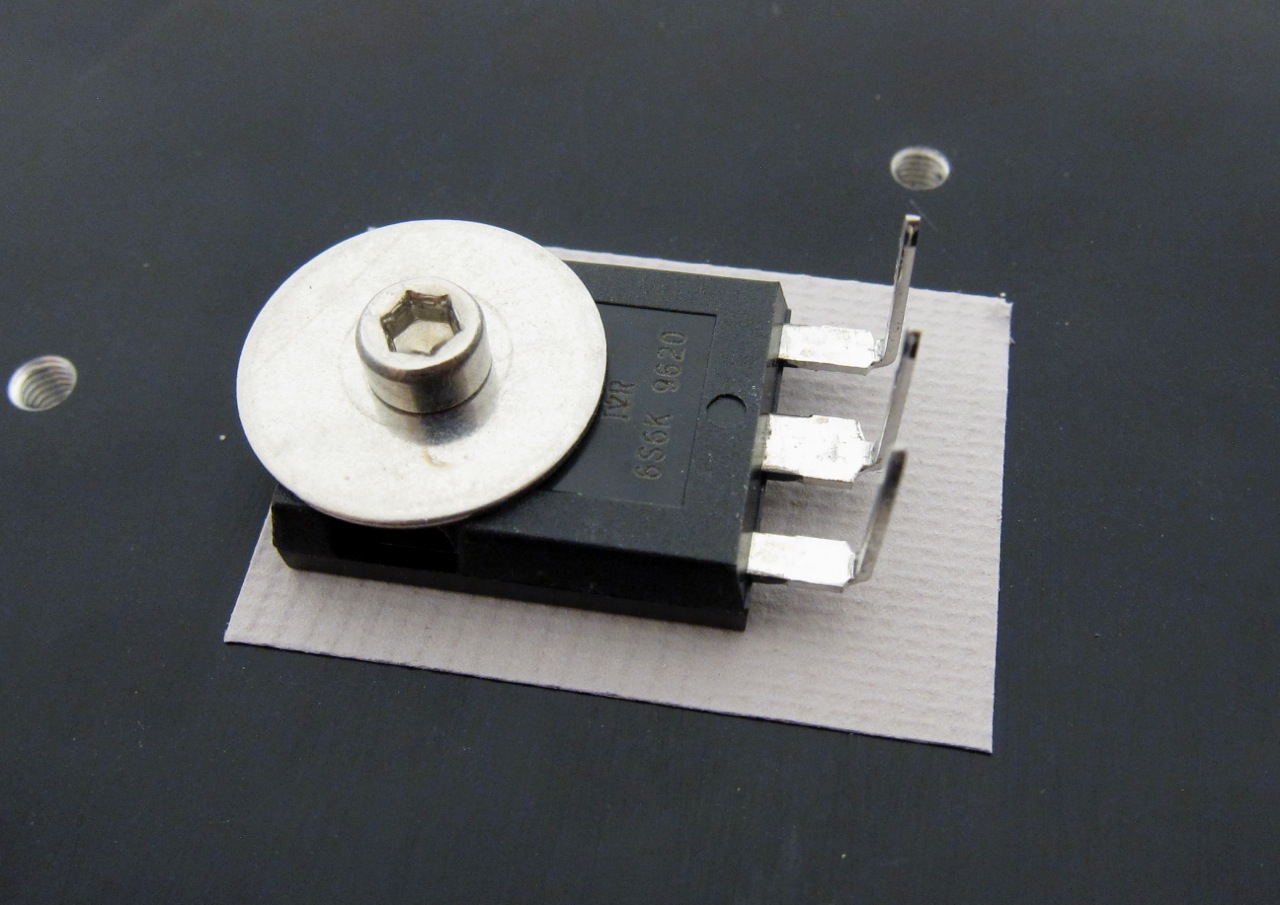
There should be a lock washer (split washer, spring washer) between the fender washer and the screws. I will correct the photos in the near future.
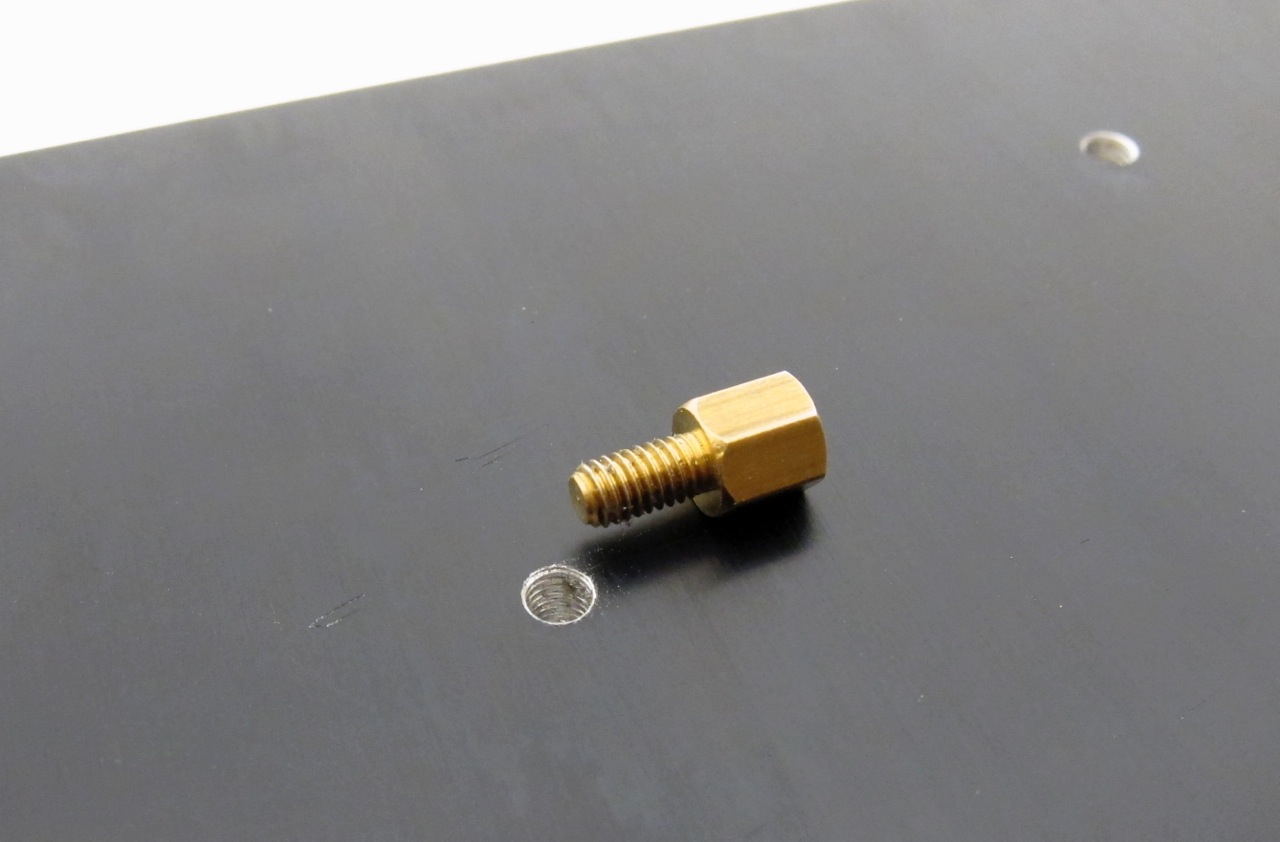
Before mounting circuit board, attach one brass standoff to the heatsink. Do not over-tighten!
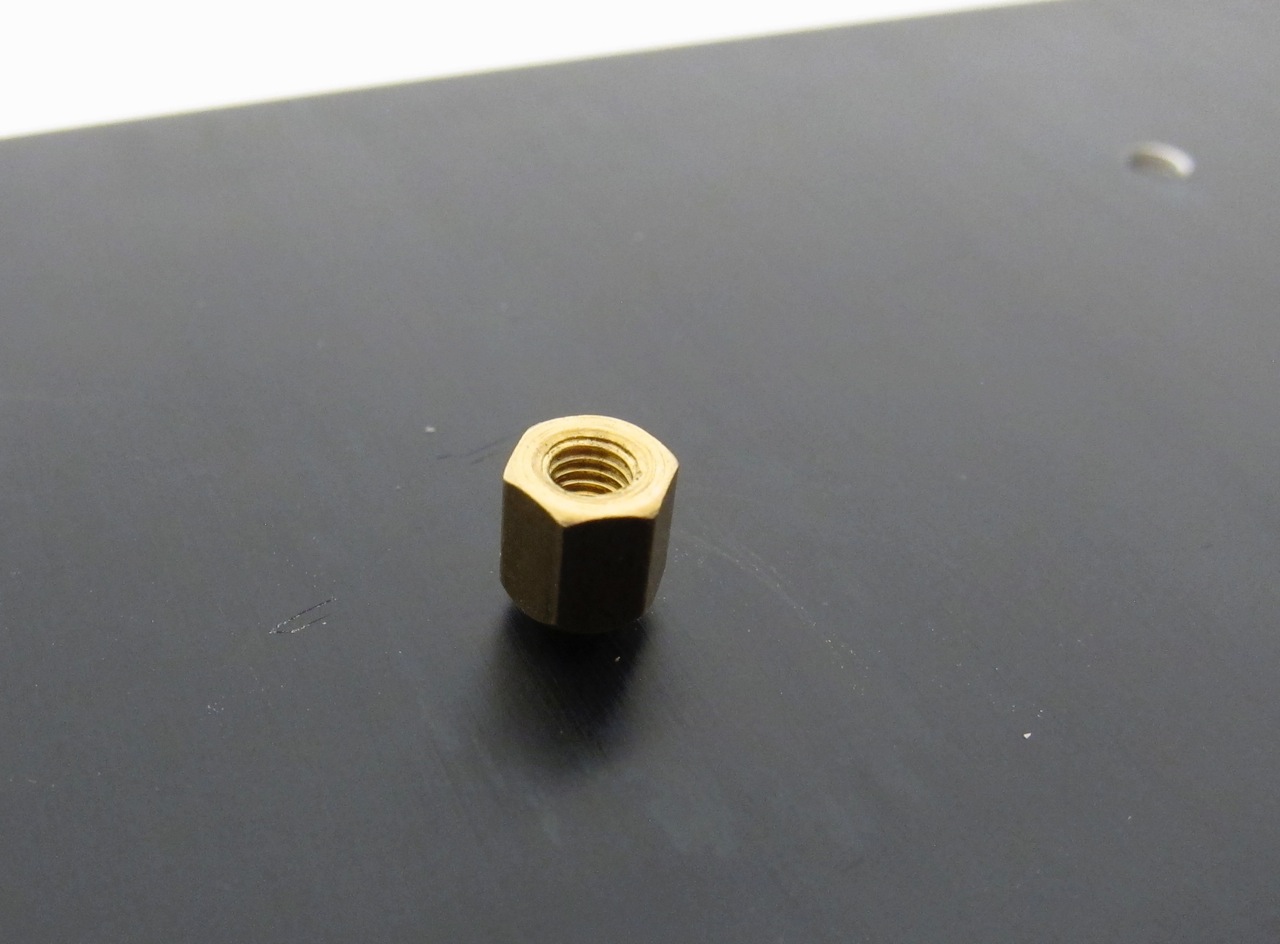
It does not have to insert all the way flush into the heatsink.
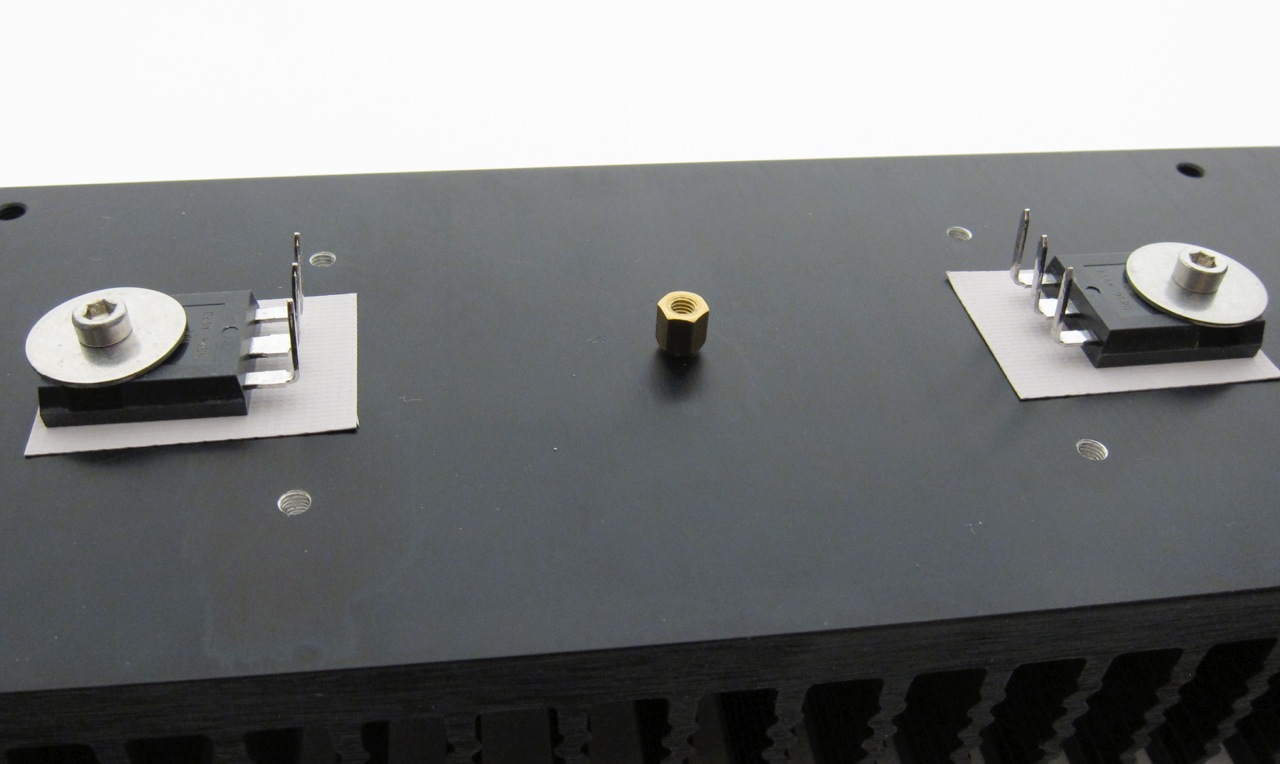
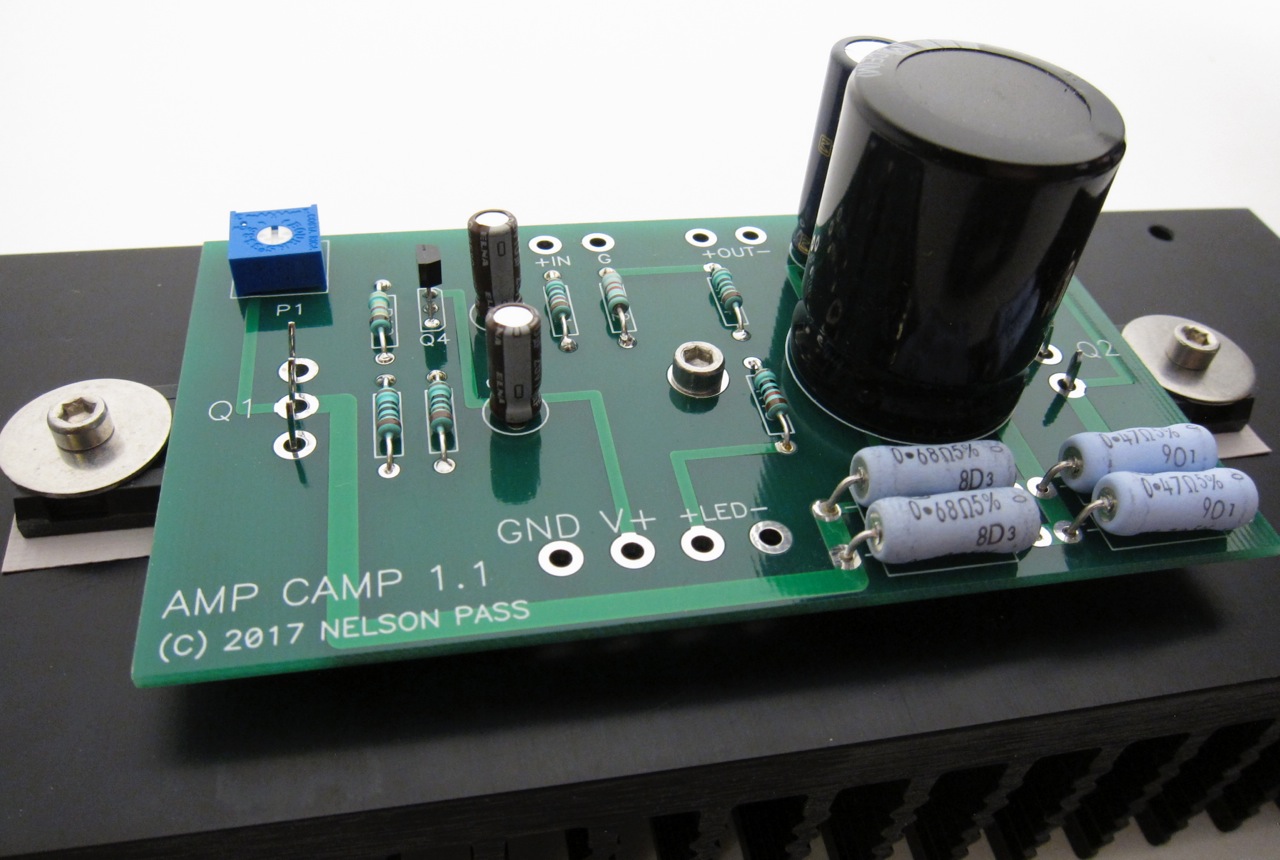
One screw and washer to hold the PCB to the center standoff, and align the big transistor legs with the holes.
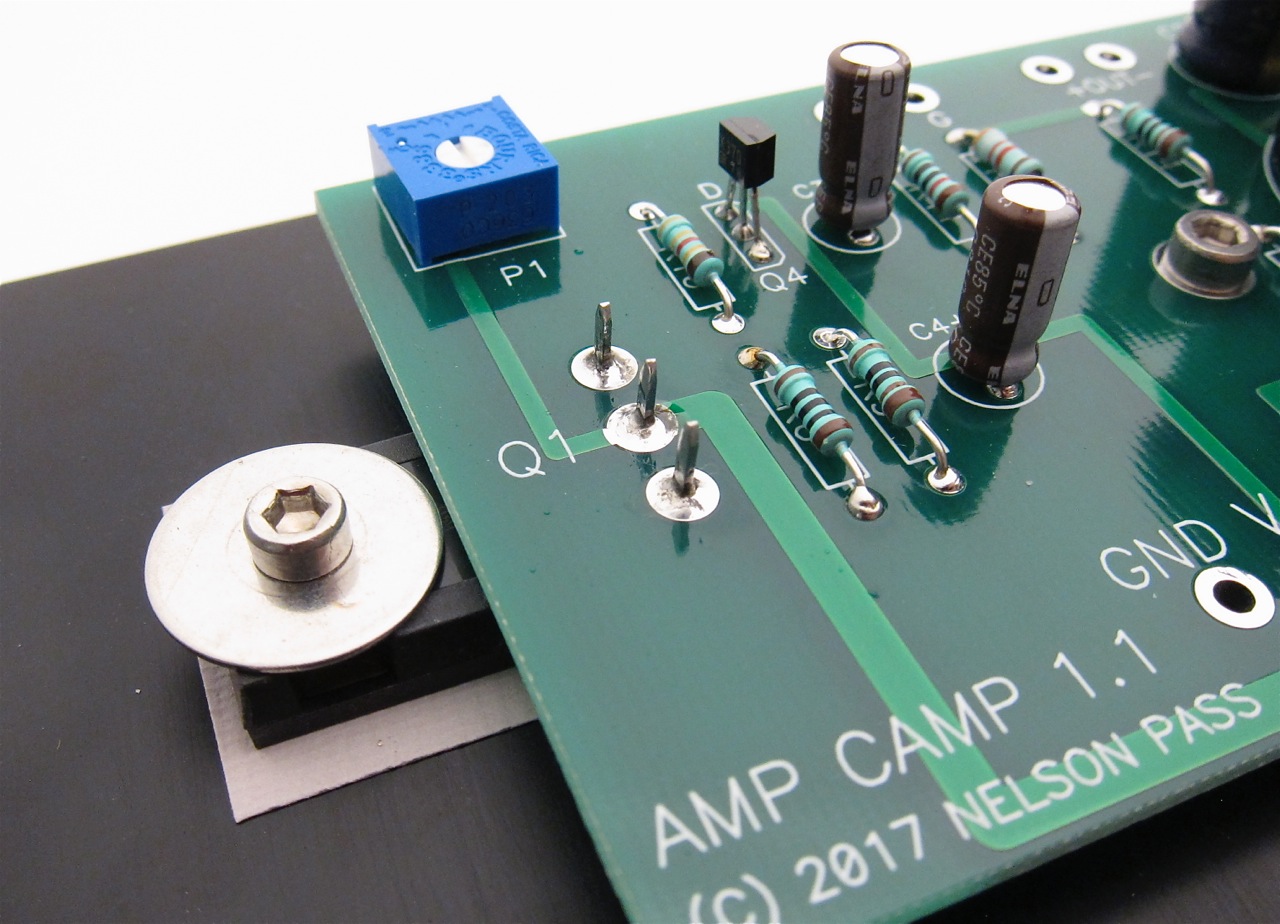
Solder the transistors.
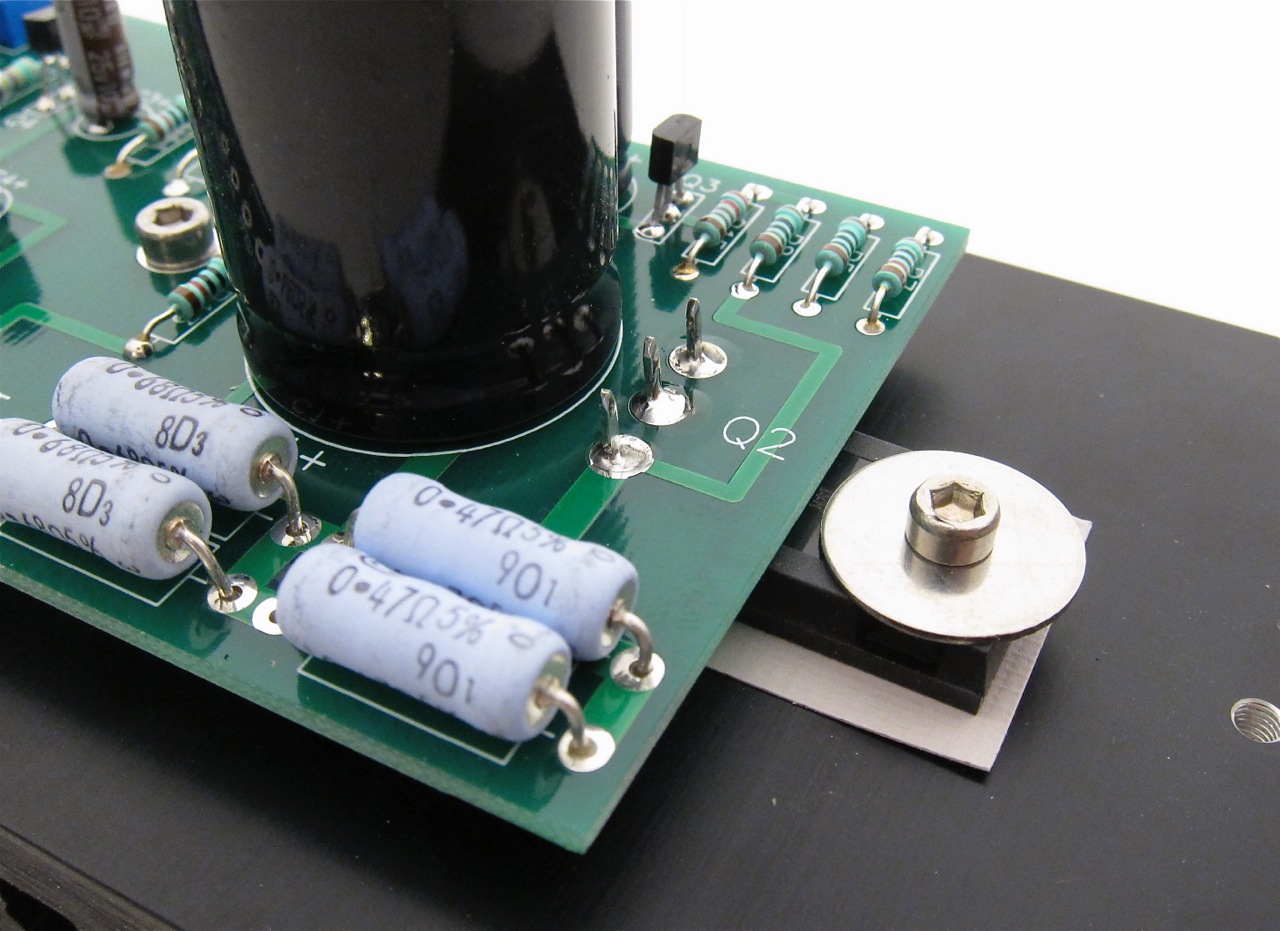
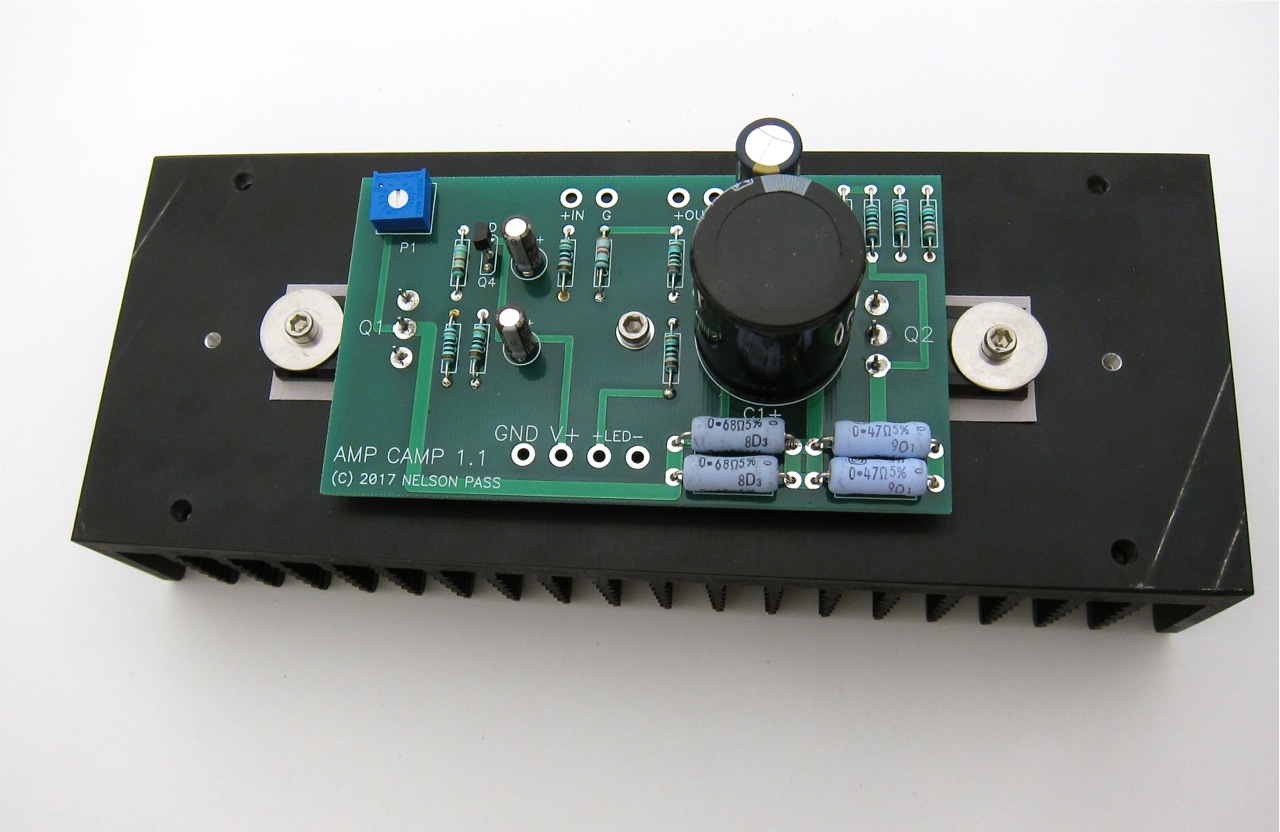
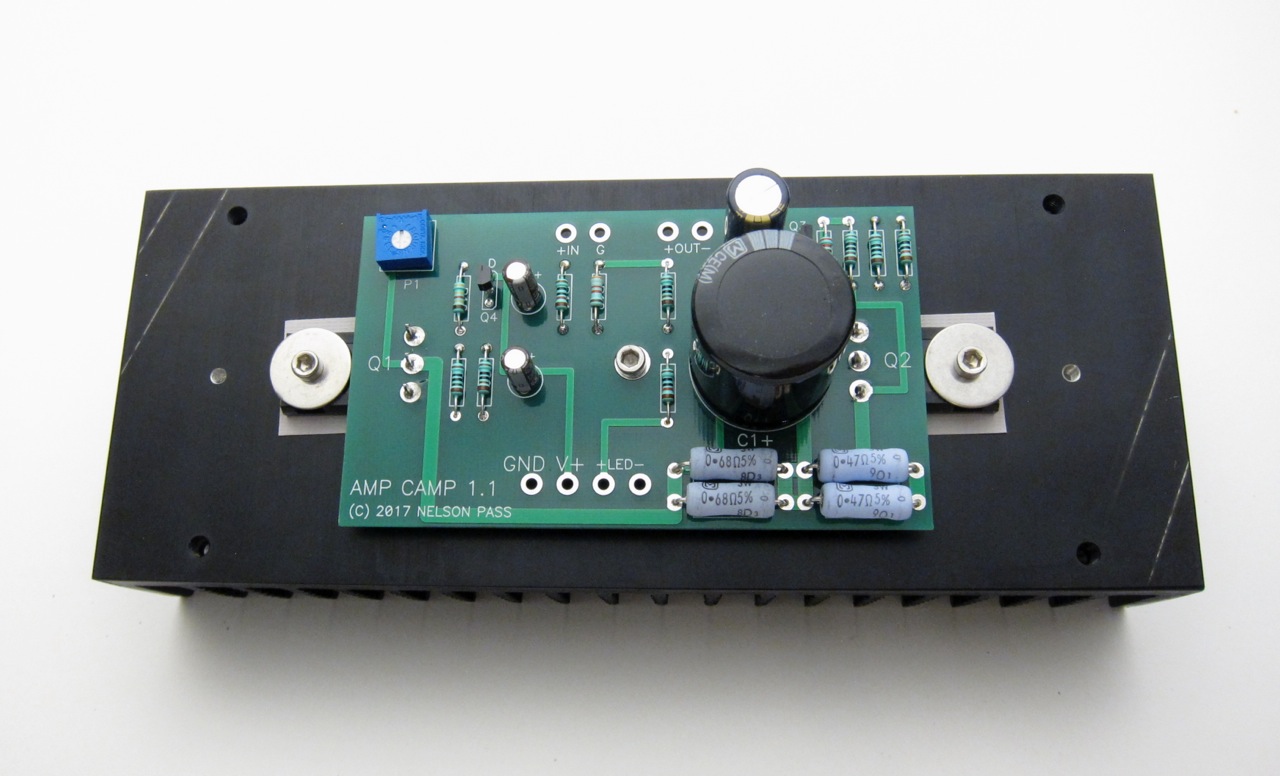

Resistors, pots, capacitors.

PCB and Keratherm insulators


The components that solder to the circuit boards

Measure EVERYTHING before placing in the board. 🙂 And have the schematic printed in front of you at all times.

Generally it's easiest to start stuffing the PCBs with the smallest components first - in this case the resistors.

Note the 1% resistors all have a brown band at one end - to help assist troubleshooting in the future if needed, place the brown at the bottom of all resistors.

Slightly bend out leads before soldering

The big and little resistors in their places. Note the large resistors have the value printed right on them - try to bend the leads so the values show and align as shown.

If you hold the PCB up to the light, you can see if you missed any solder holes.

Arrange resistors with values showing.

The potentiometers have three leads in a triangular formation, they are impossible to insert backwards.

Capacitors have polarity - the long leg is Positive +, and the mark on the can shows negative -

Long leg in the positive marked hole

Everything on PCB except the big power transistors.

Align the flat of the small transistors with the silkscreen as shown.
Q4 is the input Toshiba or LS Jfet, marked K370 or K170 on the flat of the package.


Q3 is the ZTX450 bipolar transistor. It's marked 450 on the back.



The Keratherm insulator is the thinner rubbery pink stuff. The brown material (not shown) is just the backing.

Big transistors mount as shown here, and gently bend the legs up right at the point that they narrow.

There should be a lock washer (split washer, spring washer) between the fender washer and the screws. I will correct the photos in the near future.

Before mounting circuit board, attach one brass standoff to the heatsink. Do not over-tighten!

It does not have to insert all the way flush into the heatsink.


One screw and washer to hold the PCB to the center standoff, and align the big transistor legs with the holes.

Solder the transistors.



Last edited:
Chassis assembly
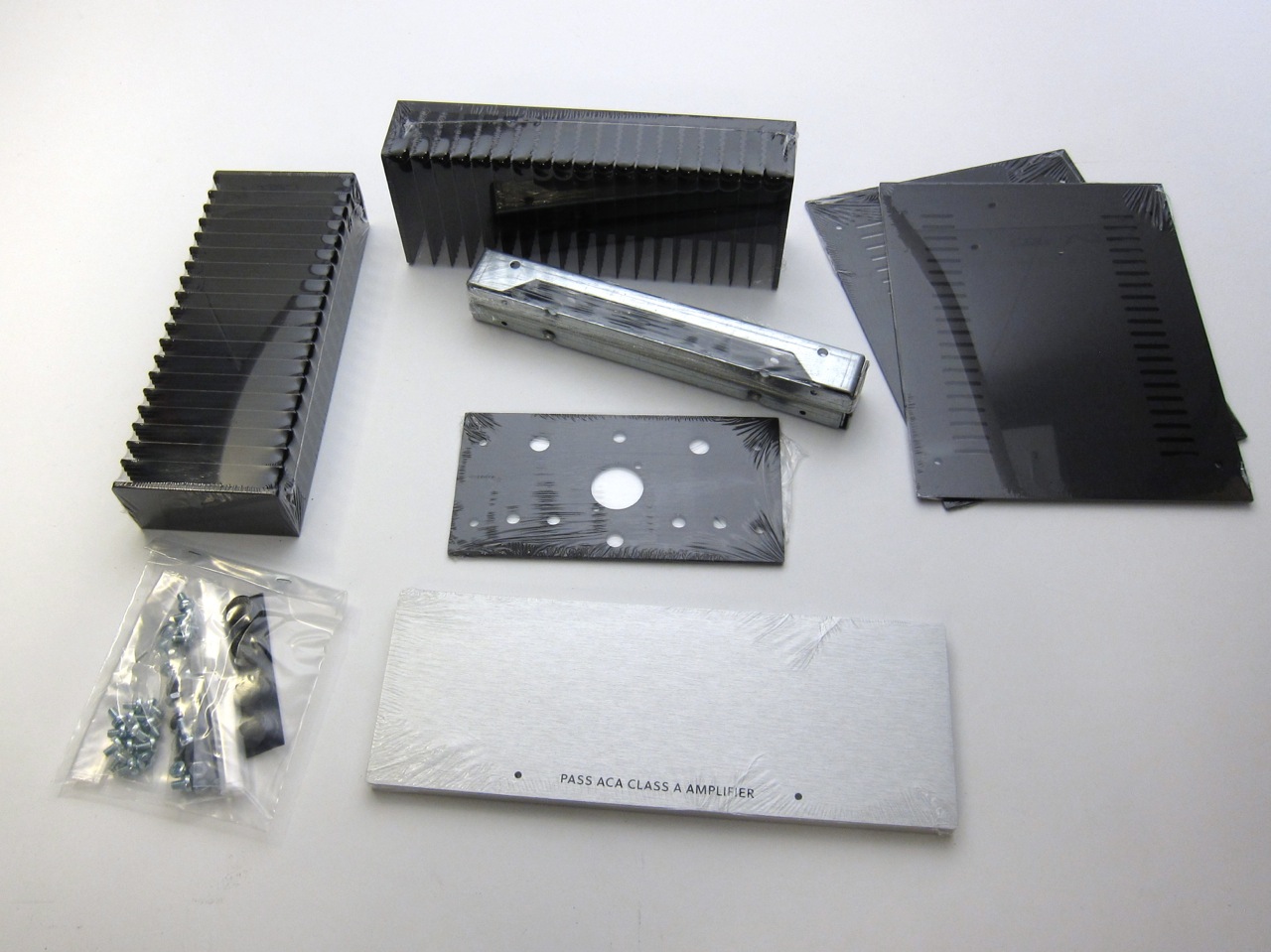
Chasis contents
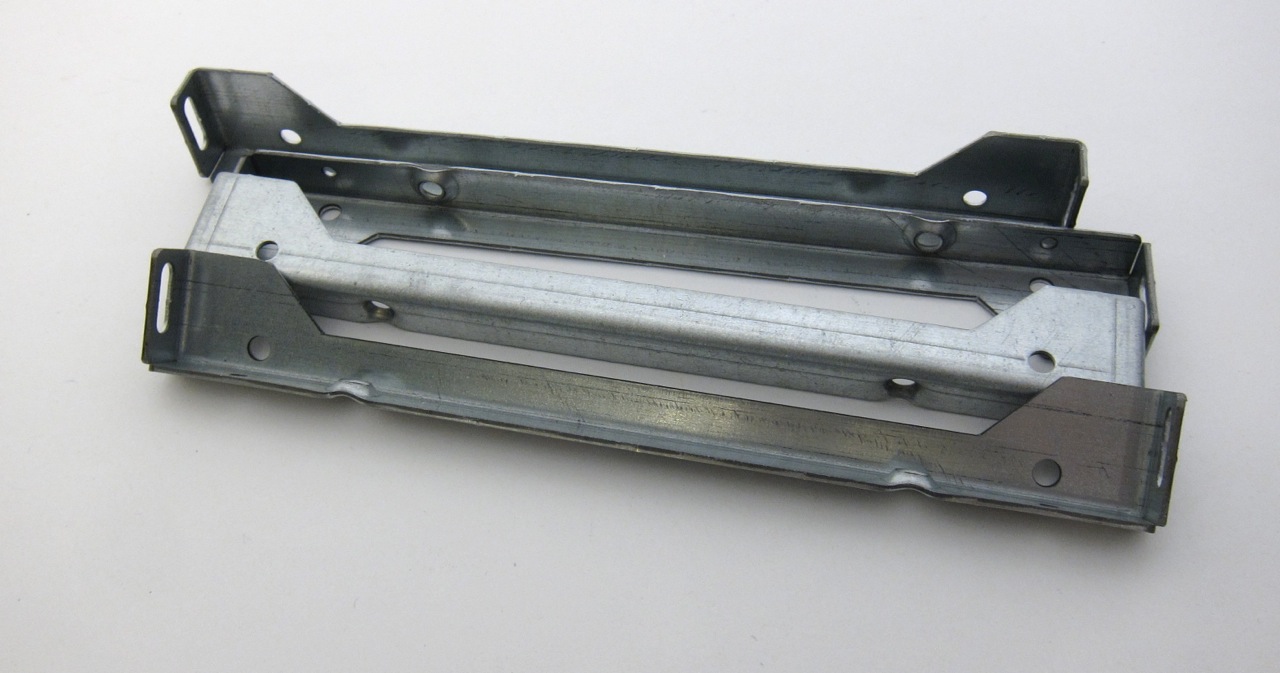
Heatsink rails
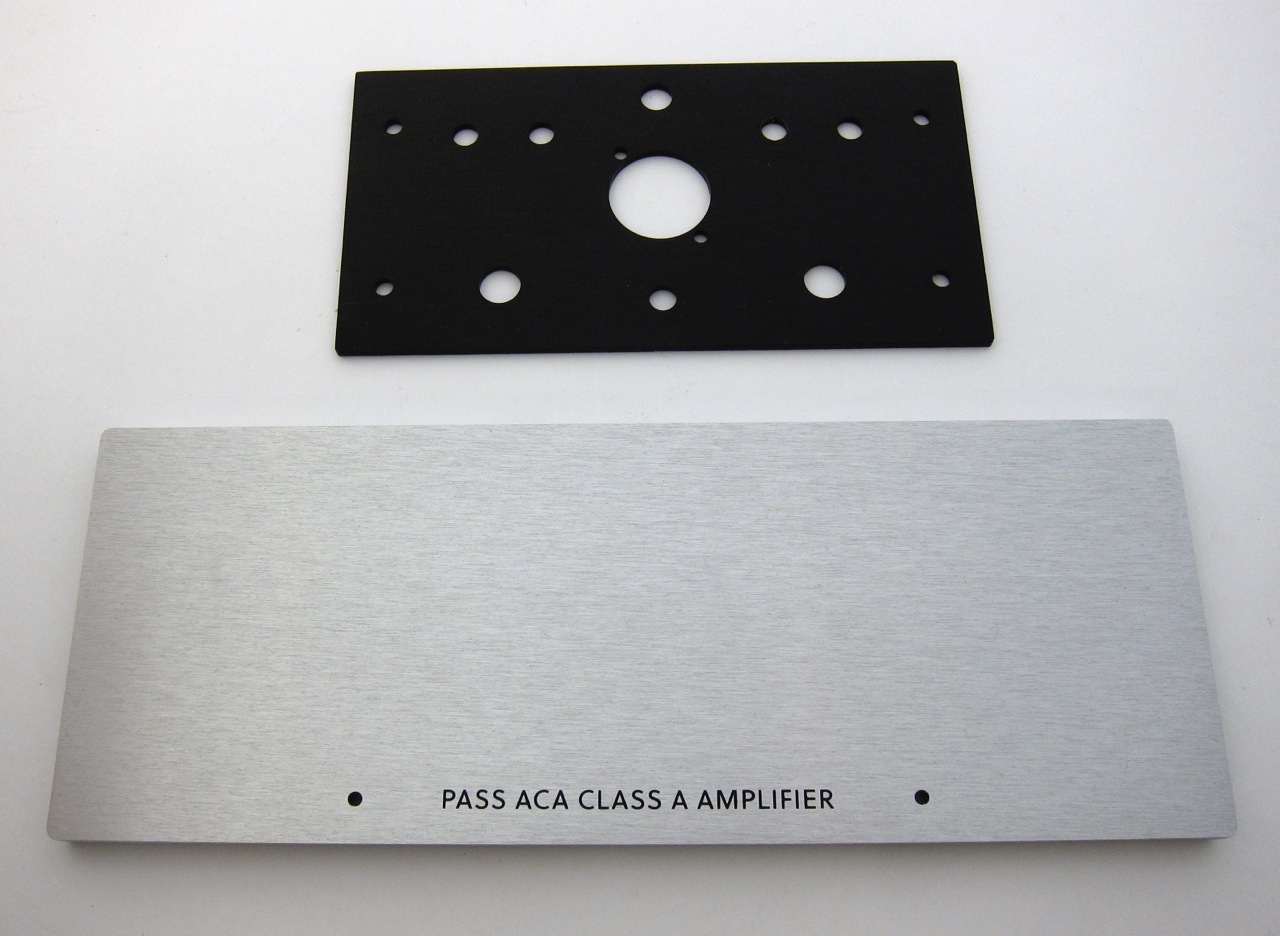
Front and rear panels
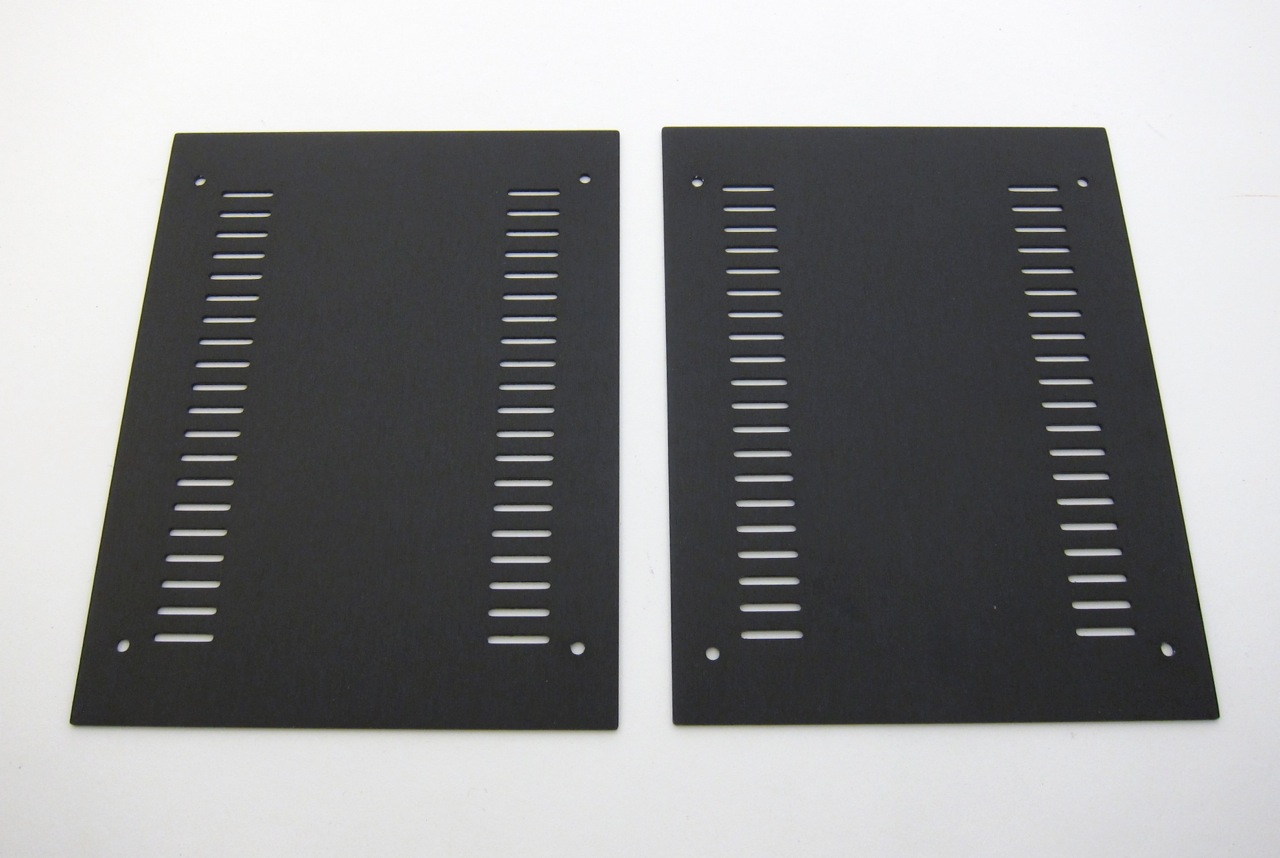
Ventilated top and bottom panels
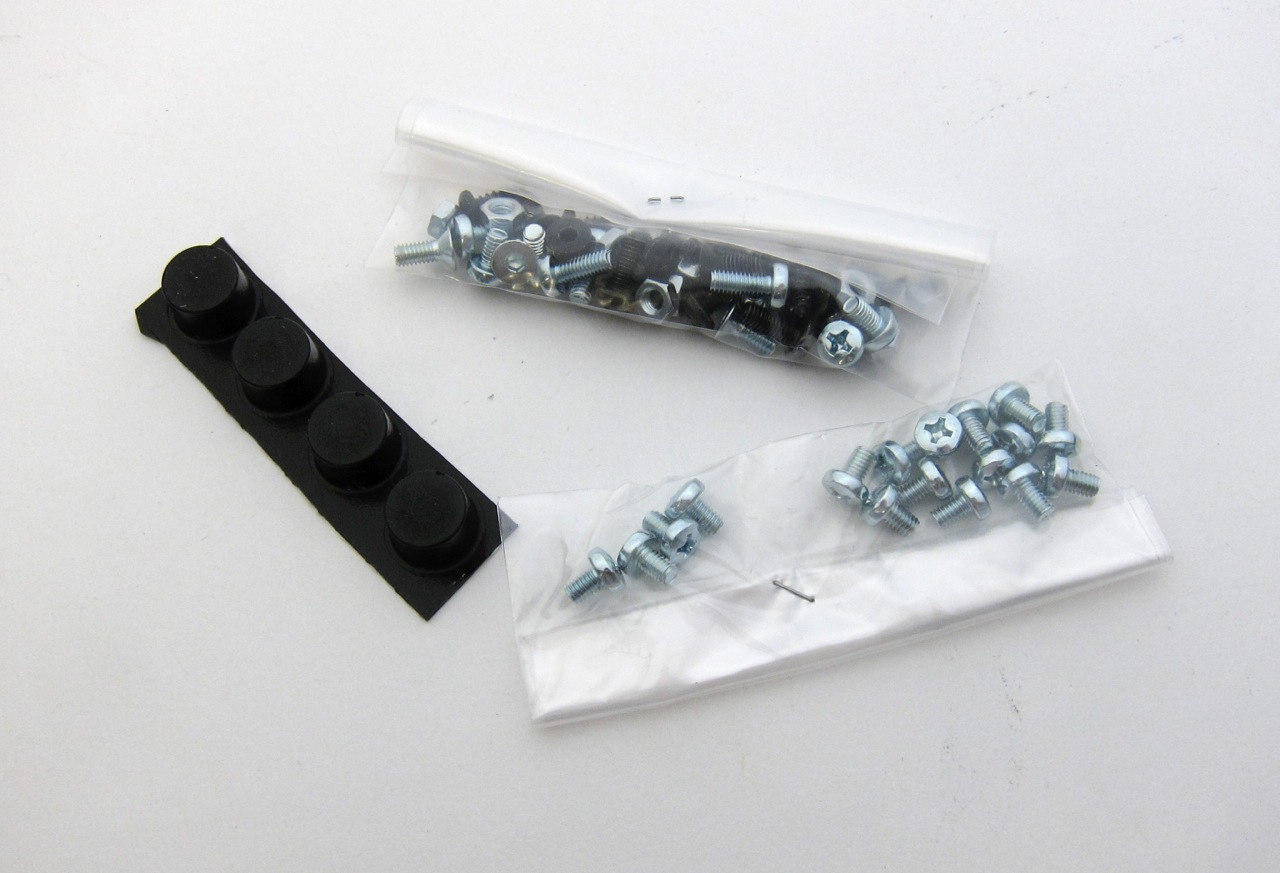
Hardware
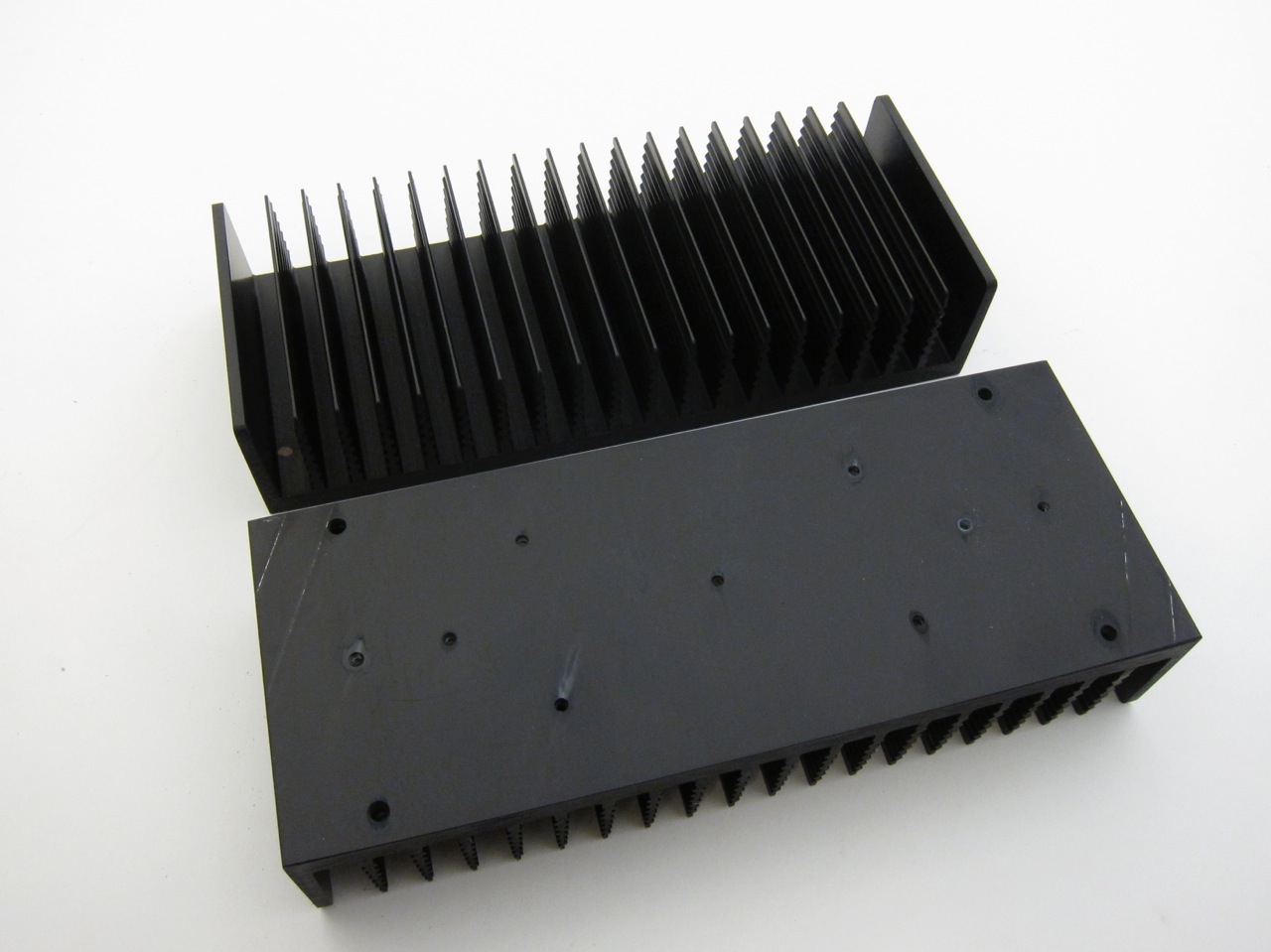
Heatsinks
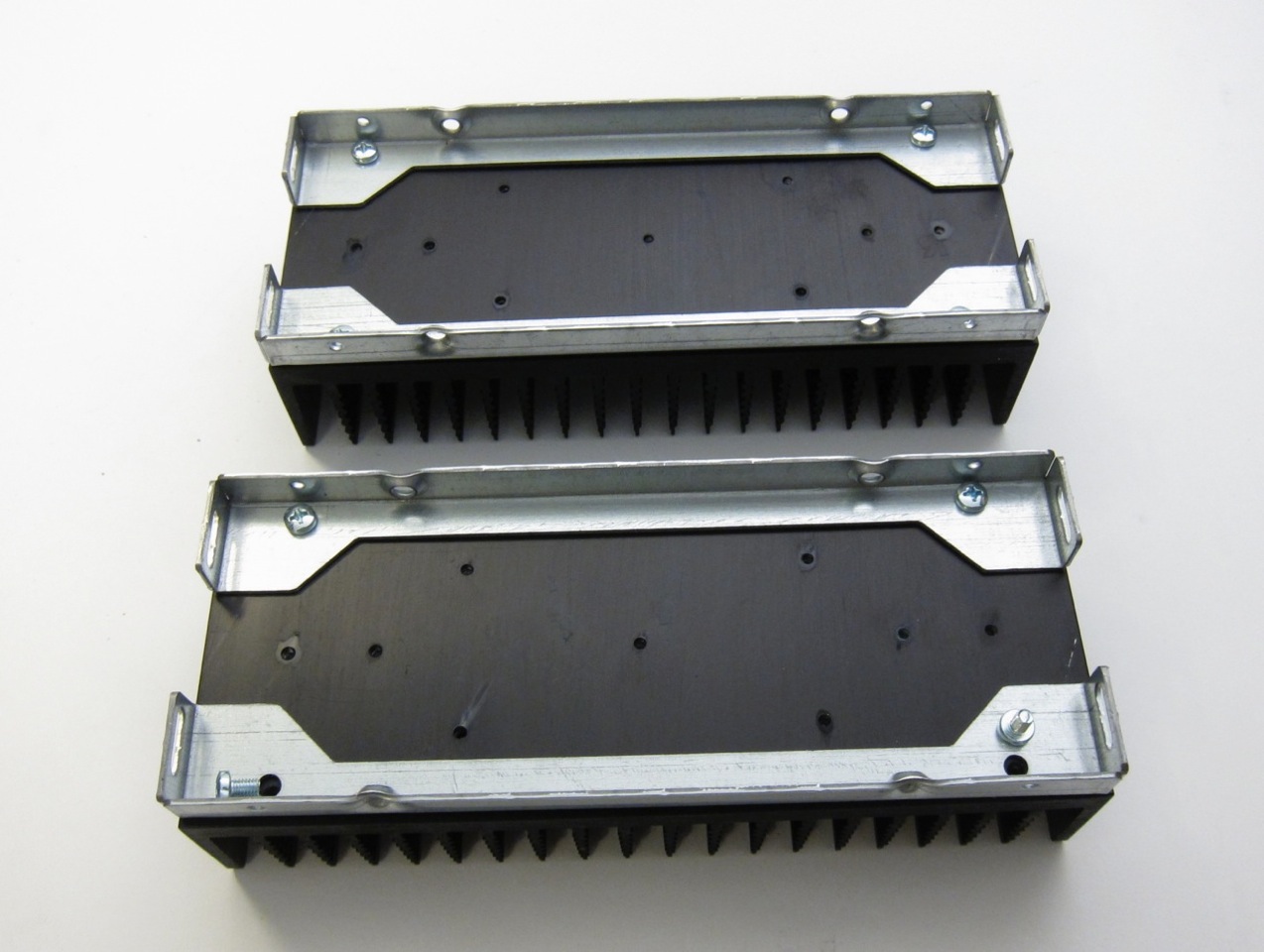
Rails attached to heatsinks
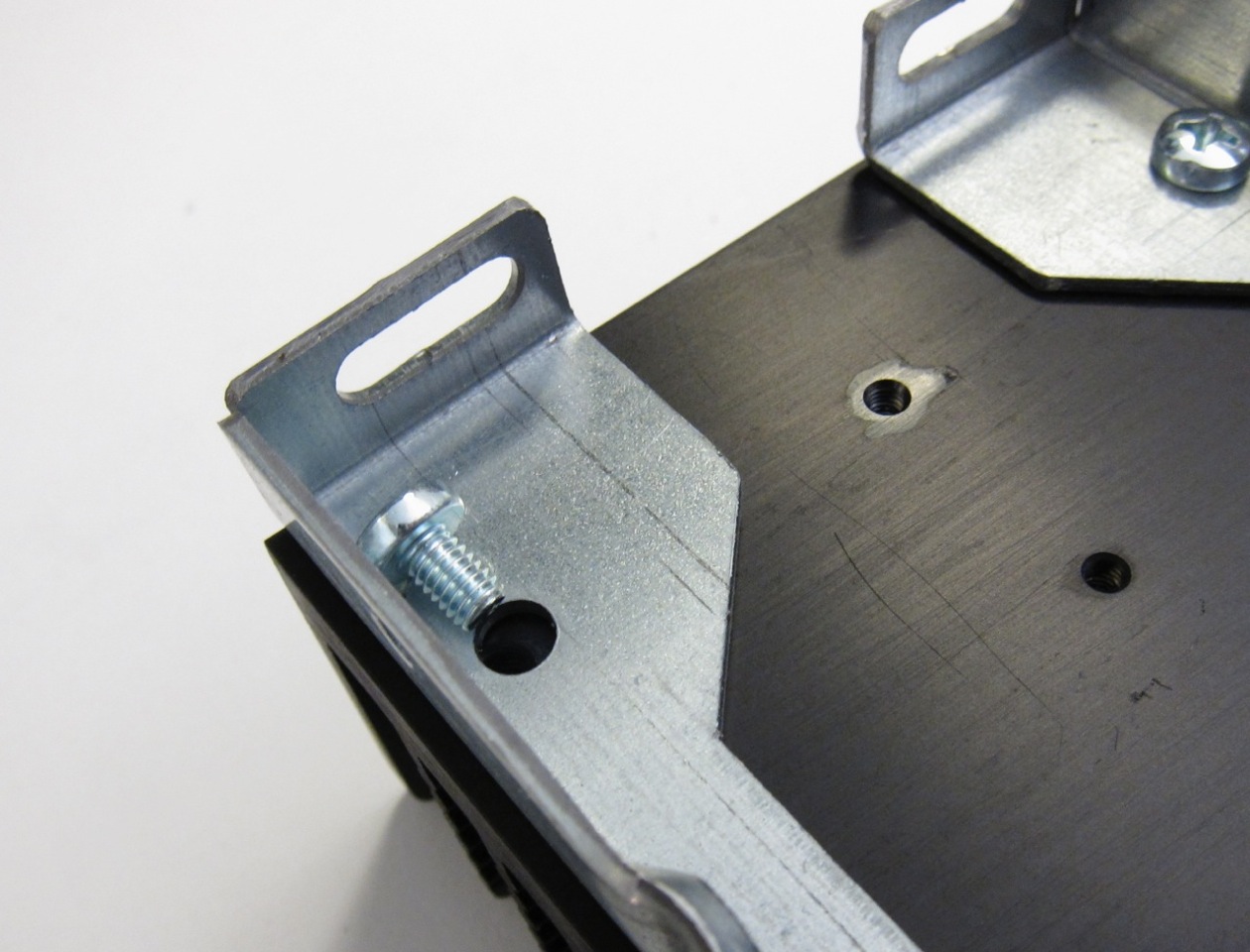
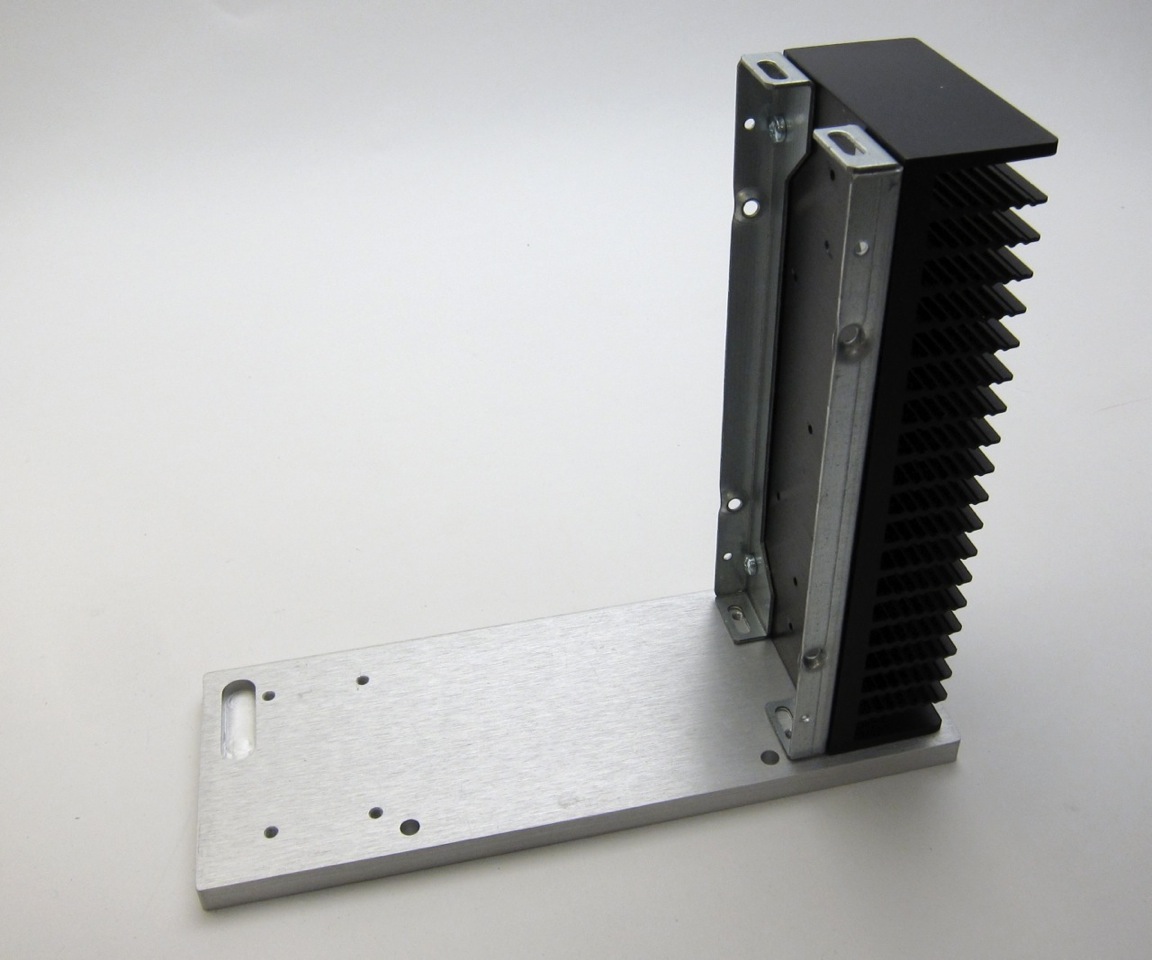
Align slots with the holes in the front panel
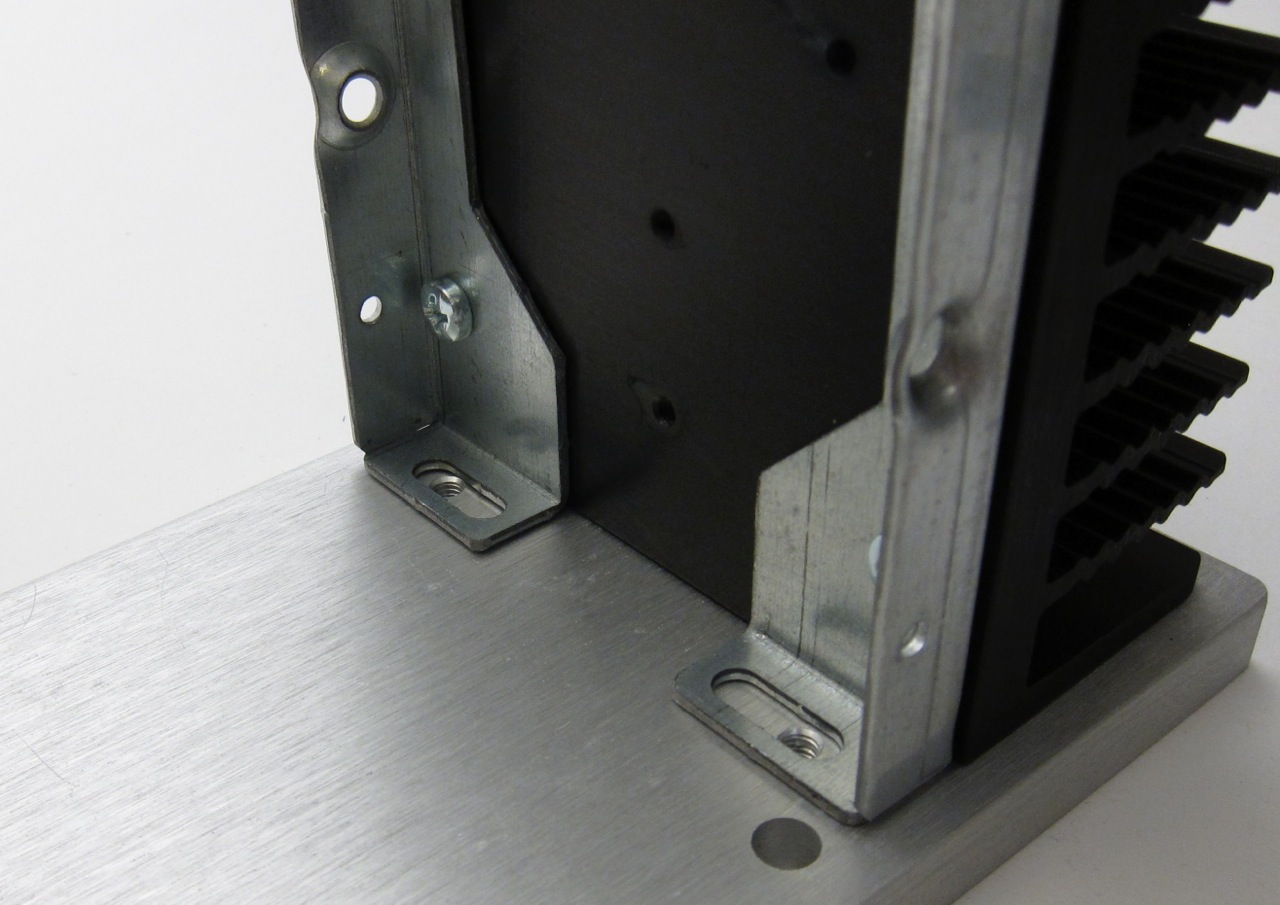
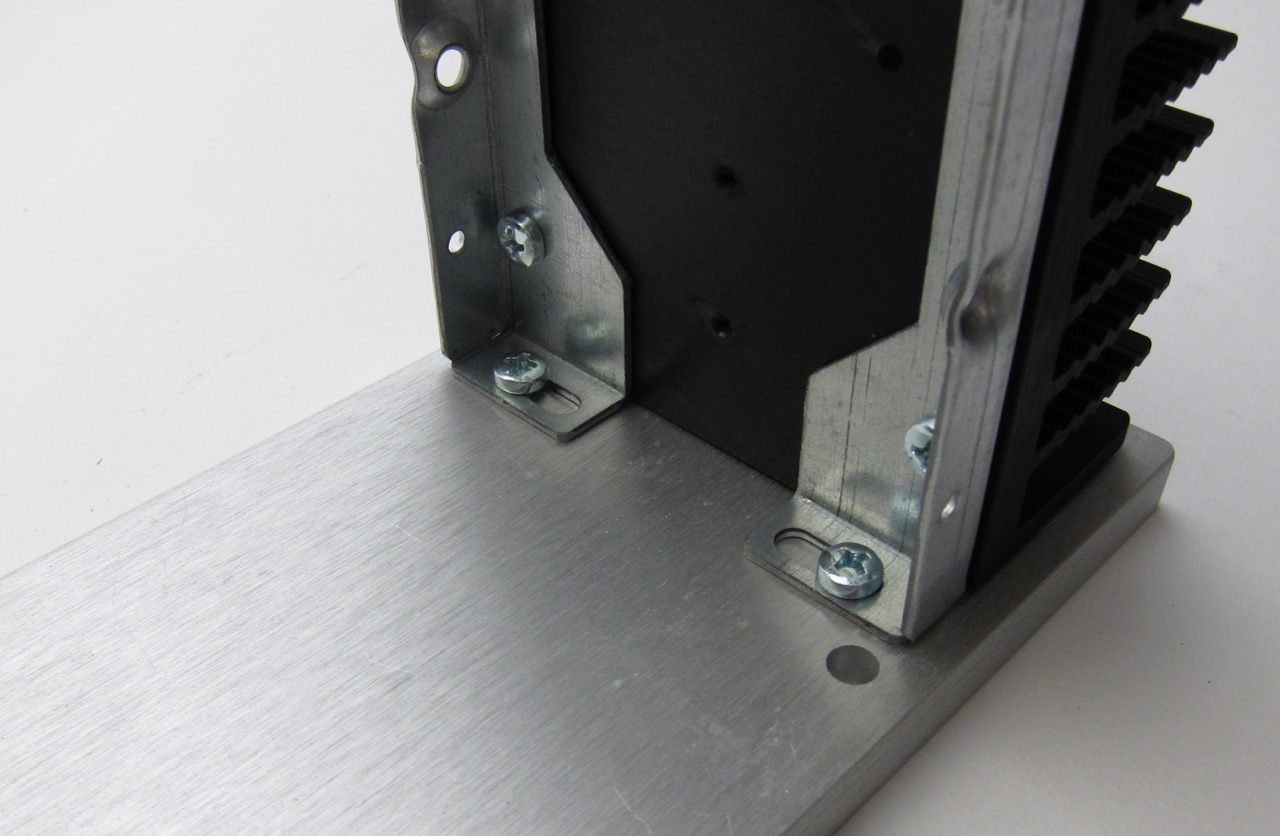
Screws insert as shown
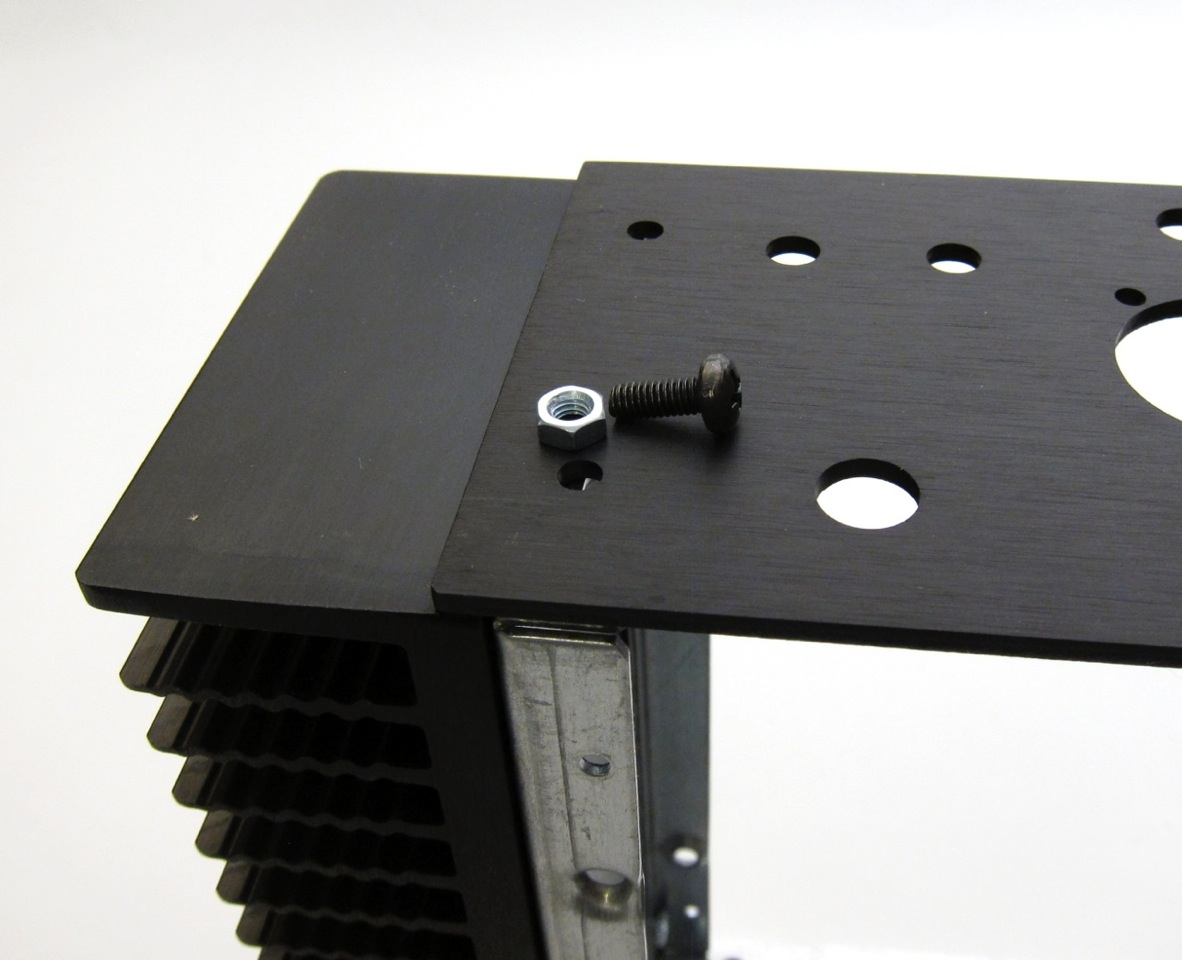
Rear panel attaches with nut and screw
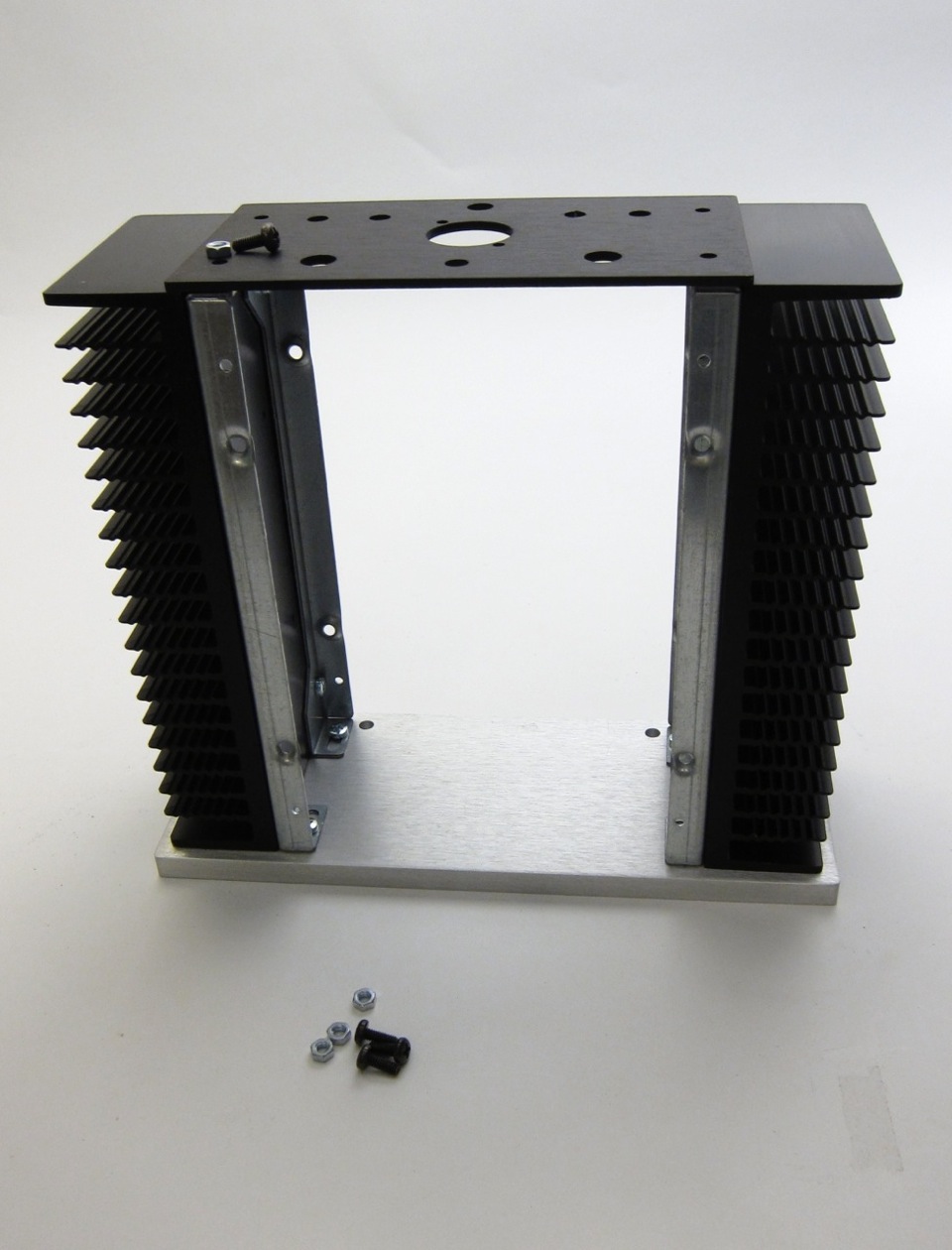
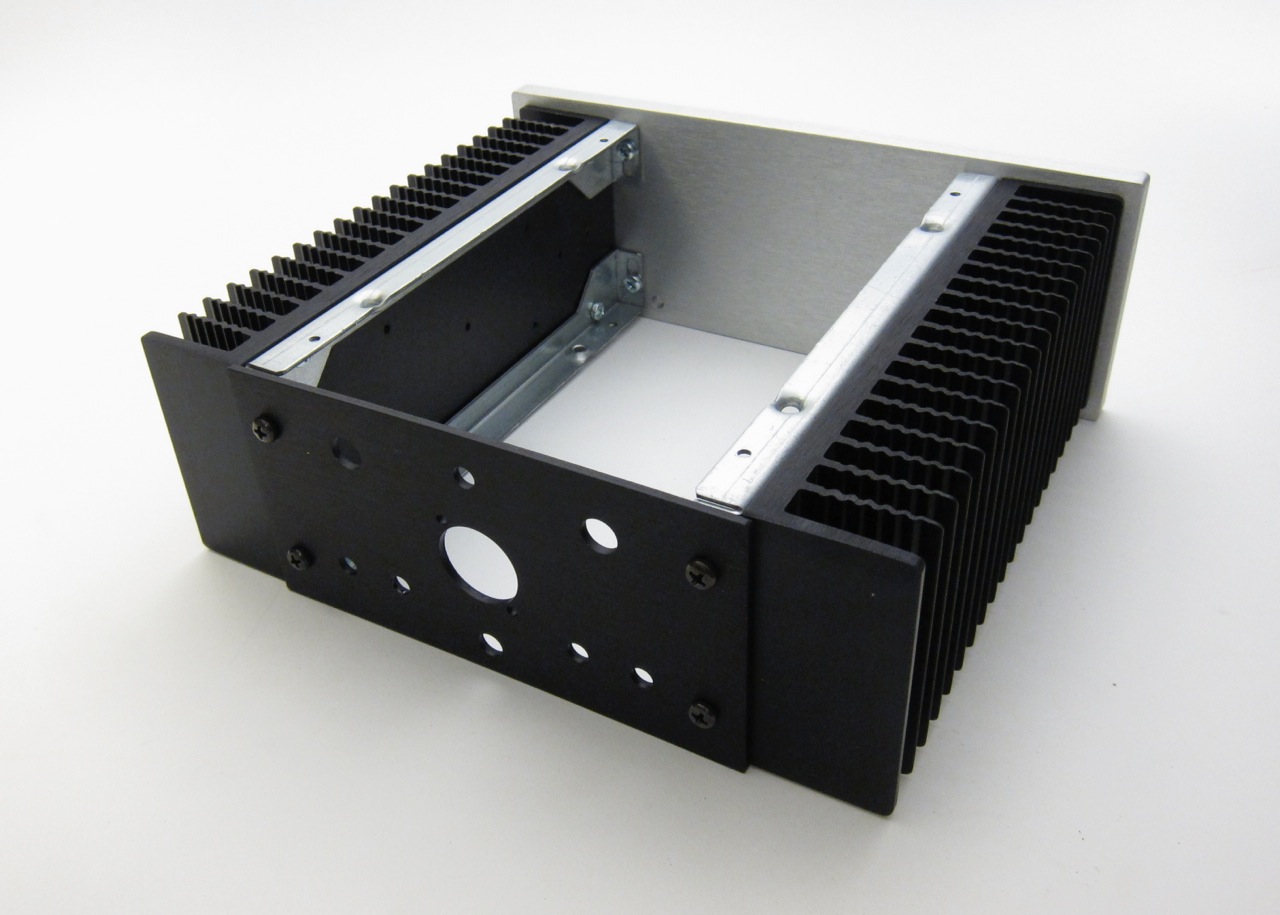
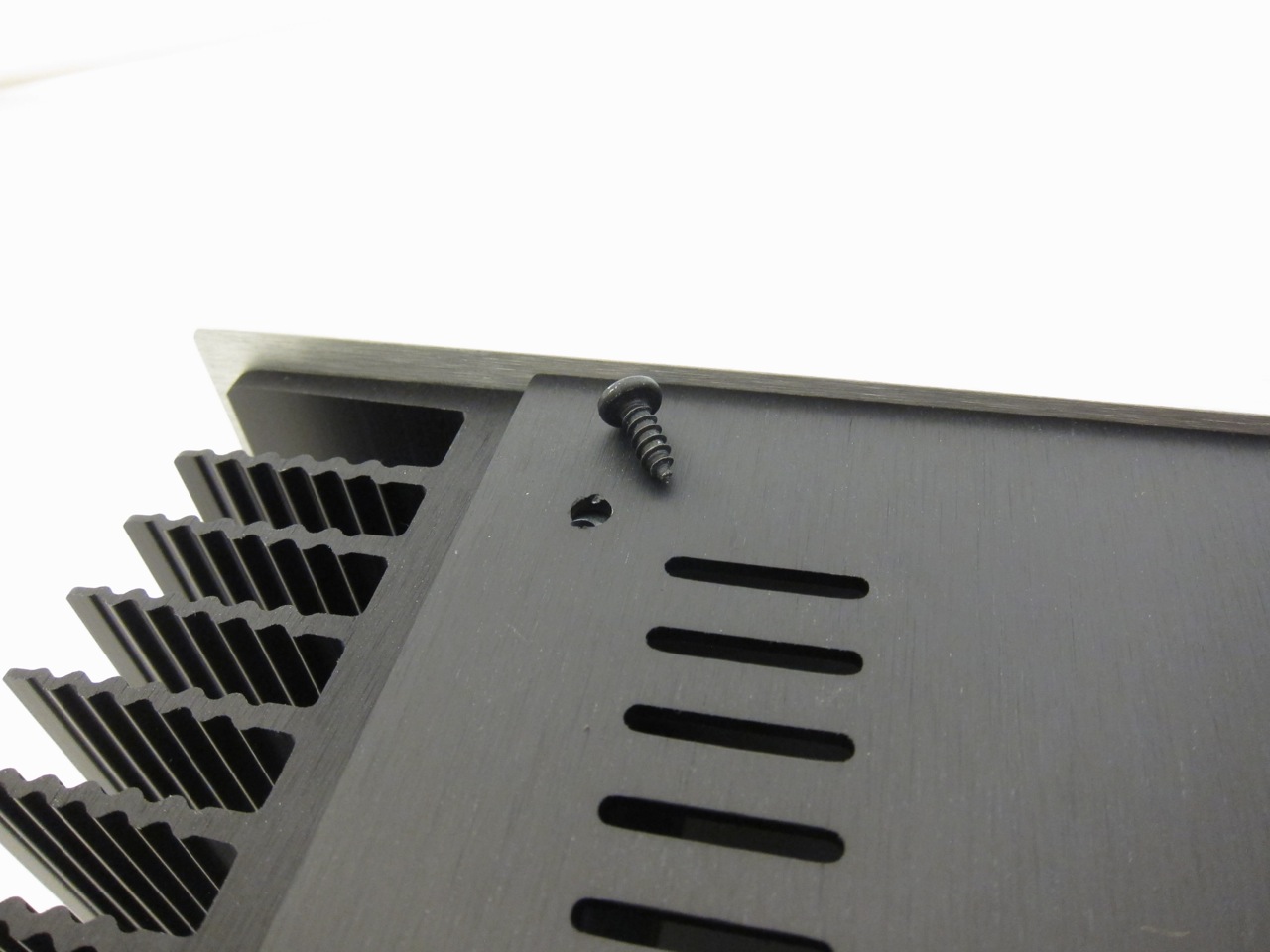
Sheet metal screws attach the top and bottom panels
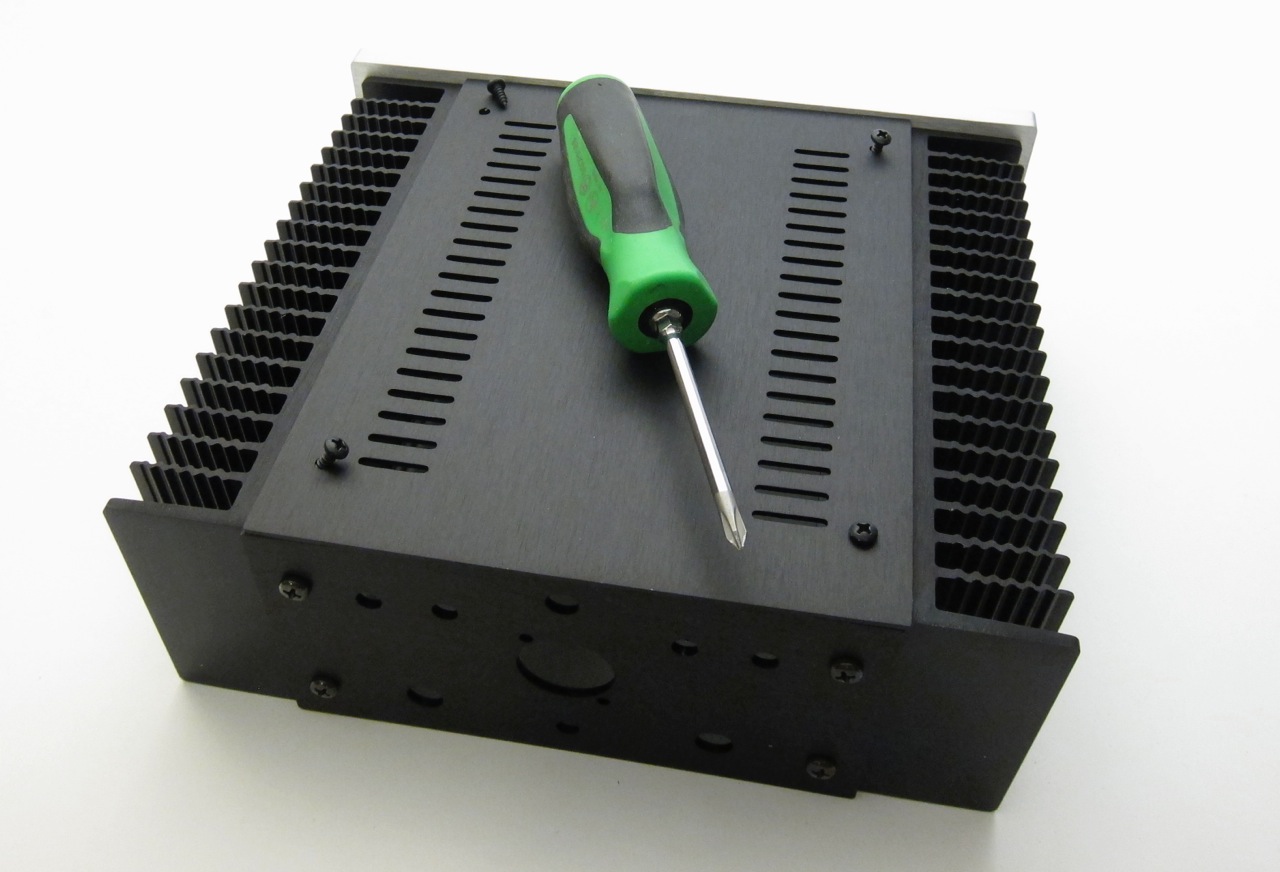
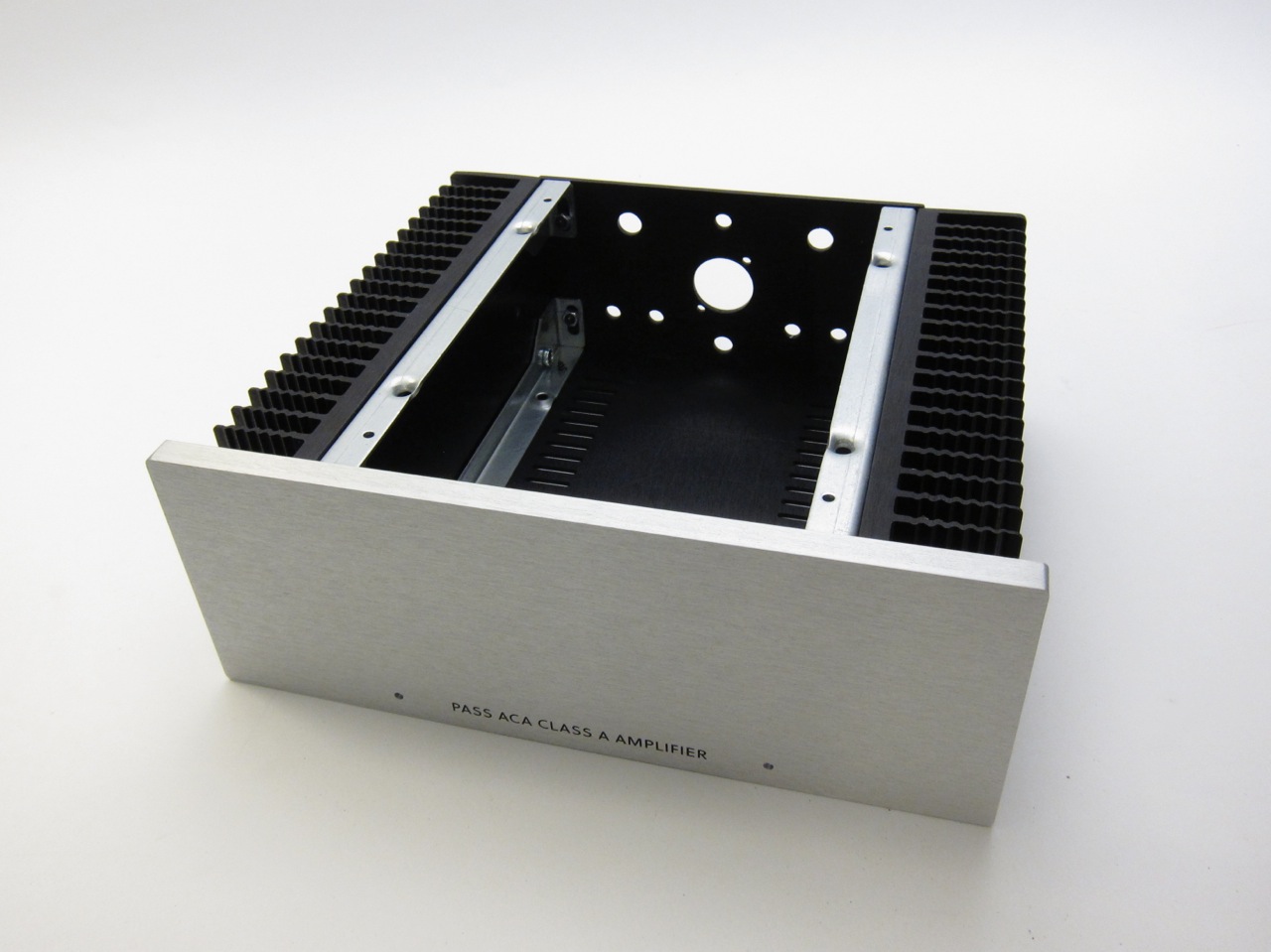
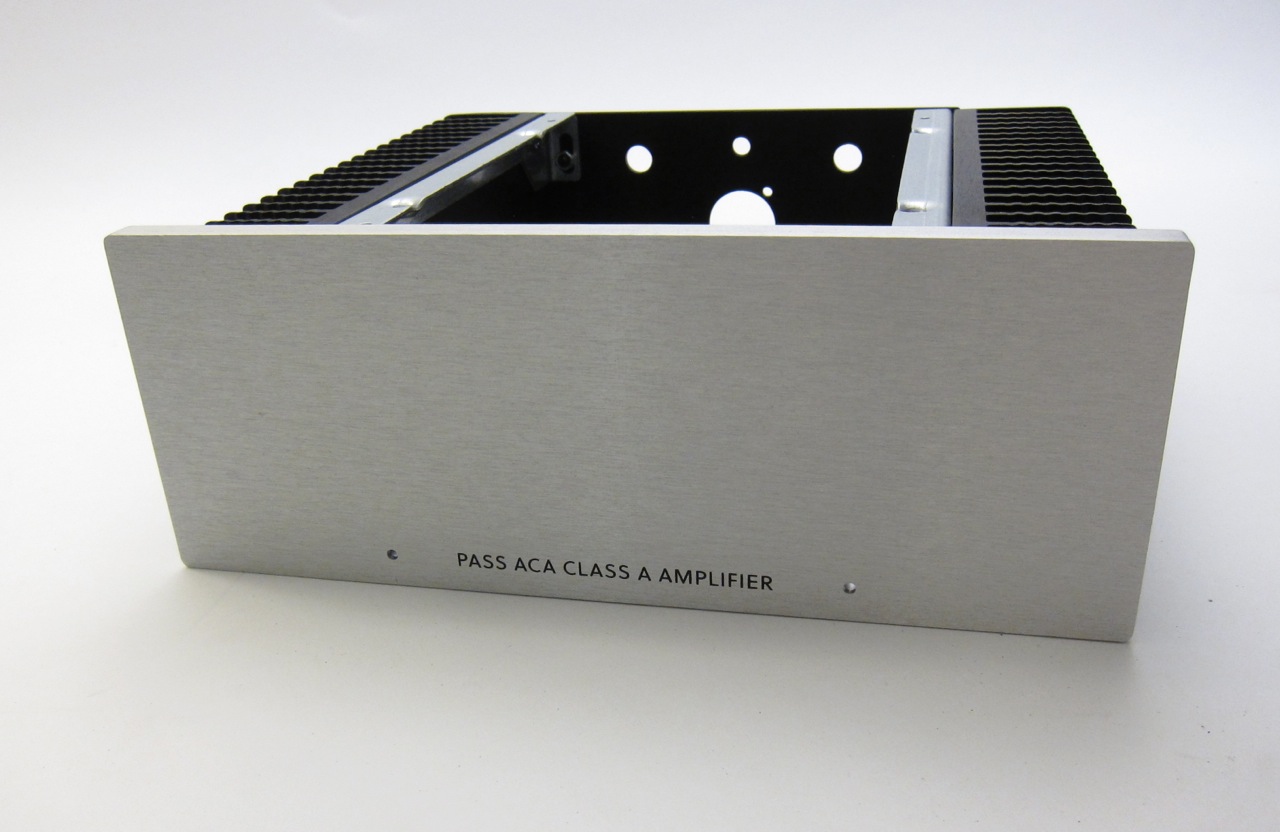
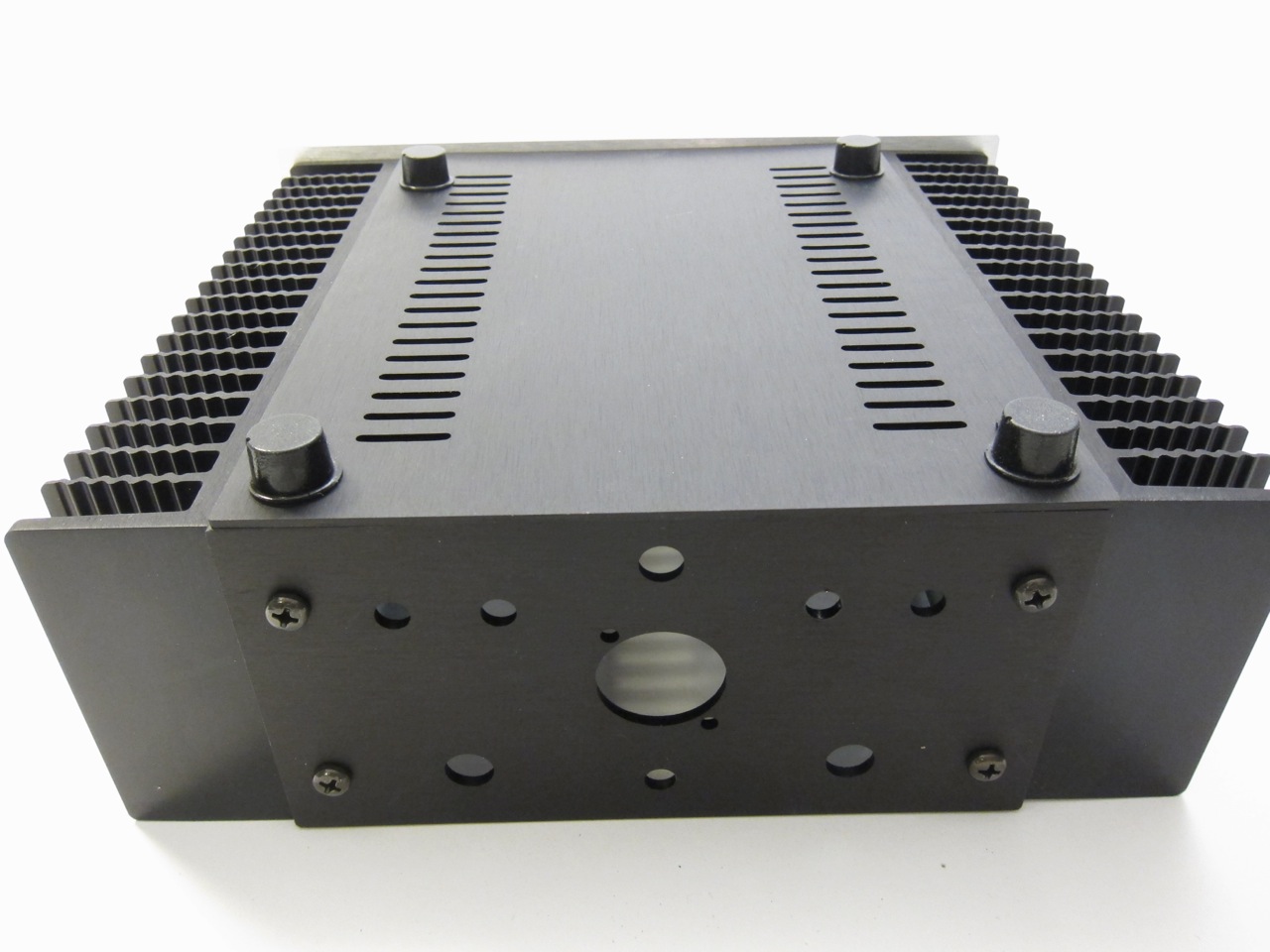
Feet are stick-on
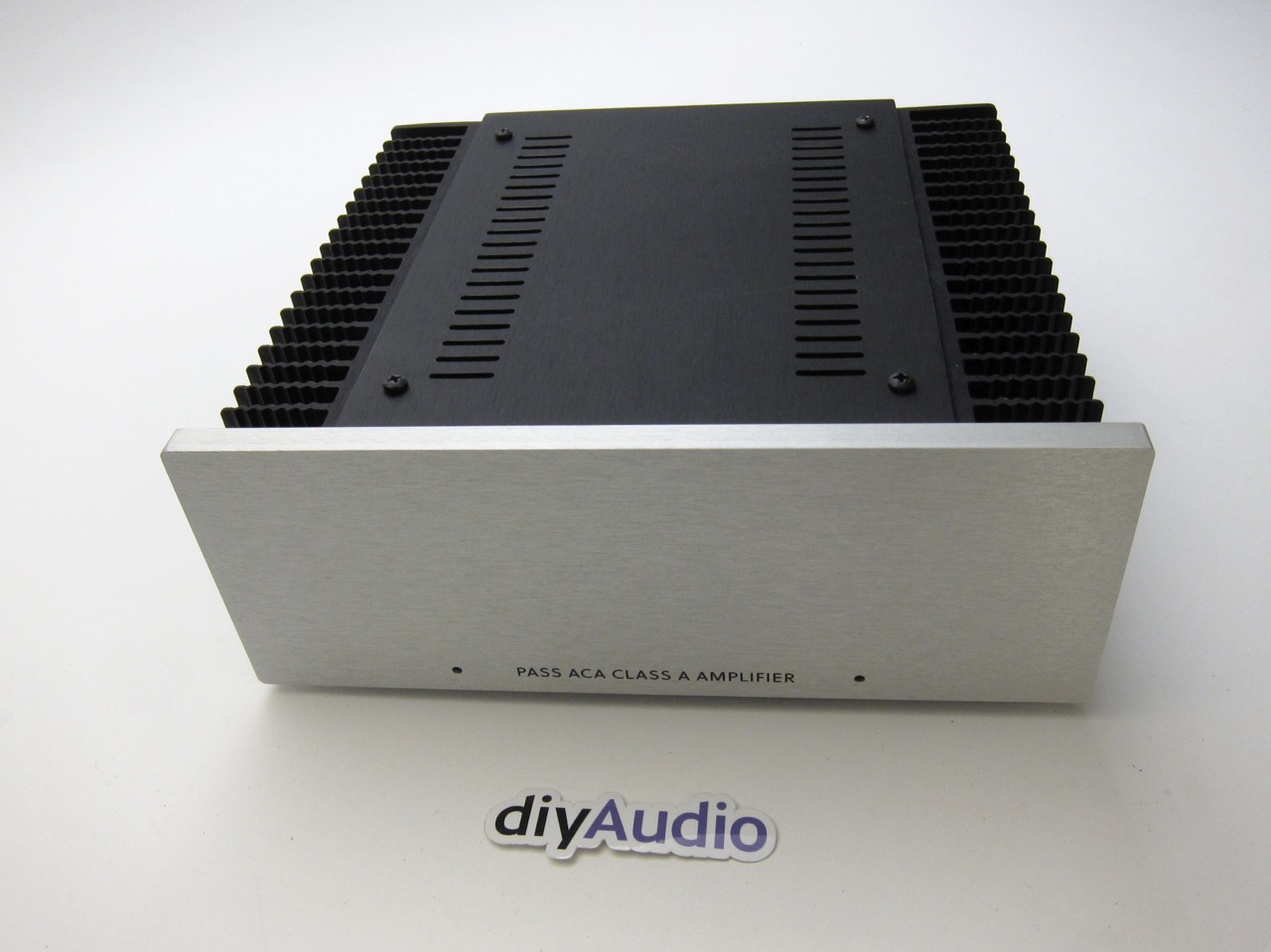
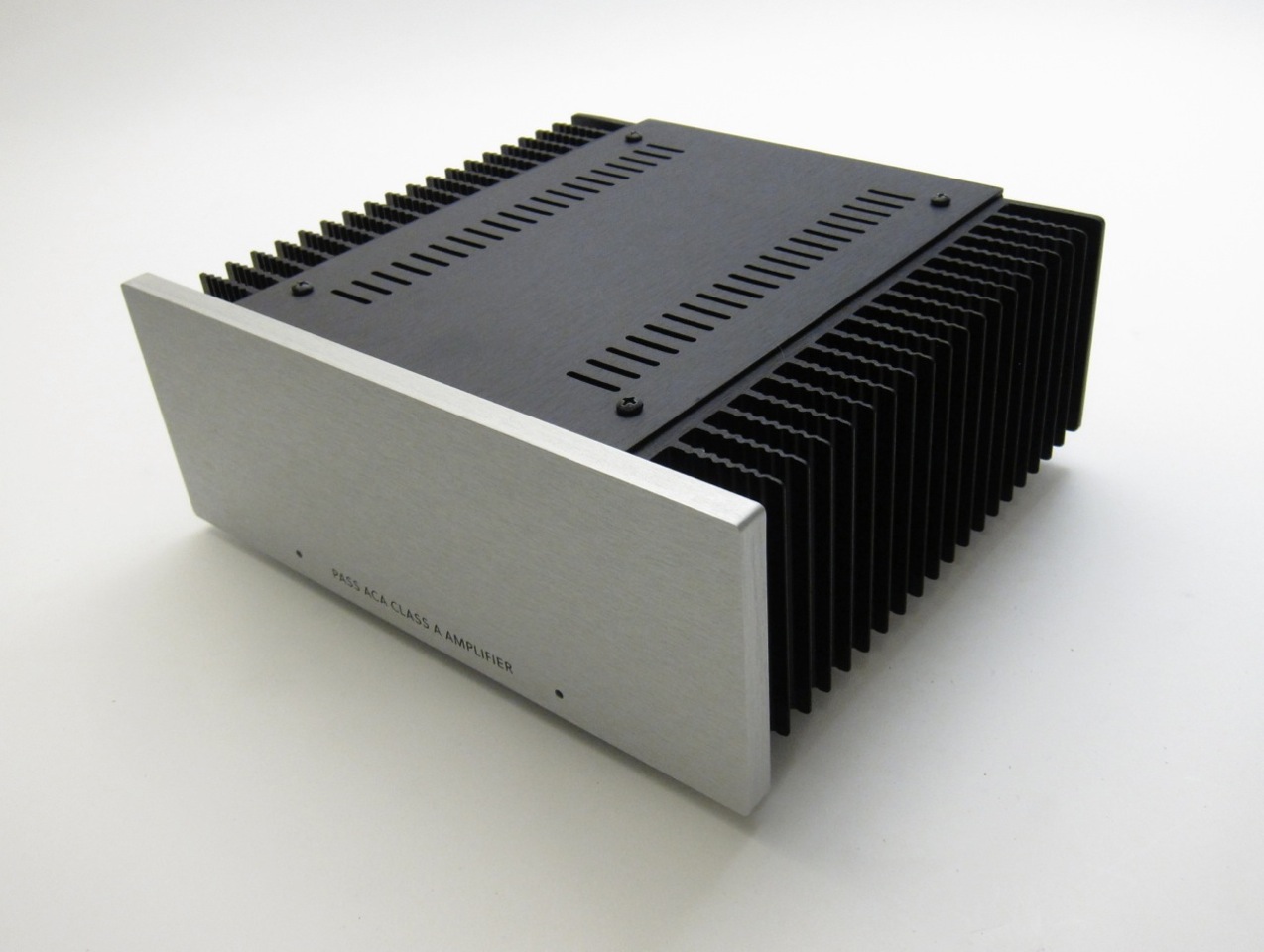
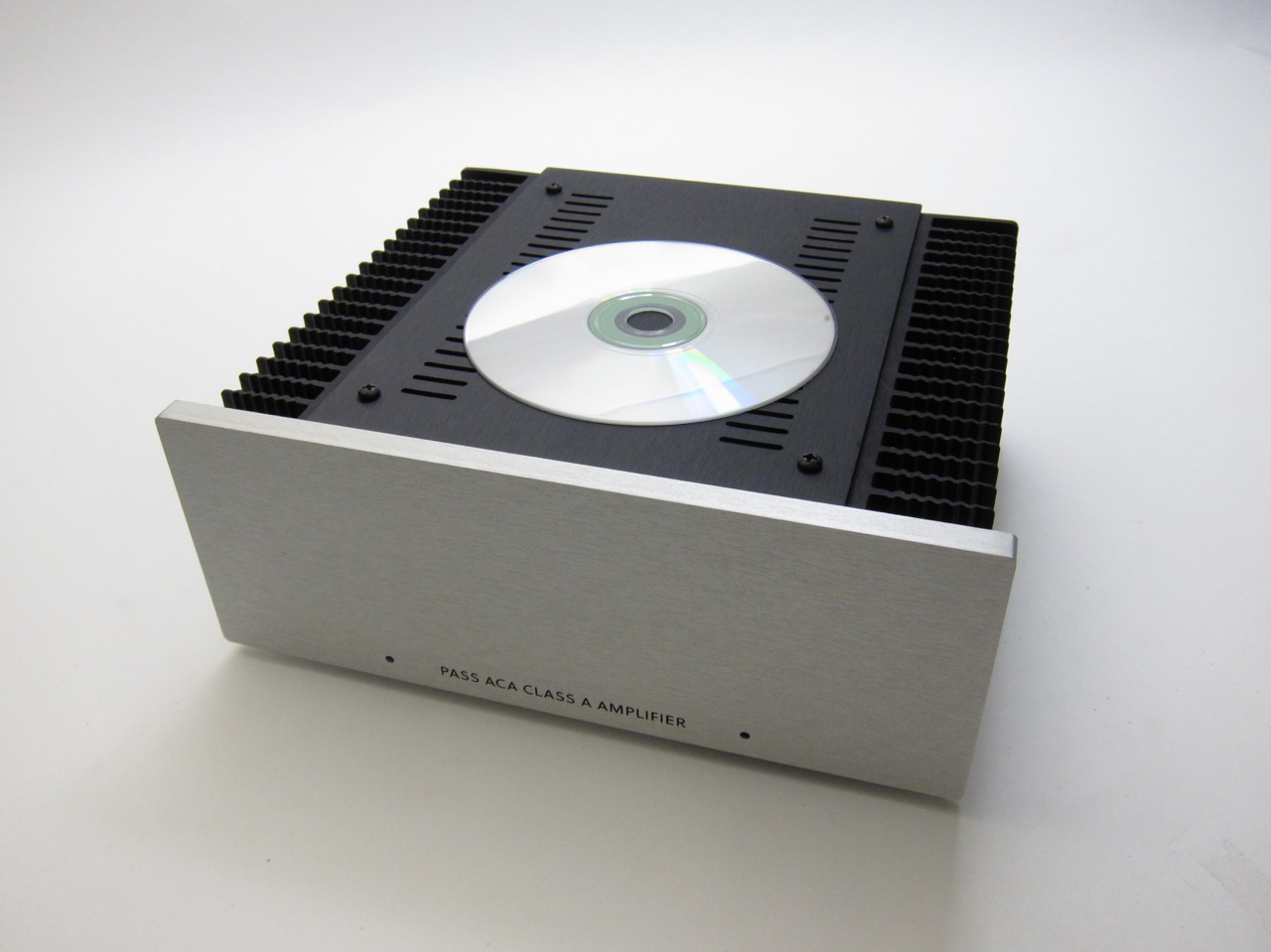
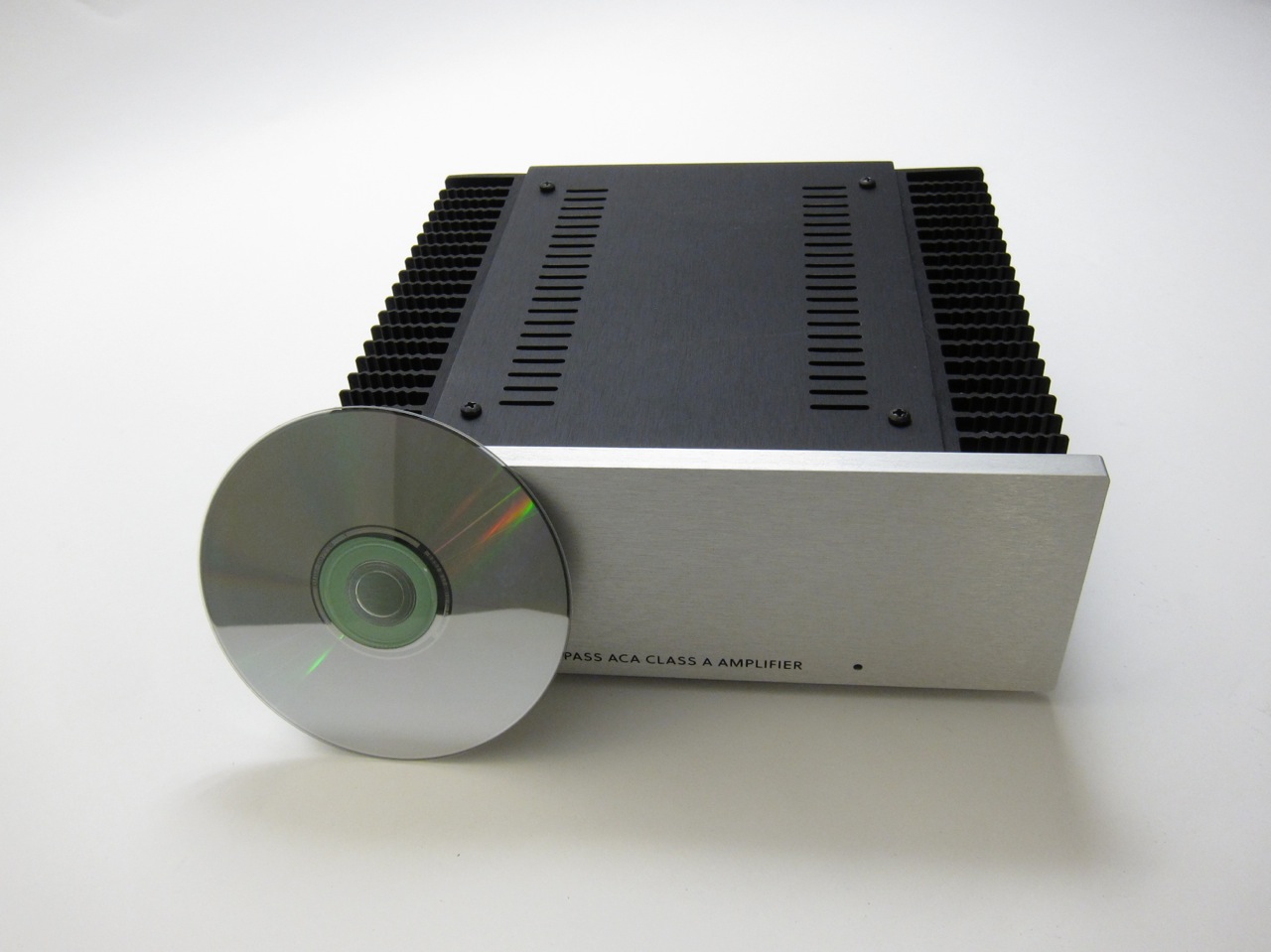
CD shown for scale

Chasis contents

Heatsink rails

Front and rear panels

Ventilated top and bottom panels

Hardware

Heatsinks

Rails attached to heatsinks


Align slots with the holes in the front panel


Screws insert as shown

Rear panel attaches with nut and screw



Sheet metal screws attach the top and bottom panels




Feet are stick-on




CD shown for scale
Last edited:
Back panel
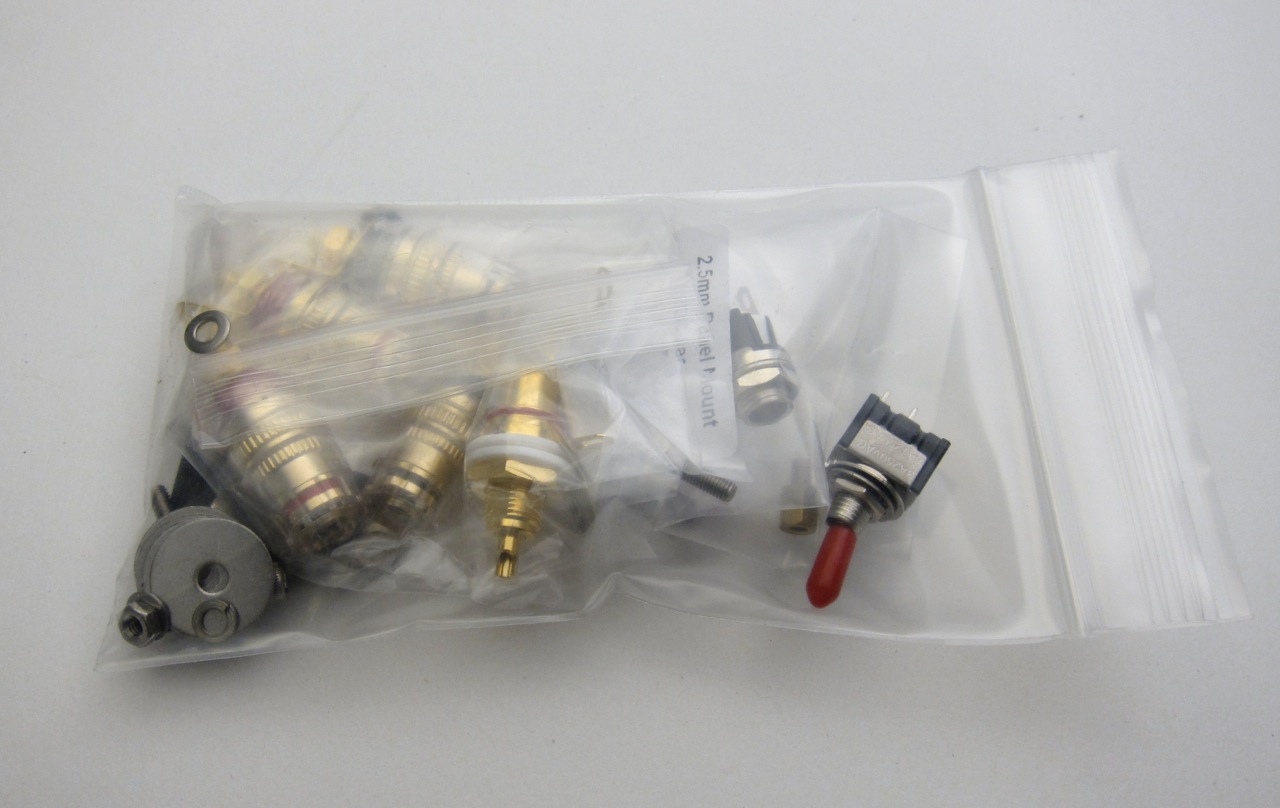
Back panel hardware
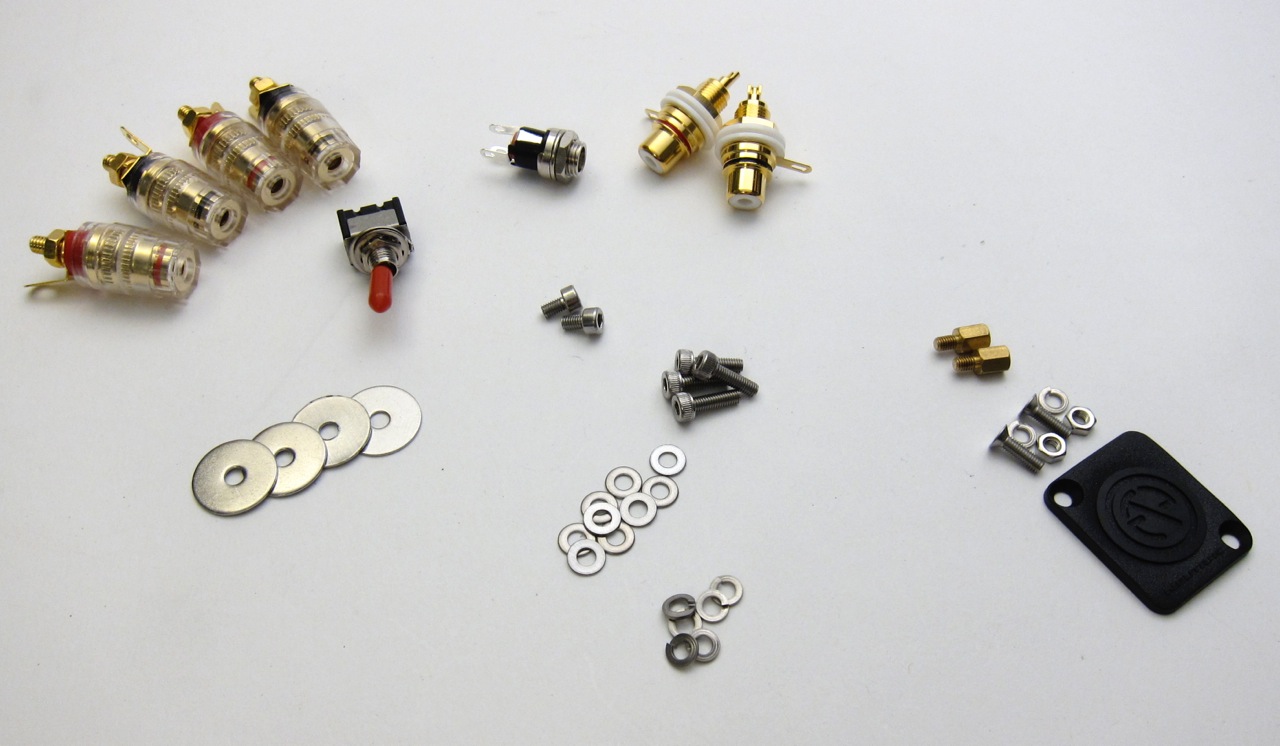
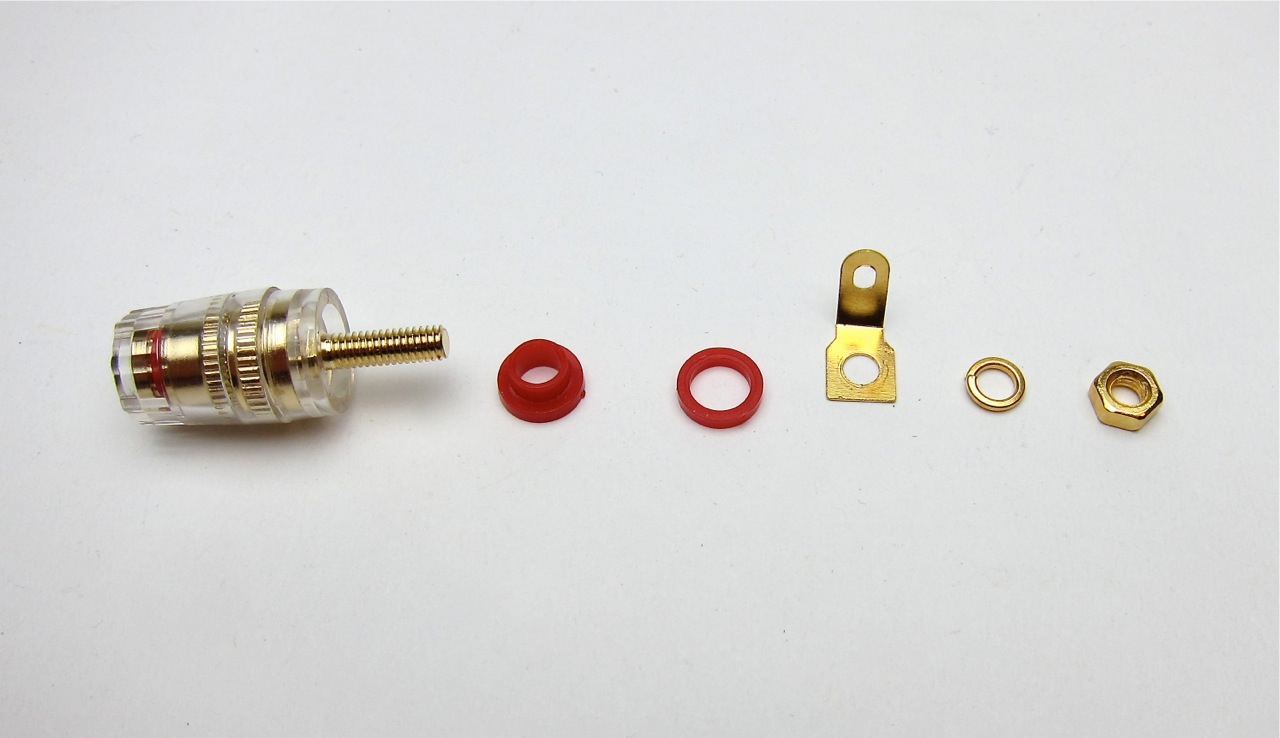
Speaker post hardware
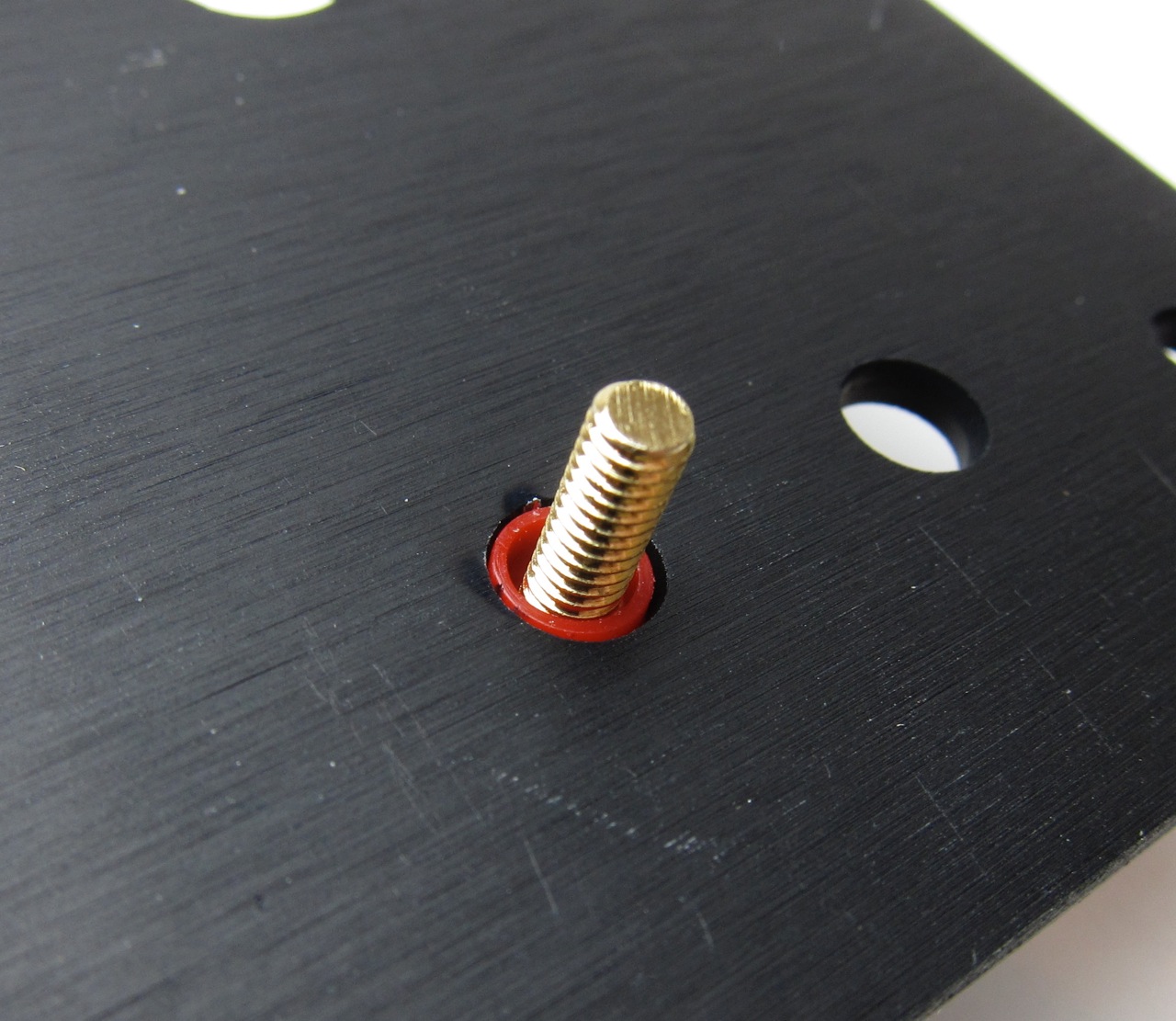
Viewing from the inside of the amplifier.
The colored shoulder washer goes on the outside, through the hole. This is to align the post so that no metal touches the chassis.
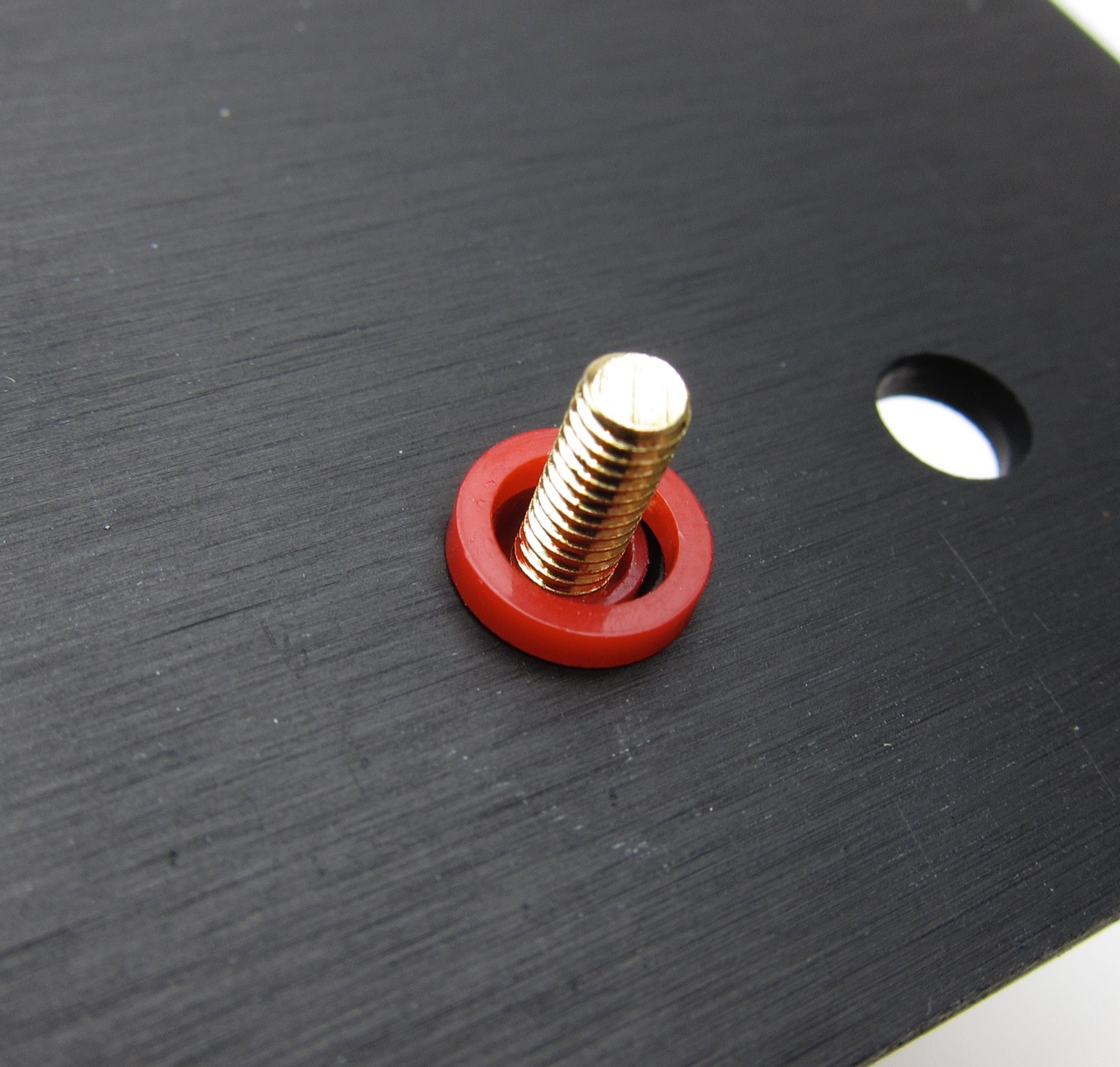
Then the other plastic washer.
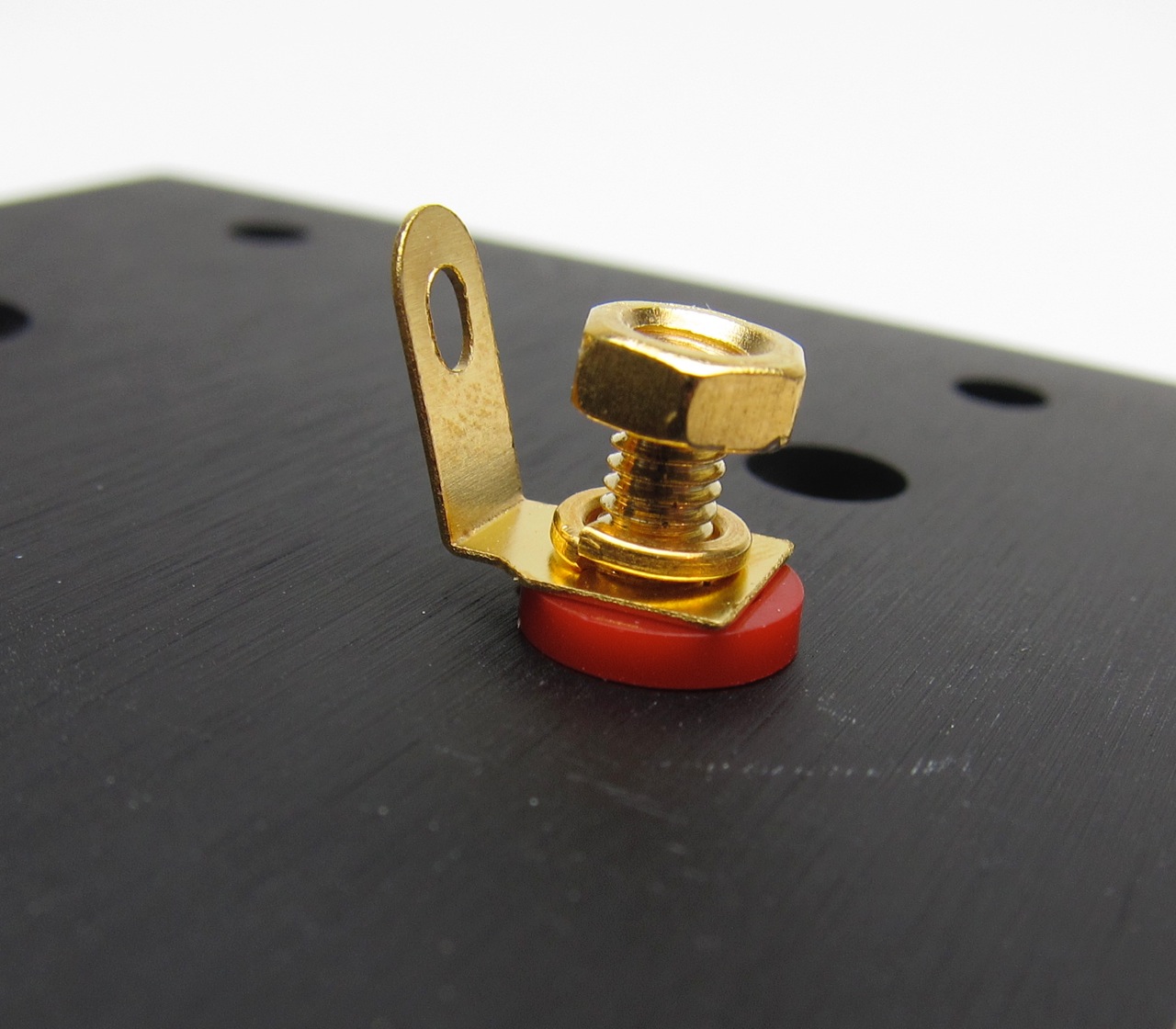
The metal tab sits upon the plastic, then lockwasher, and nut.
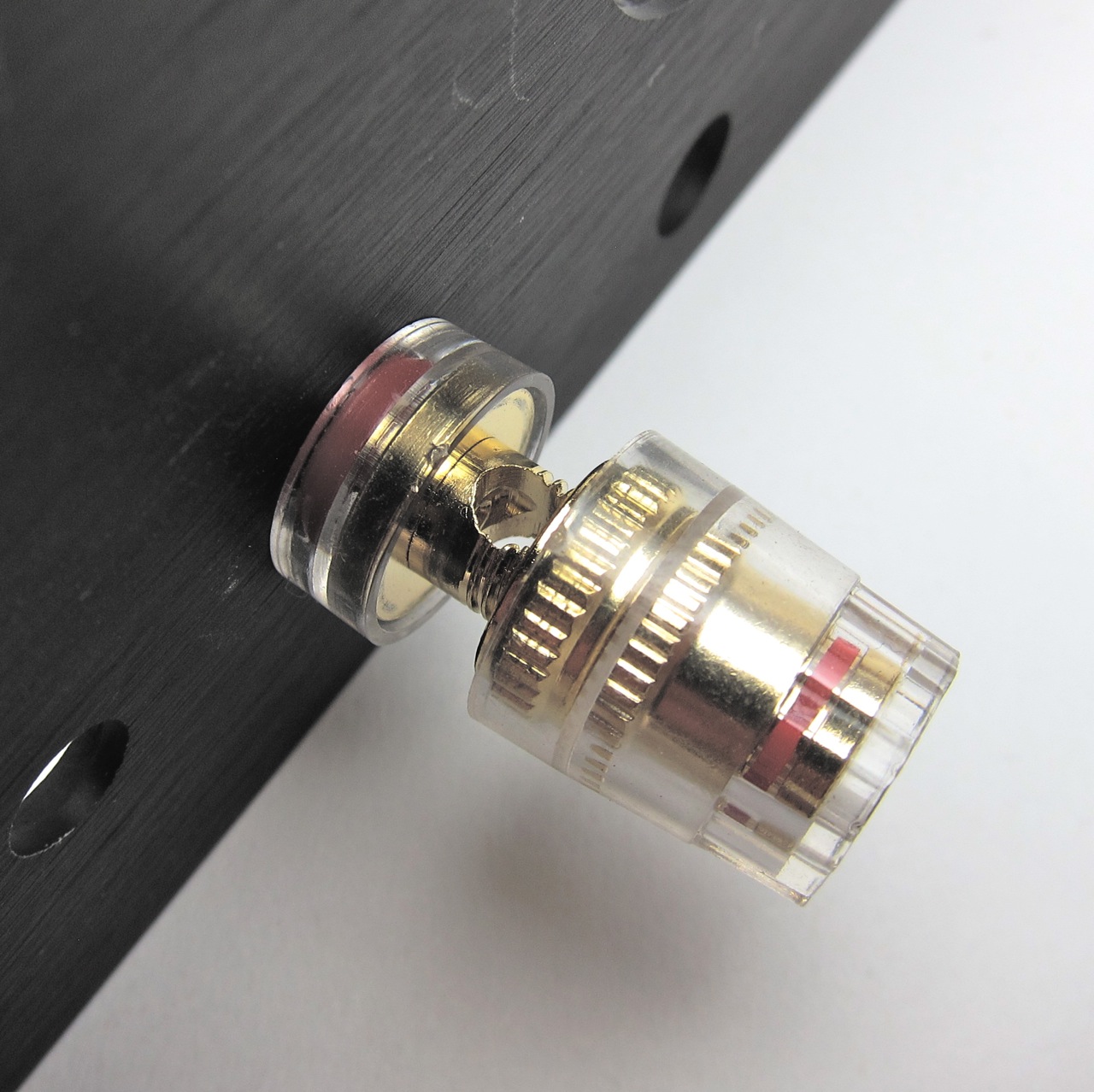
Align the hole in the post to be vertical.
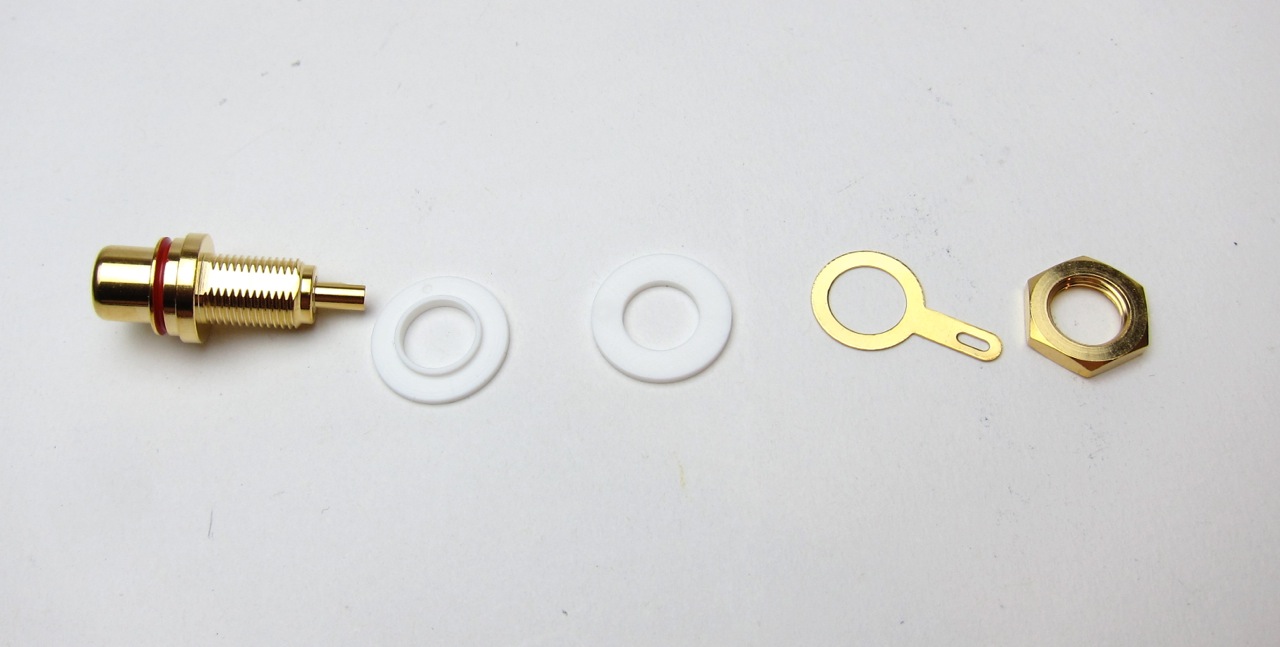
RCA post hardware
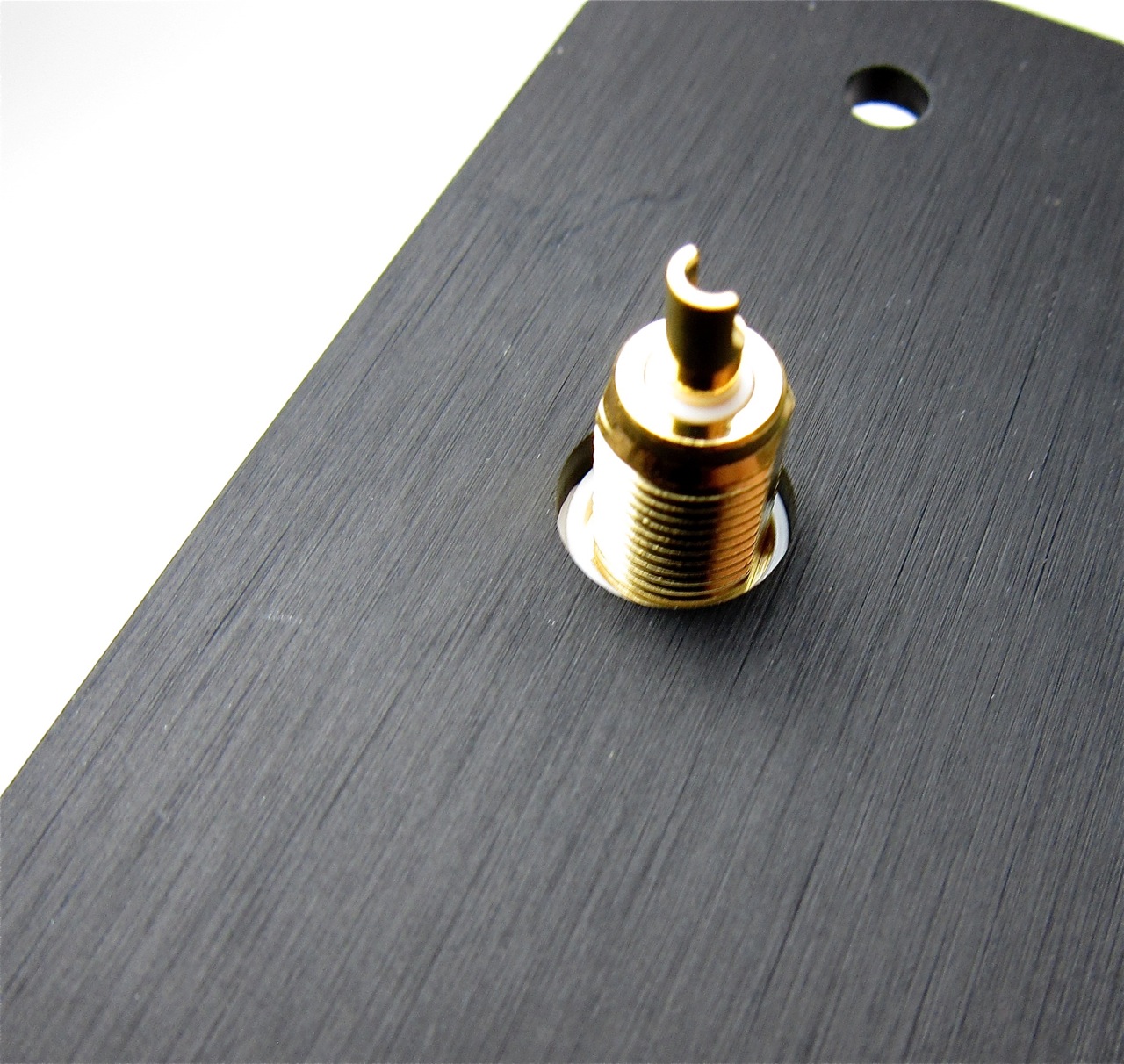
Again, viewing from the inside, the shoulder washer sits in the hole and keeps the metal of the RCA from touching the chassis
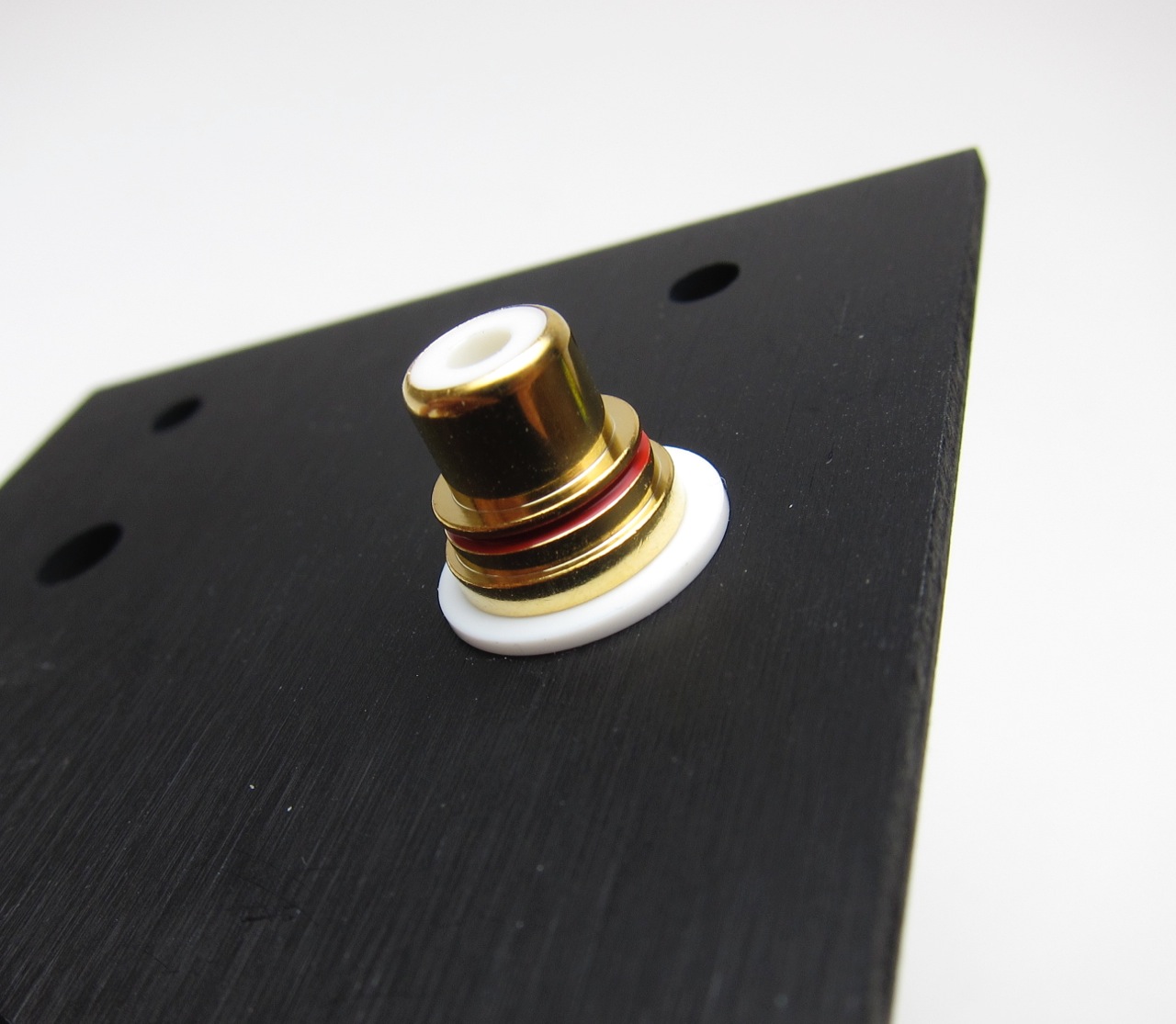
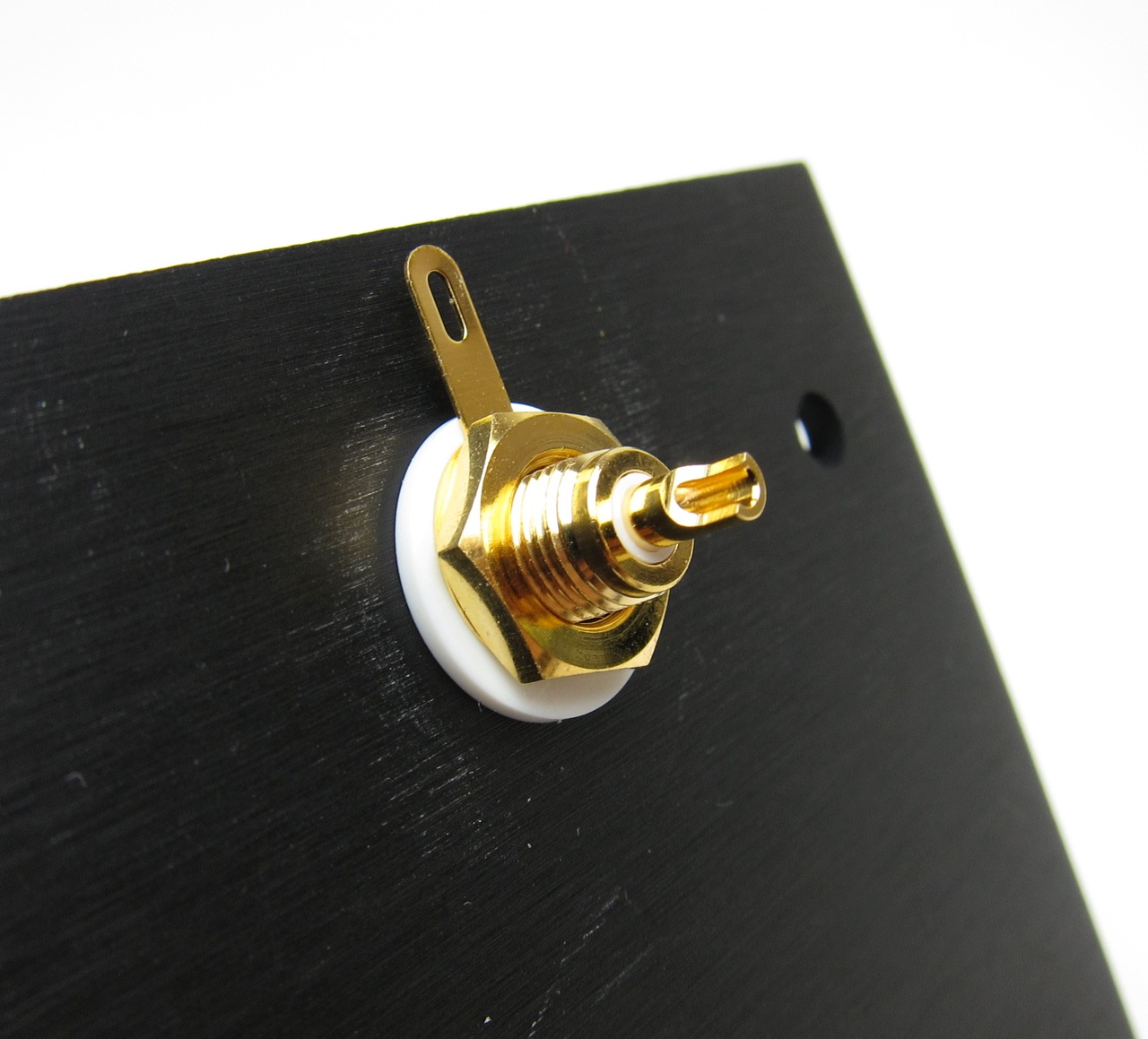
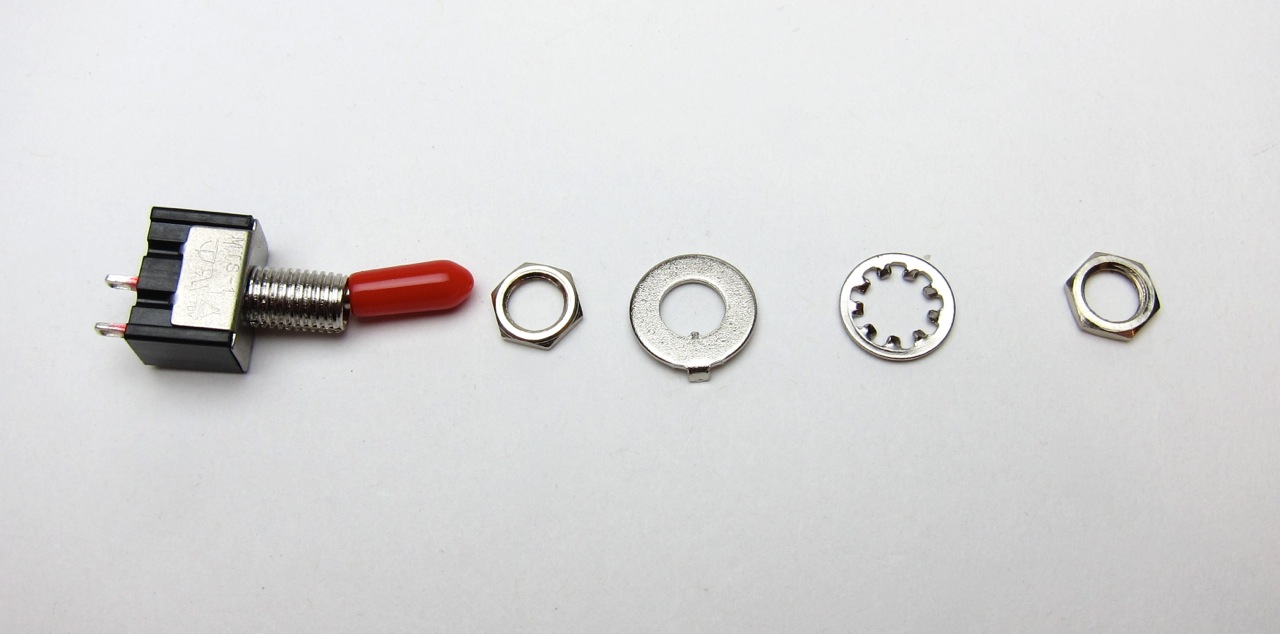
Power switch
Note that the big washer has a key to fit in the switch groove, and a bent tab. Point that tab towards the body of the switch, not the chassis
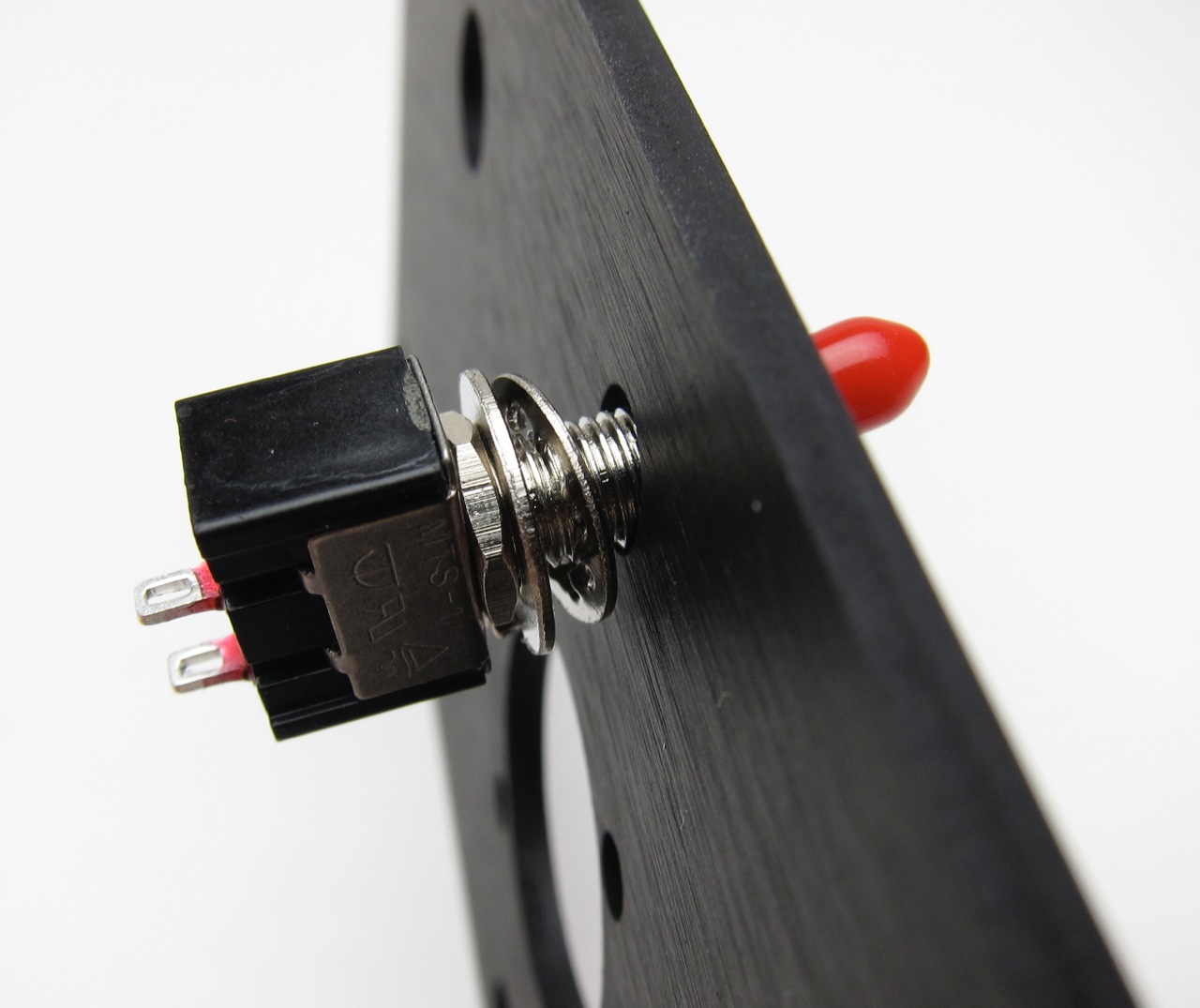
Star washer on the inside touching the chassis
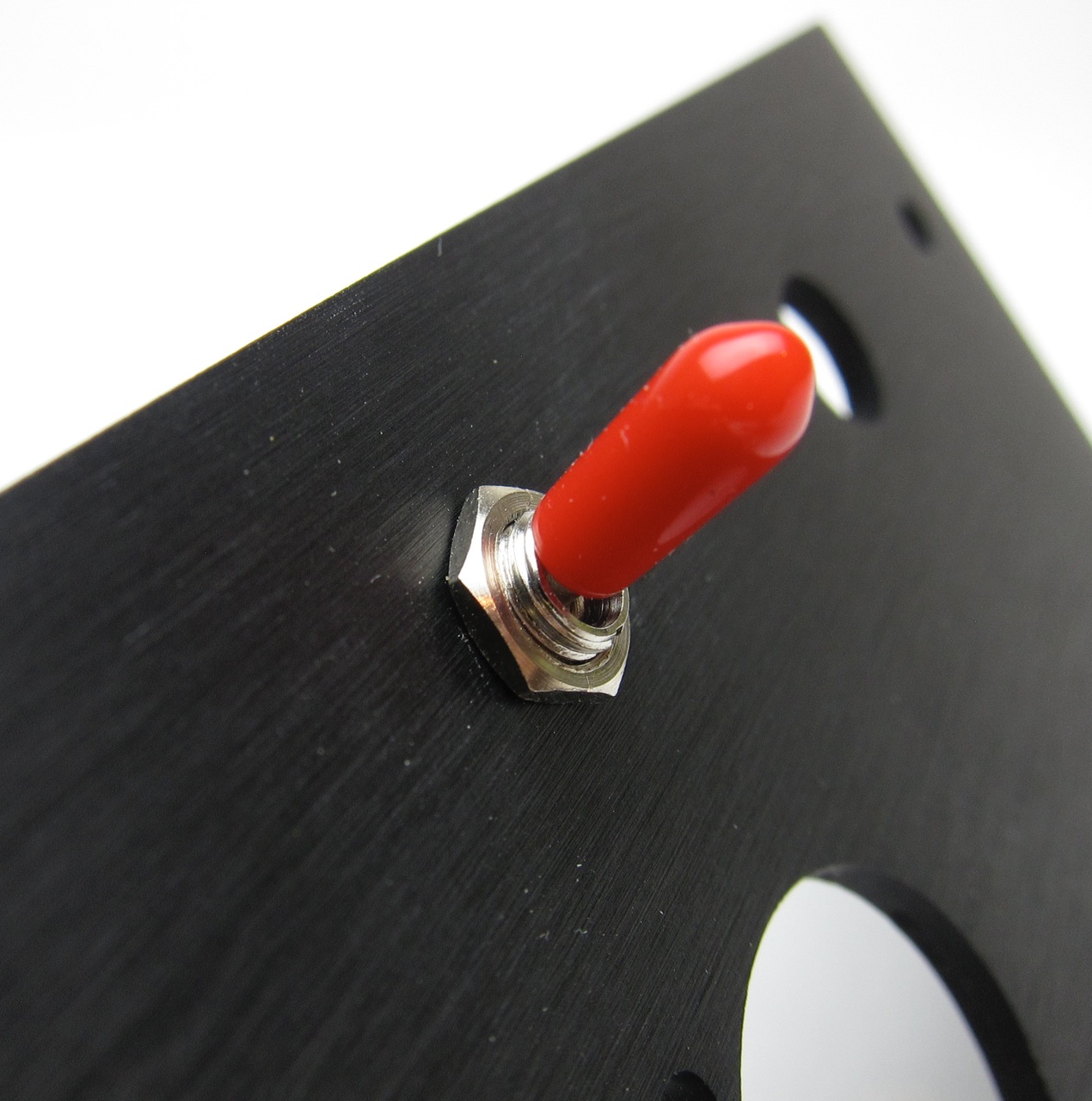
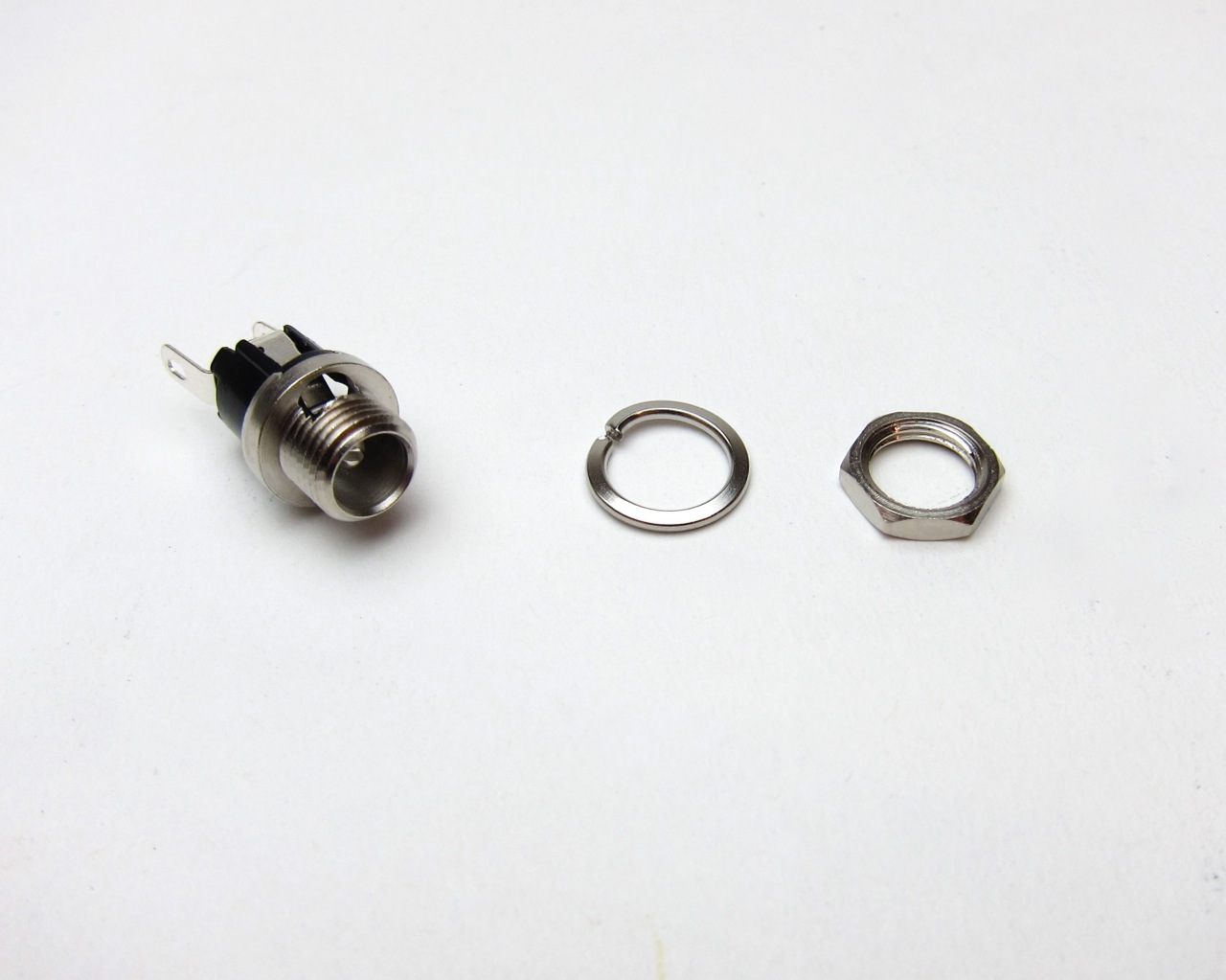
Power jack
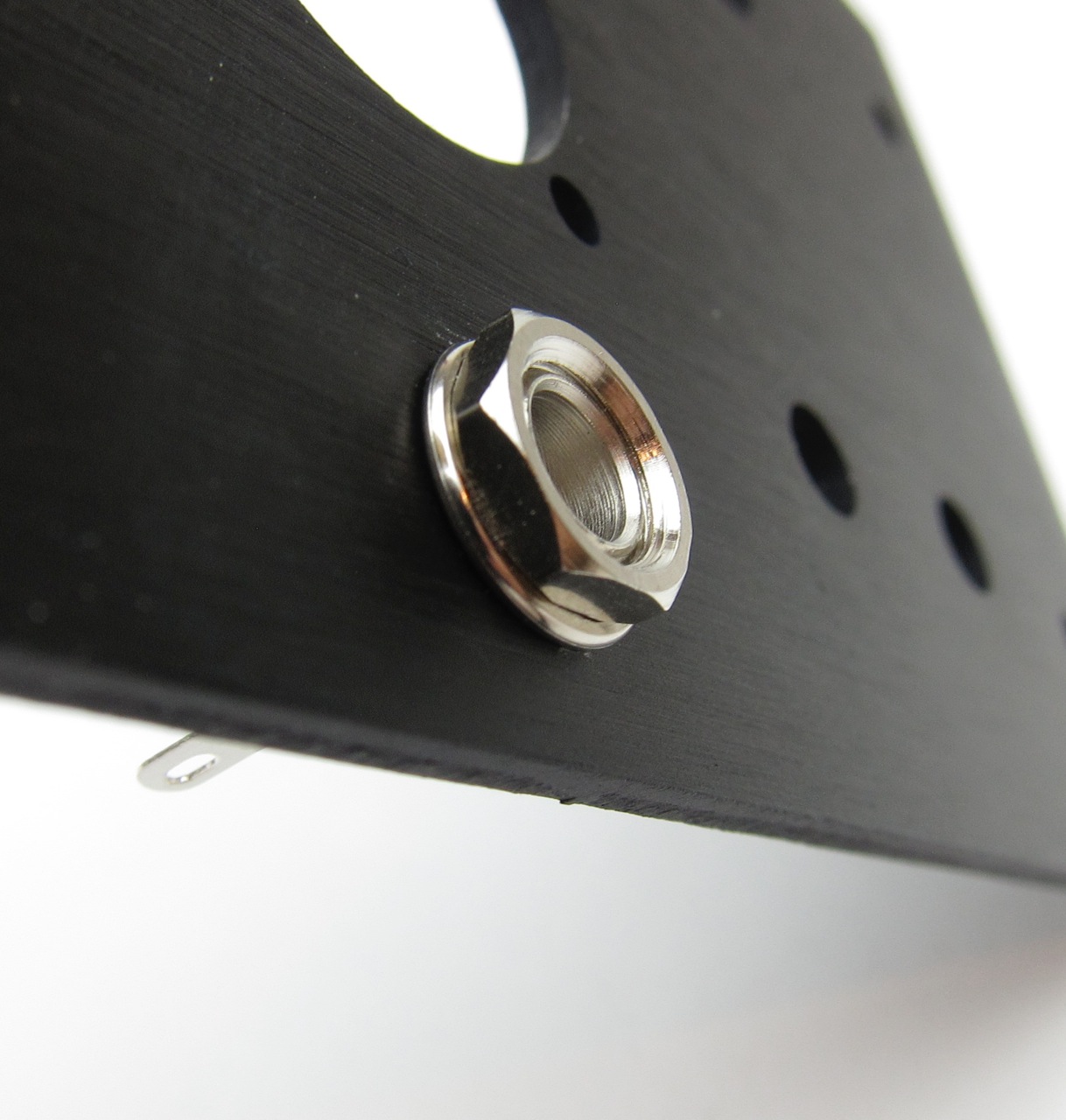
Lockwasher and nut on the outside of the chassis
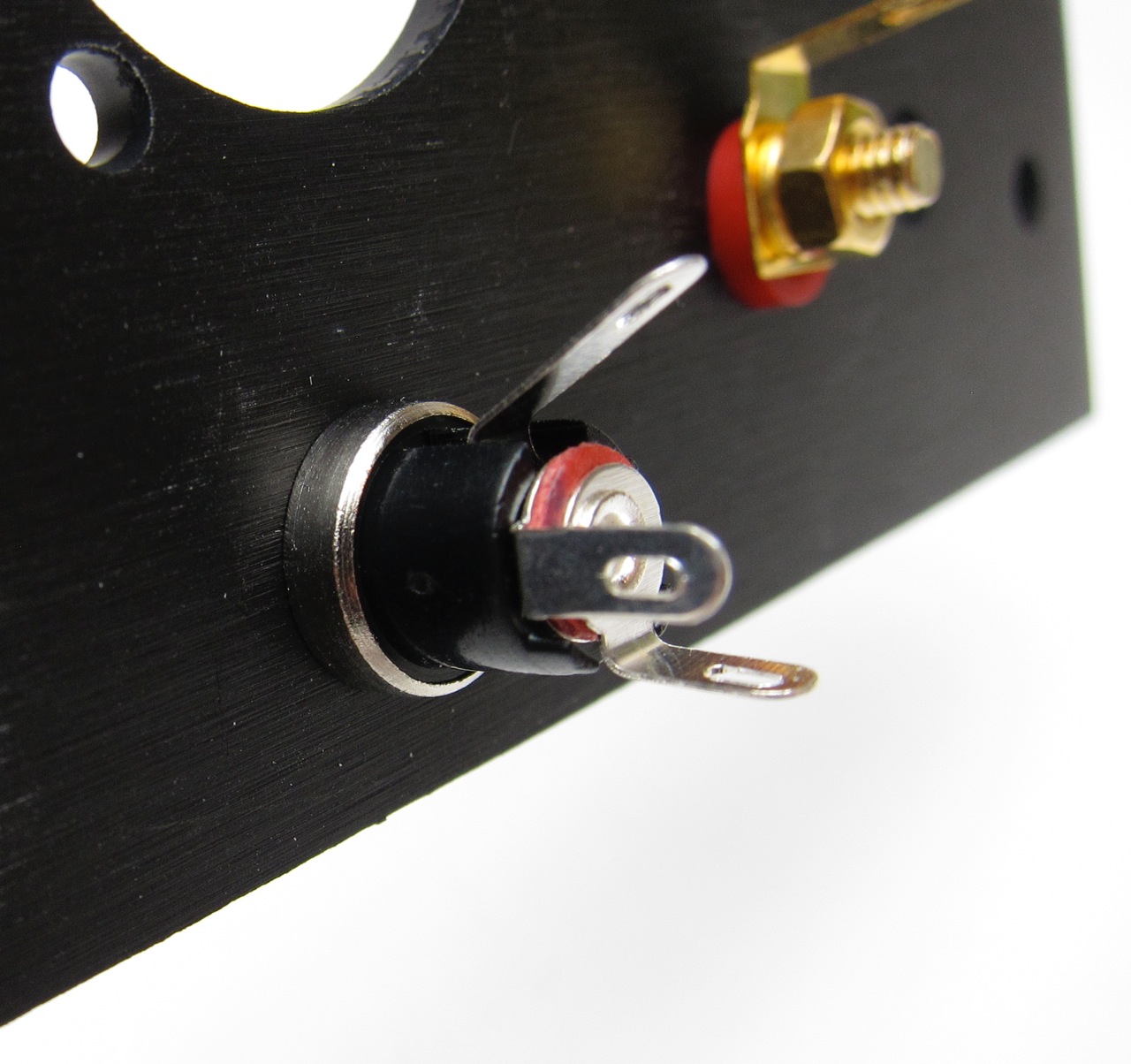
Align so the longest tab is up
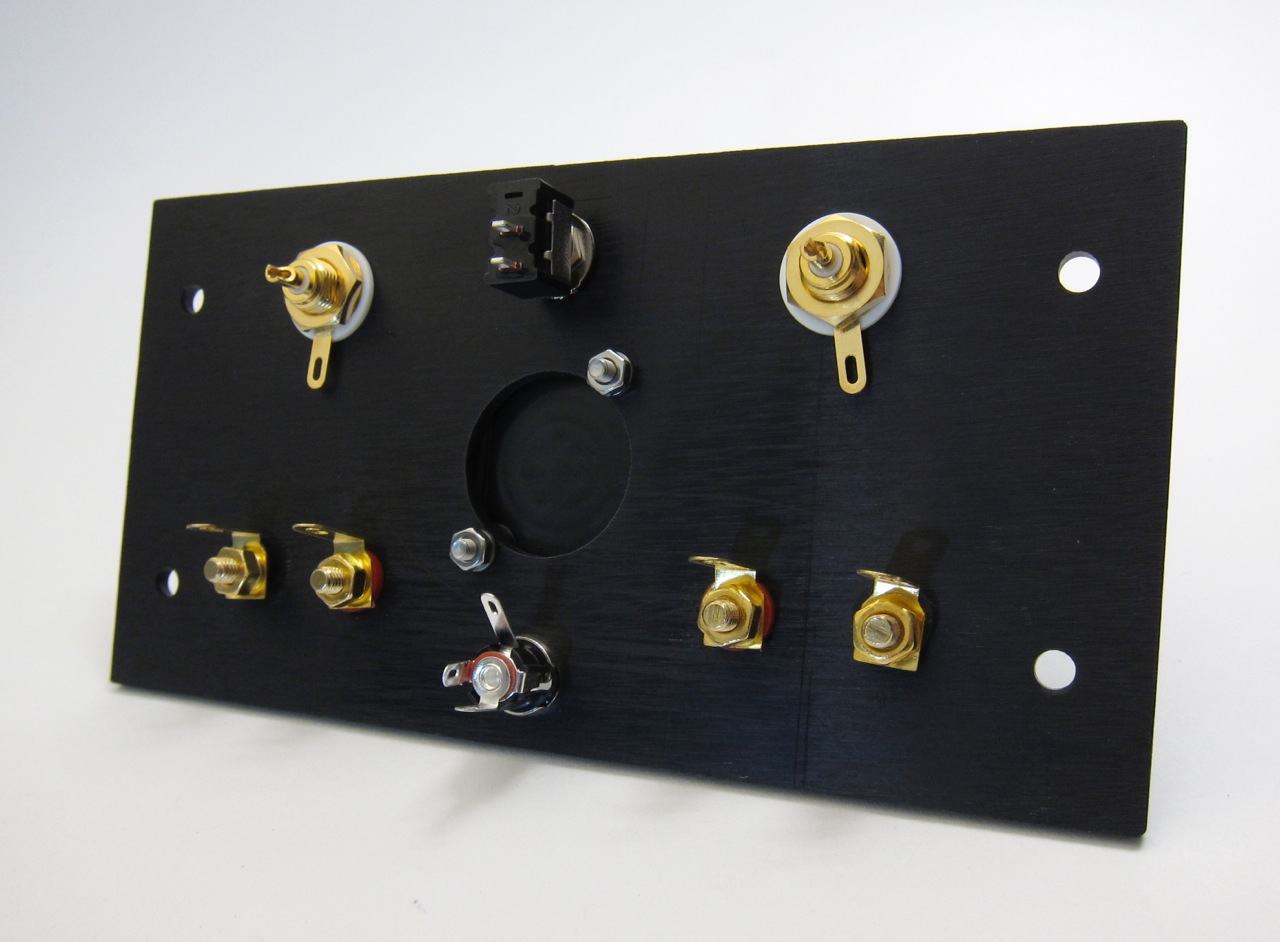
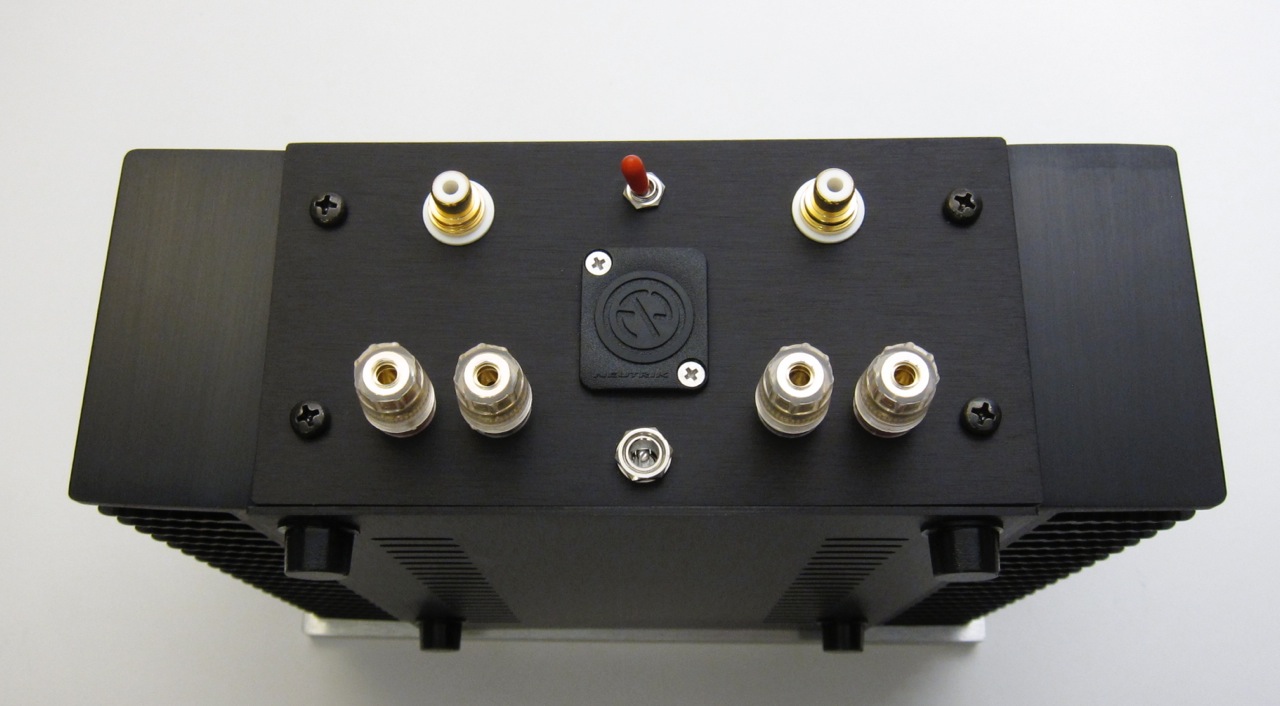
Please note that this photo shows the speaker posts reversed - place the red speaker posts inboard of the black.
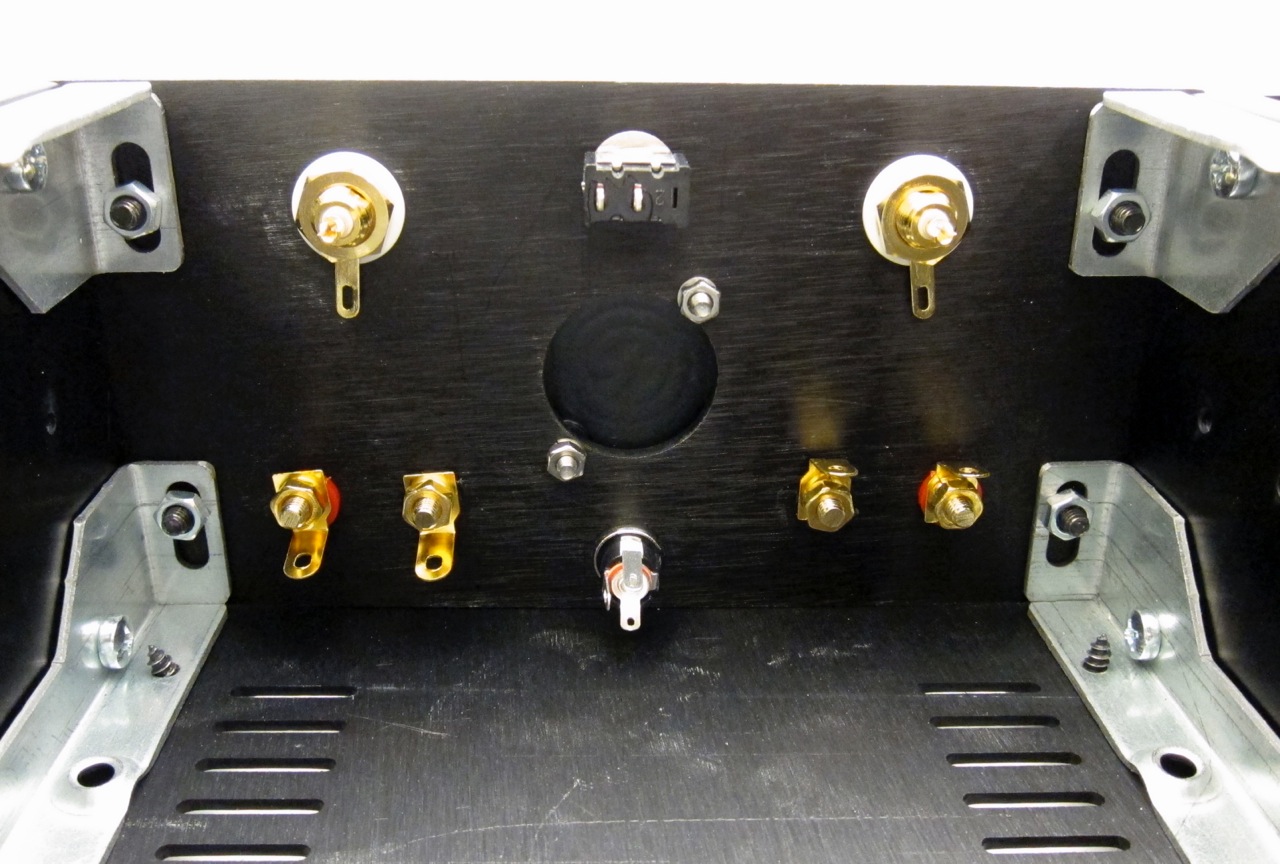
This photo shows some small errors - Please place the Red speaker posts inboard of the black and rotate the switch 90deg so the terminals are on the bottom and center. Later photos will show why.
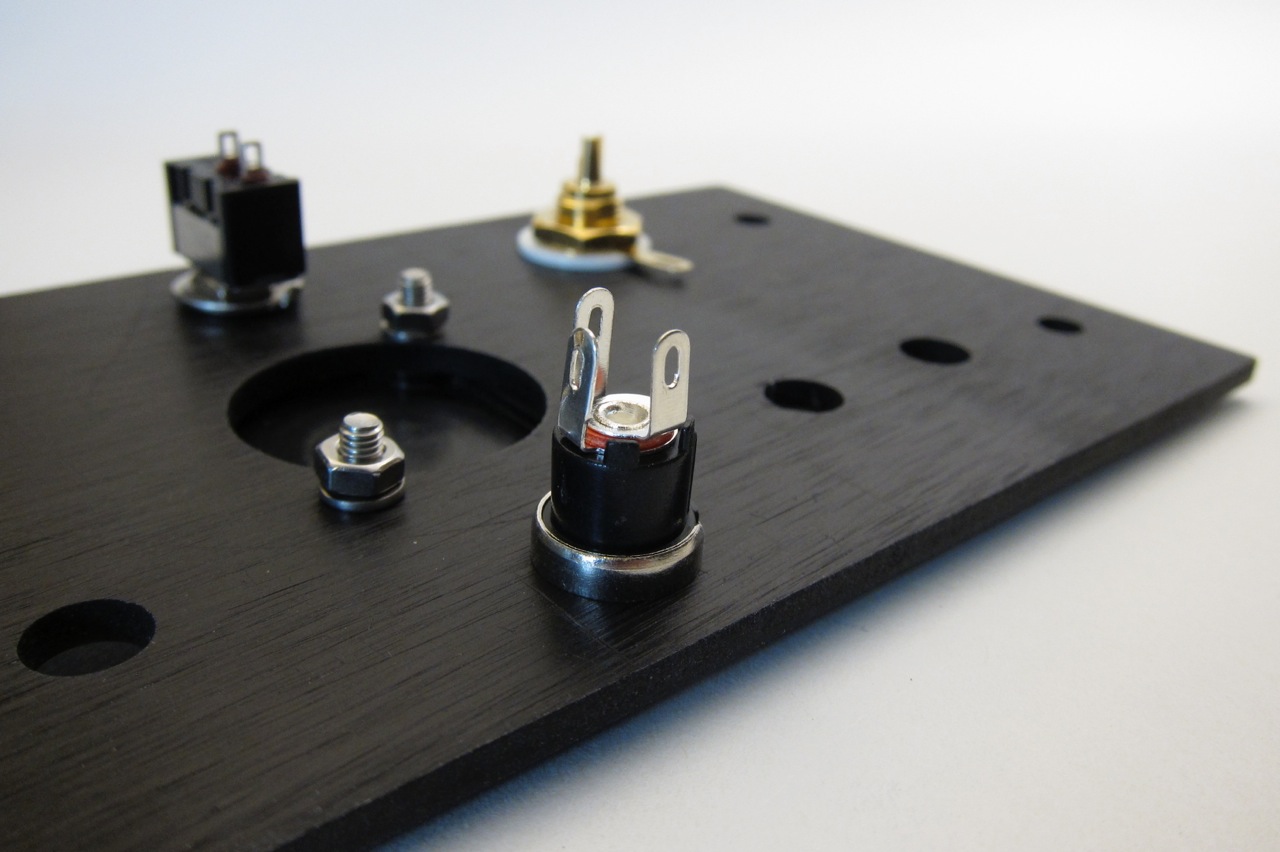
The solder lugs of the PSU barrel connector are all different lengths. Attach so the longest one is up.
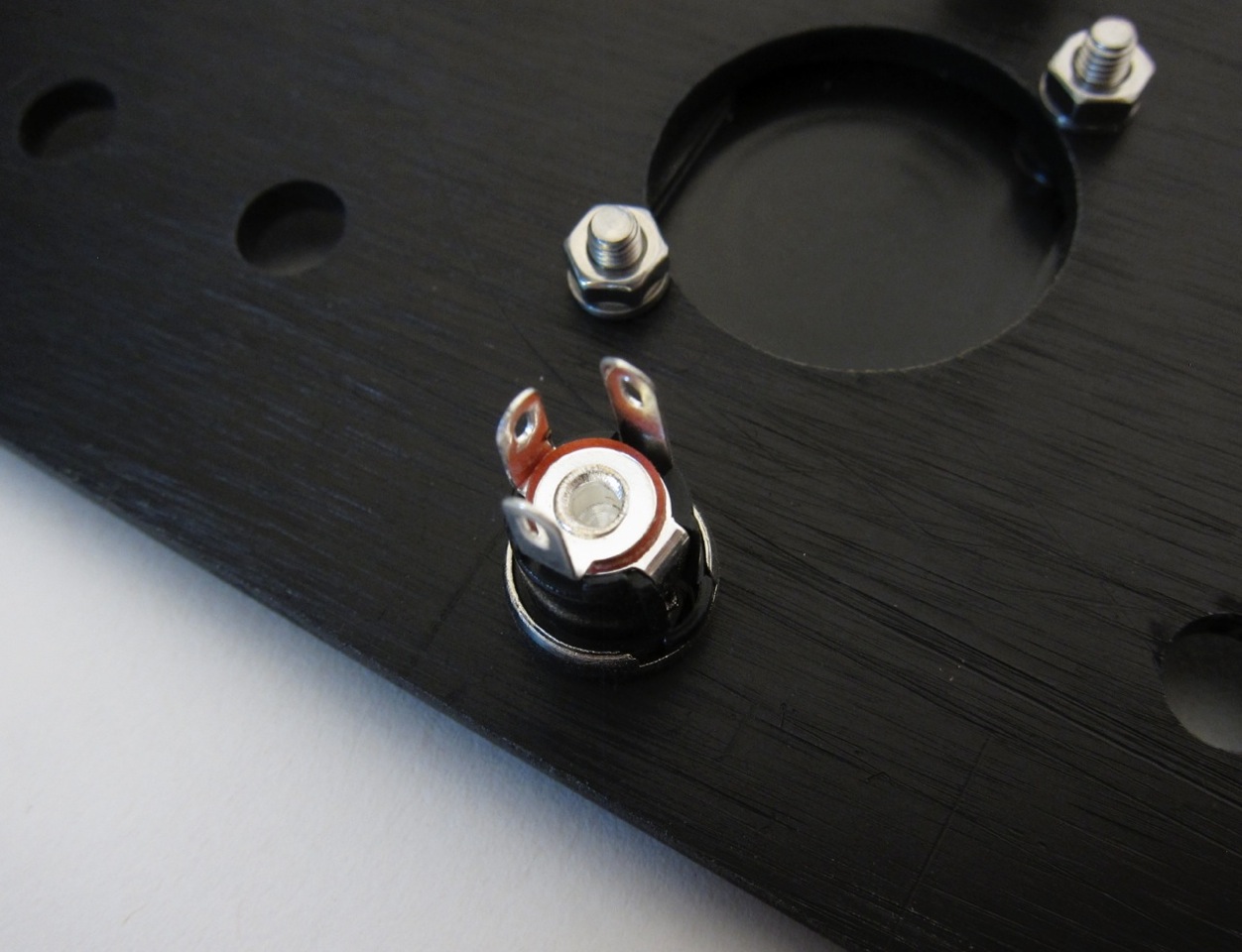
The tab that connects to the center (the bottom tab, in this photo) is the PSU's pin connection.

This photo shown the proper configuration of the jacks and switch. Red inboard, black outboard, switch alignment where up will be on.
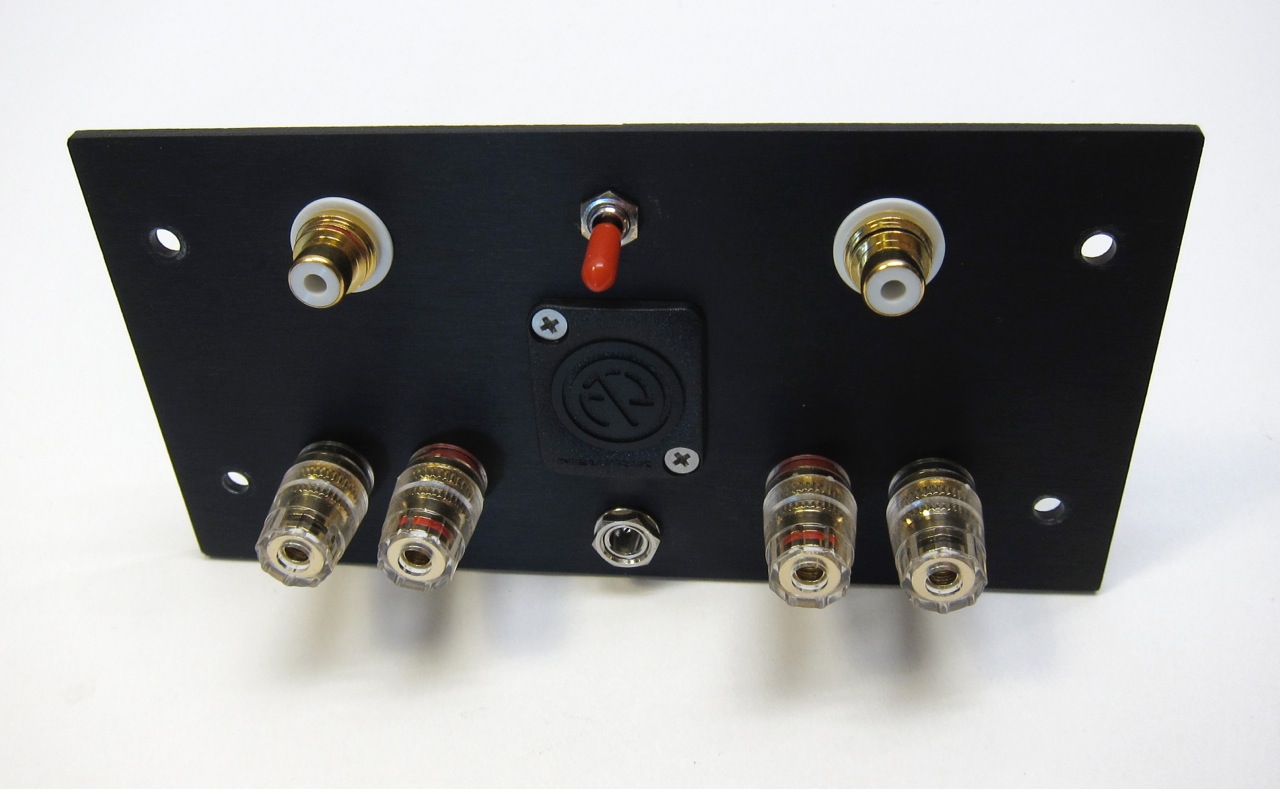
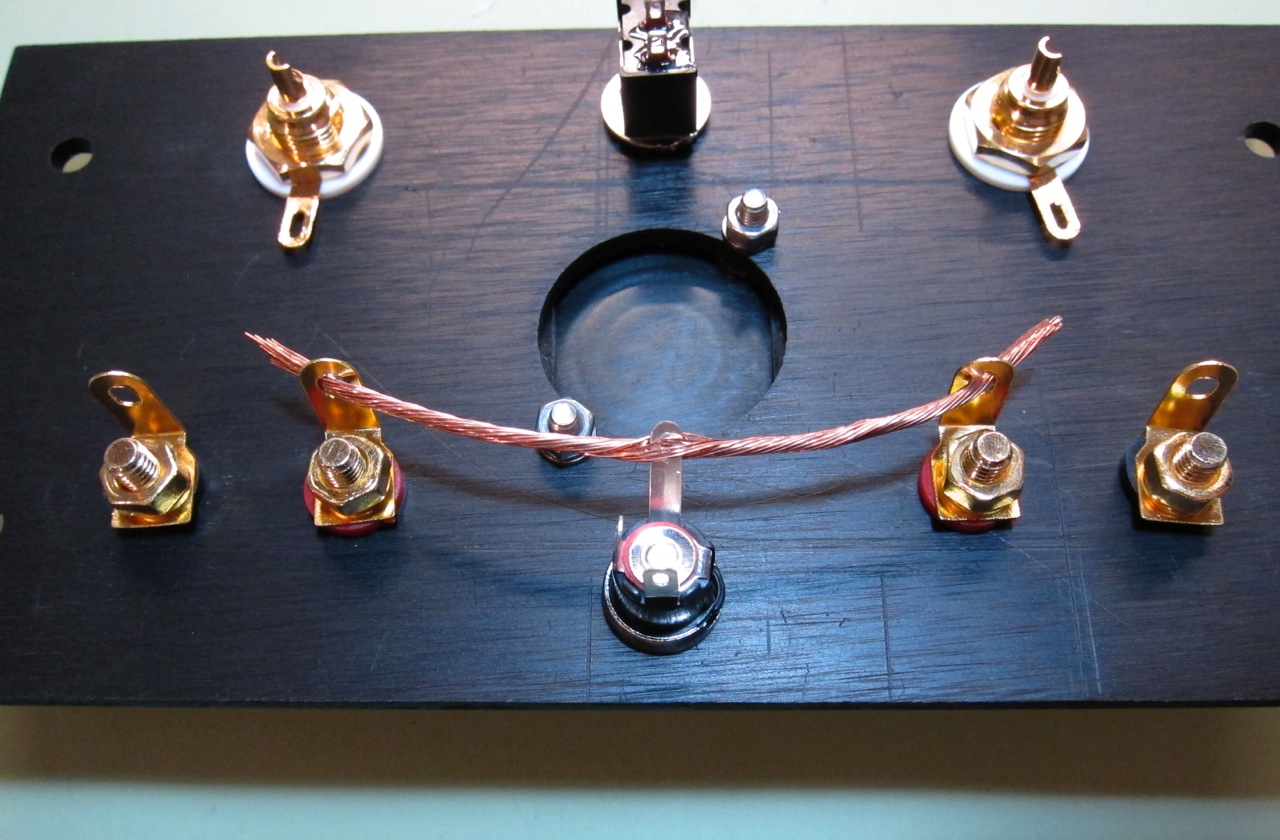
The bare wire will make a ground buss for the entire amplifier. Do not solder the wire to the speaker jacks yet.
Yes, the red speaker jacks are connected to ground - the amplifier circuit is inverting, attaching it this way restores proper phase.
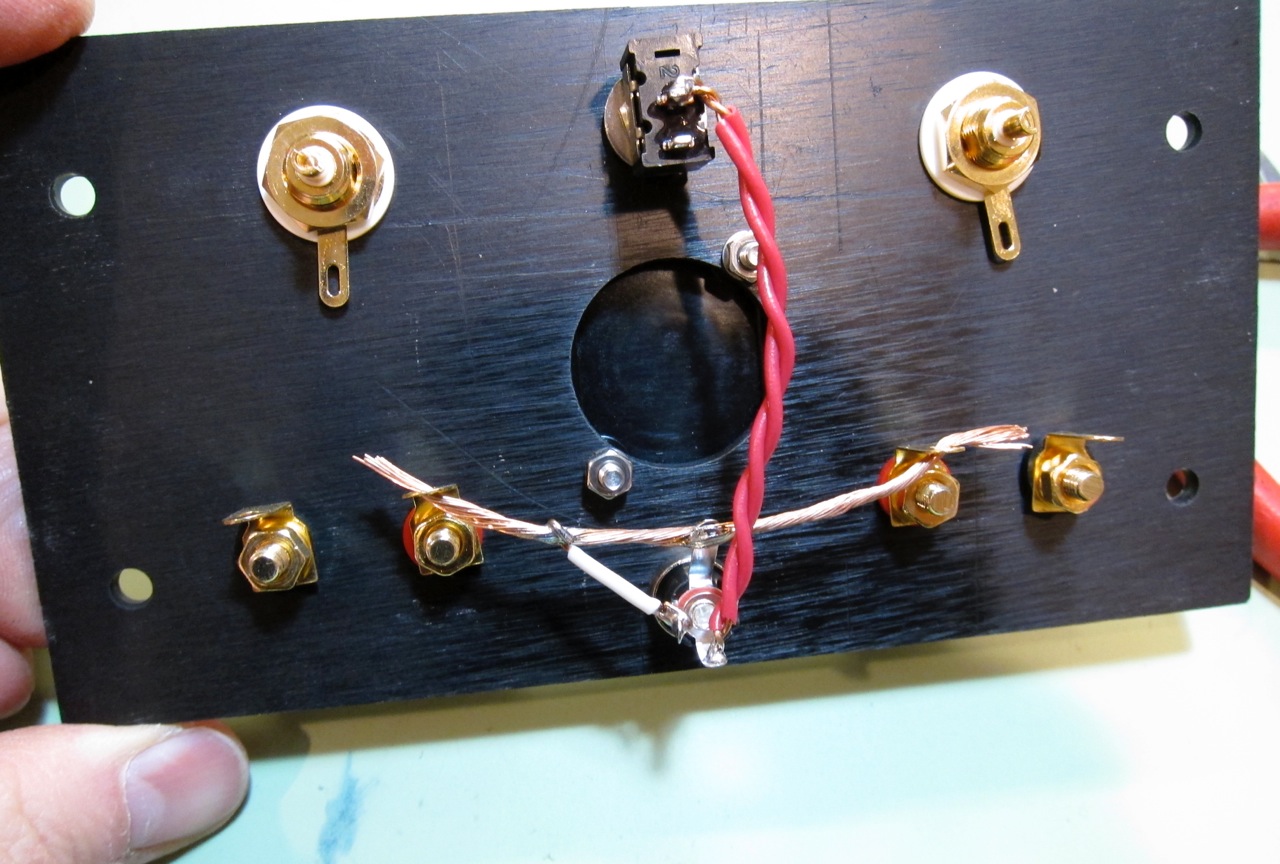
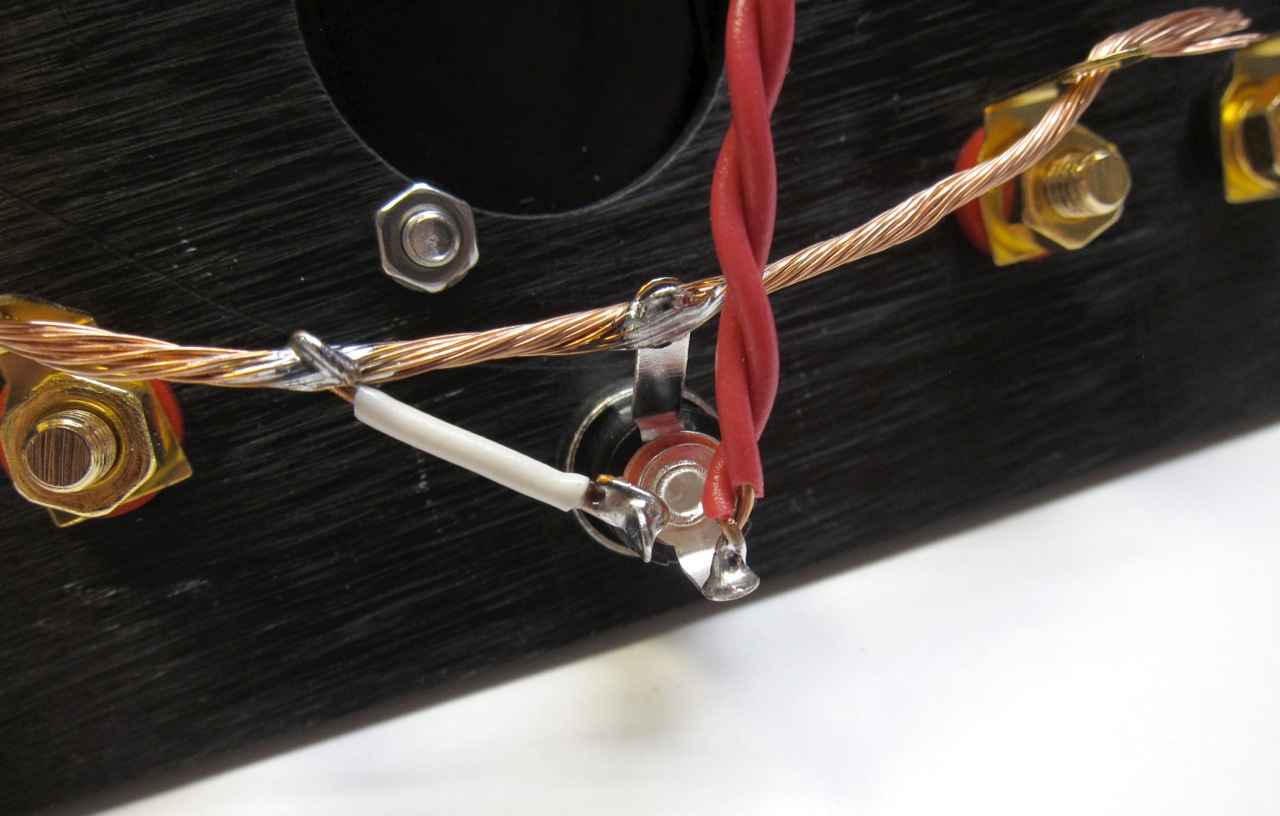
In this photo you can see that the top tab of the barrel is soldered to the buss wire. The outside connector of the barrel (PSU ground voltage) is connected to the the buss via the small white wire. PSU + voltage from the power brick is connected from the barrel pin to the center of the switch via the red wire. It's doubled up as both channels are fed from this connection.
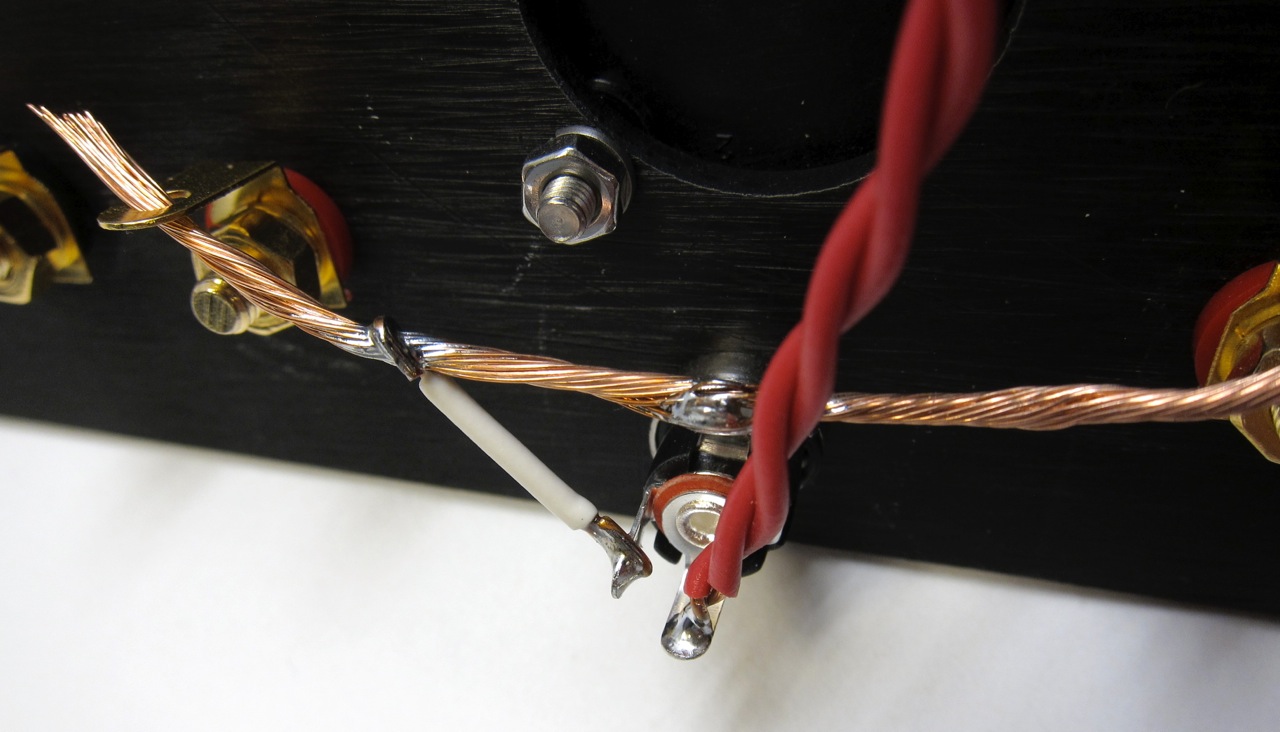
Be sure wires and solder connections do not touch
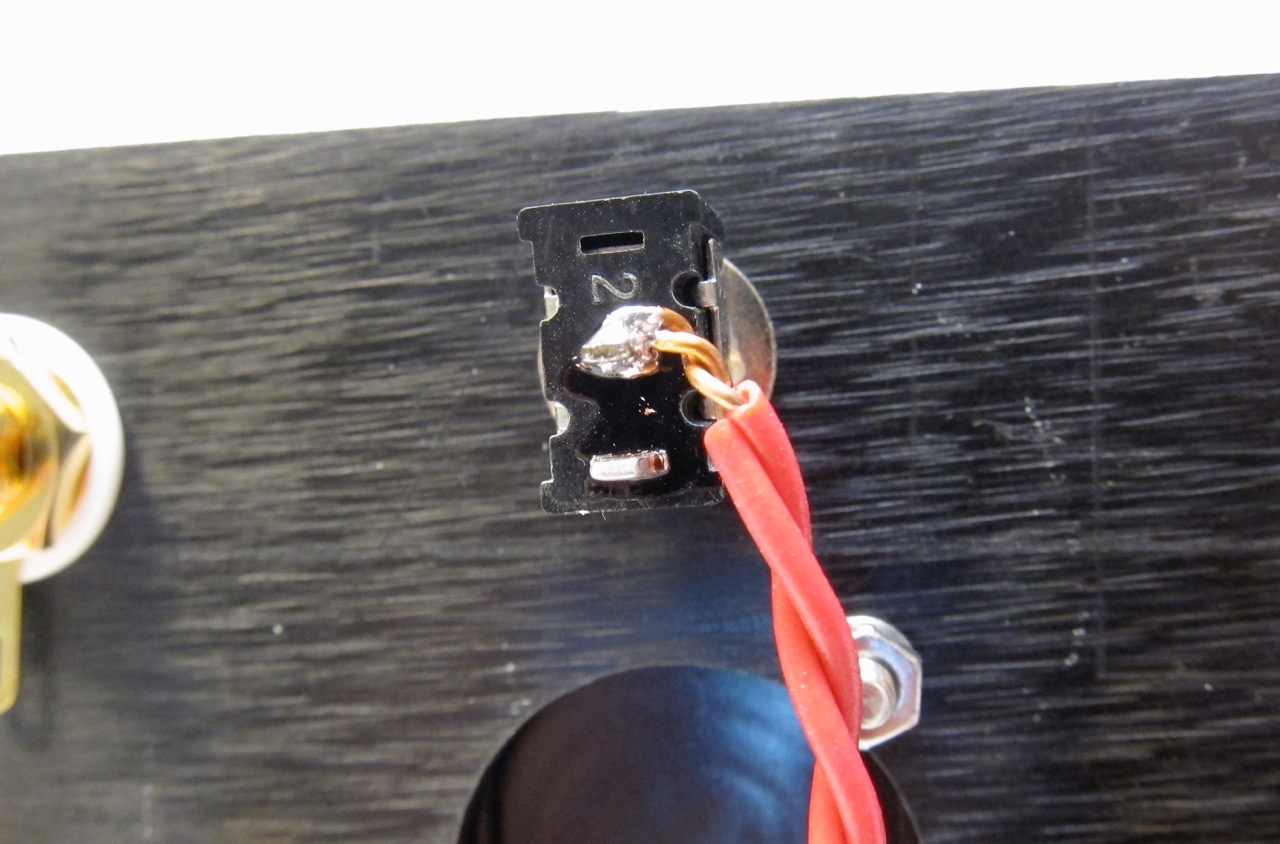
Power to the switch. Again, be careful to trim and clean up any wire after it's soldered.
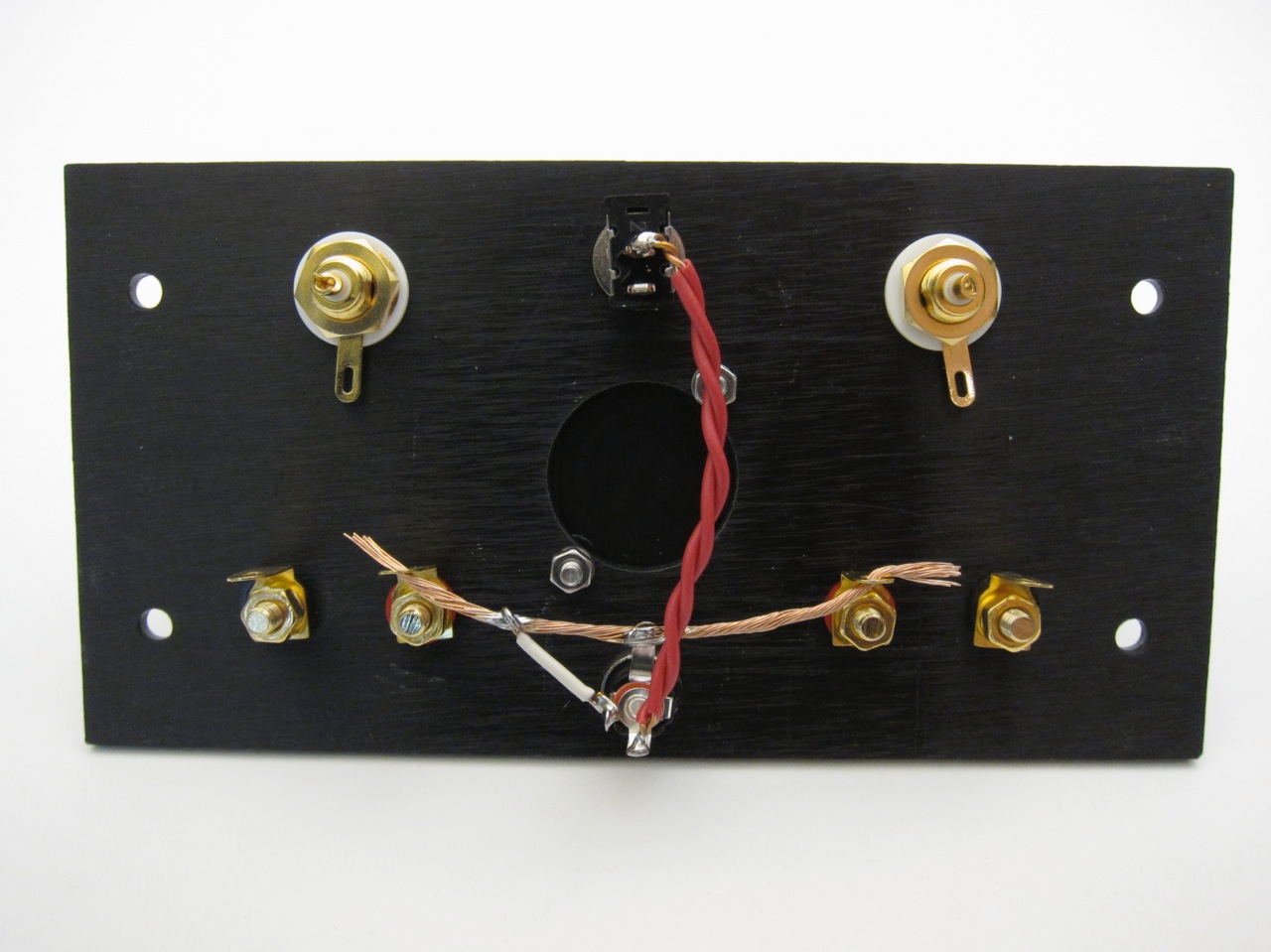
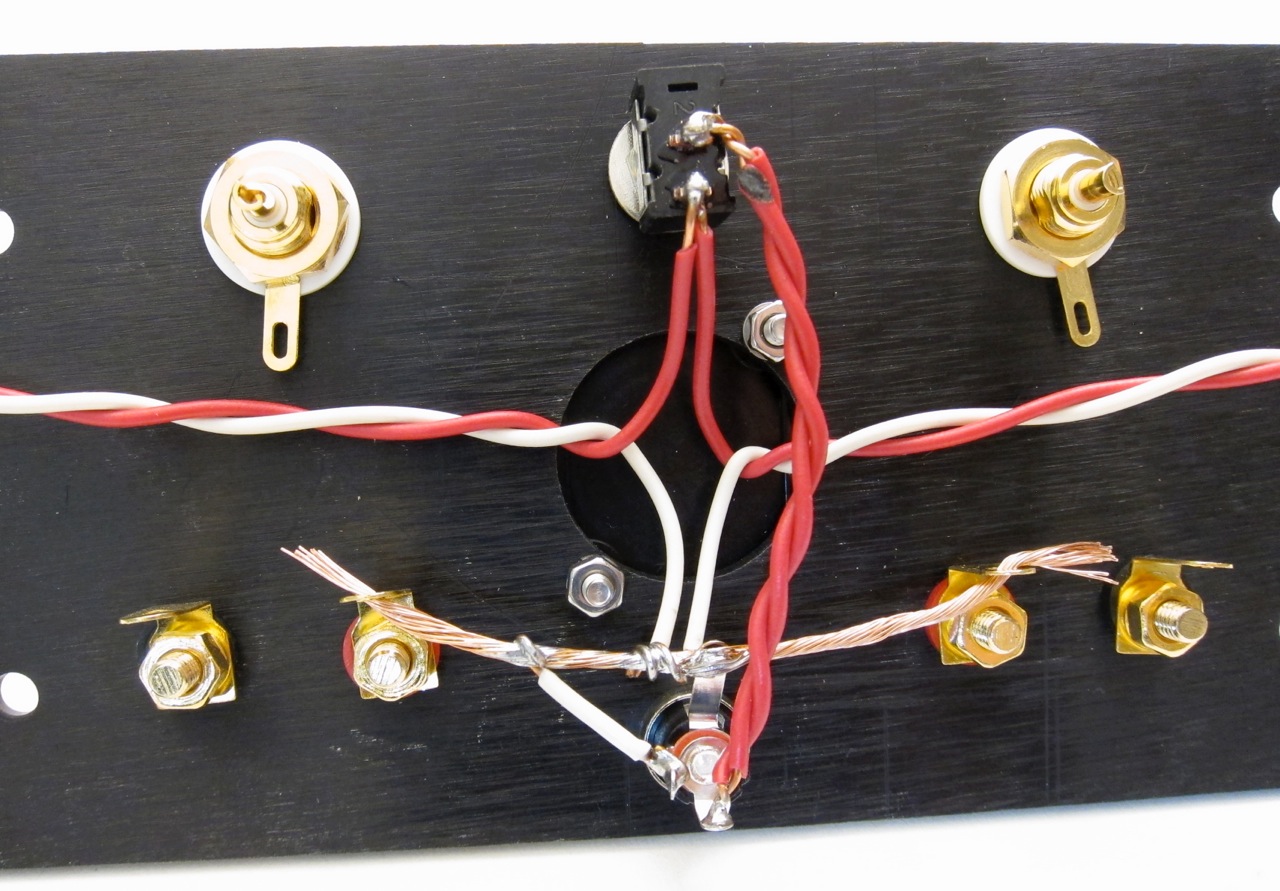
The red and white wires connect to GND and V+ on the Circuit Board. Red is V+, White is GND

Whoops, the soldering iron touched the insulation... 🙂
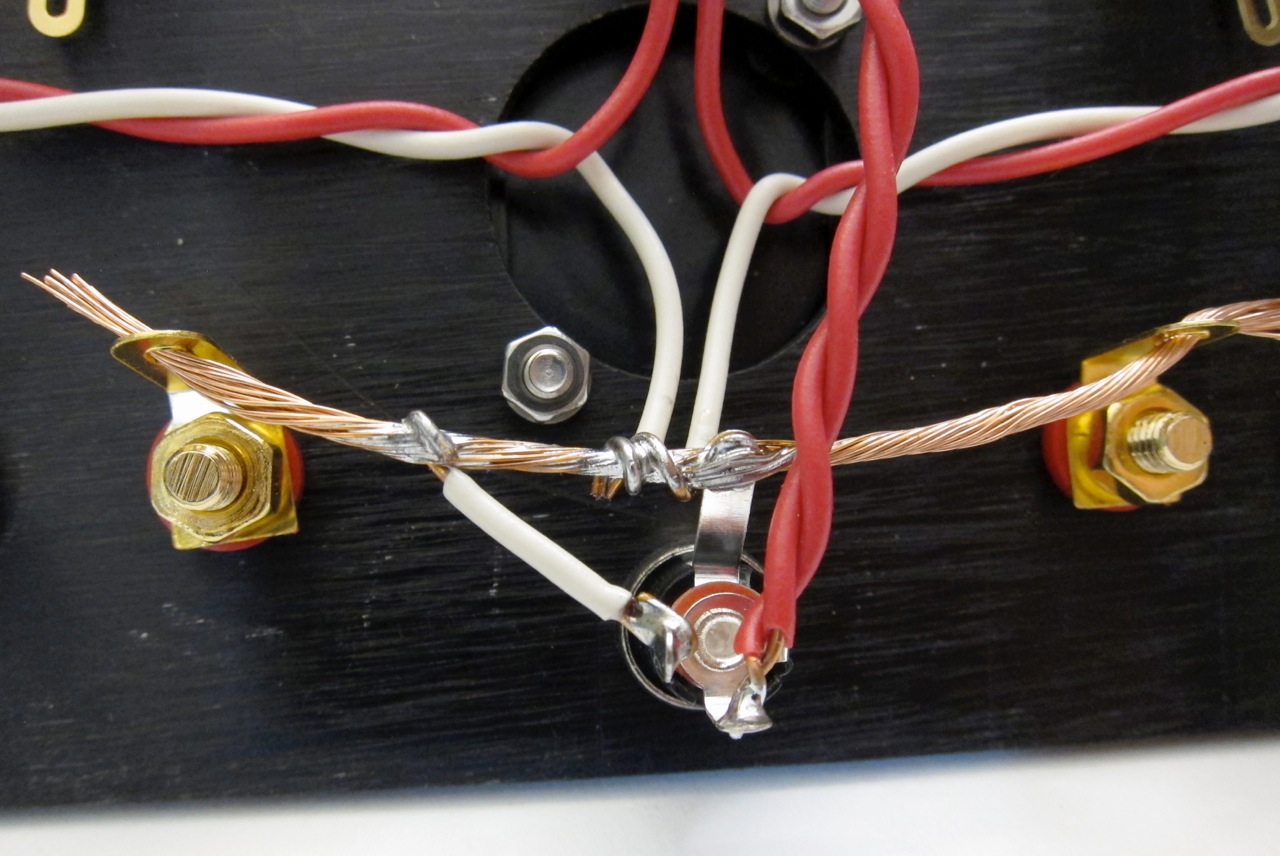
Connection detail.
Again, at this time do not solder the ground buss wire to the speaker posts. (They will be soldered later.)
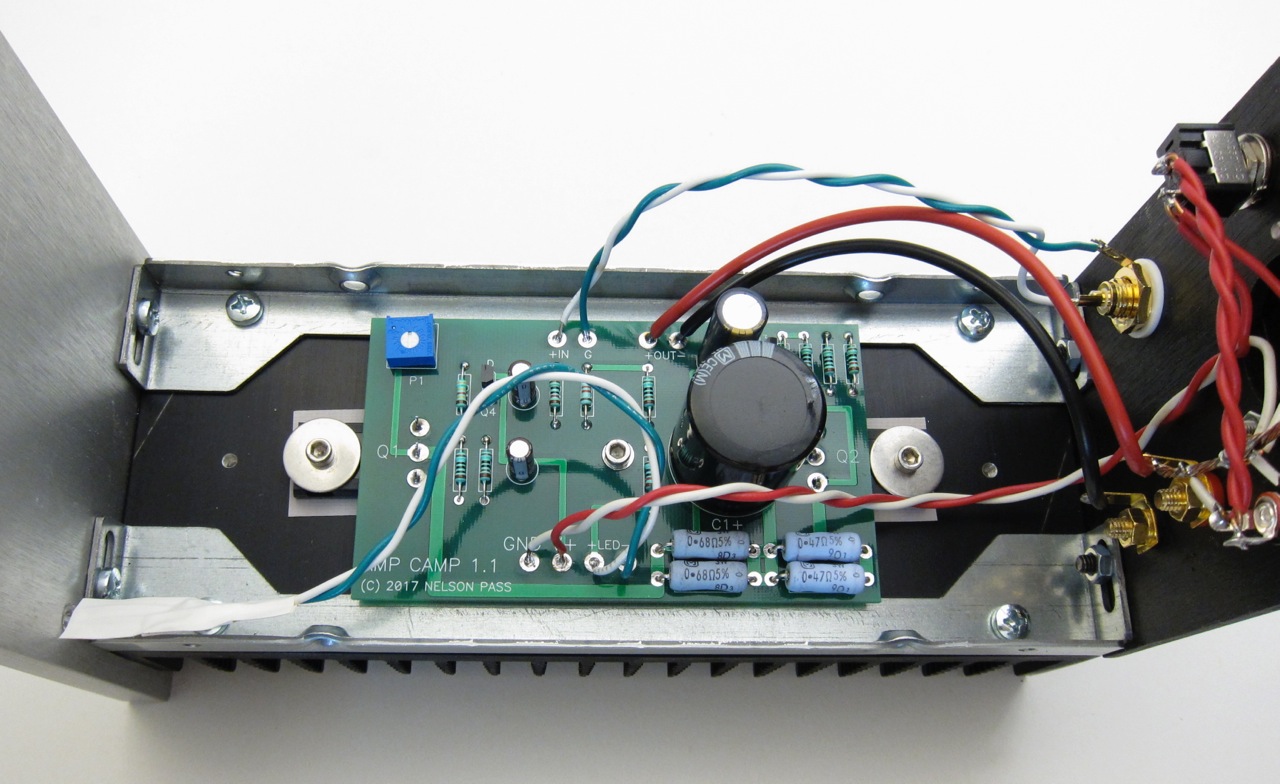
In this photo you can see the power connections from the circuit board to the switch.

Back panel hardware


Speaker post hardware

Viewing from the inside of the amplifier.
The colored shoulder washer goes on the outside, through the hole. This is to align the post so that no metal touches the chassis.

Then the other plastic washer.

The metal tab sits upon the plastic, then lockwasher, and nut.

Align the hole in the post to be vertical.

RCA post hardware

Again, viewing from the inside, the shoulder washer sits in the hole and keeps the metal of the RCA from touching the chassis



Power switch
Note that the big washer has a key to fit in the switch groove, and a bent tab. Point that tab towards the body of the switch, not the chassis

Star washer on the inside touching the chassis


Power jack

Lockwasher and nut on the outside of the chassis

Align so the longest tab is up


Please note that this photo shows the speaker posts reversed - place the red speaker posts inboard of the black.

This photo shows some small errors - Please place the Red speaker posts inboard of the black and rotate the switch 90deg so the terminals are on the bottom and center. Later photos will show why.

The solder lugs of the PSU barrel connector are all different lengths. Attach so the longest one is up.

The tab that connects to the center (the bottom tab, in this photo) is the PSU's pin connection.

This photo shown the proper configuration of the jacks and switch. Red inboard, black outboard, switch alignment where up will be on.


The bare wire will make a ground buss for the entire amplifier. Do not solder the wire to the speaker jacks yet.
Yes, the red speaker jacks are connected to ground - the amplifier circuit is inverting, attaching it this way restores proper phase.


In this photo you can see that the top tab of the barrel is soldered to the buss wire. The outside connector of the barrel (PSU ground voltage) is connected to the the buss via the small white wire. PSU + voltage from the power brick is connected from the barrel pin to the center of the switch via the red wire. It's doubled up as both channels are fed from this connection.

Be sure wires and solder connections do not touch

Power to the switch. Again, be careful to trim and clean up any wire after it's soldered.


The red and white wires connect to GND and V+ on the Circuit Board. Red is V+, White is GND

Whoops, the soldering iron touched the insulation... 🙂

Connection detail.
Again, at this time do not solder the ground buss wire to the speaker posts. (They will be soldered later.)

In this photo you can see the power connections from the circuit board to the switch.
Last edited:
Wiring
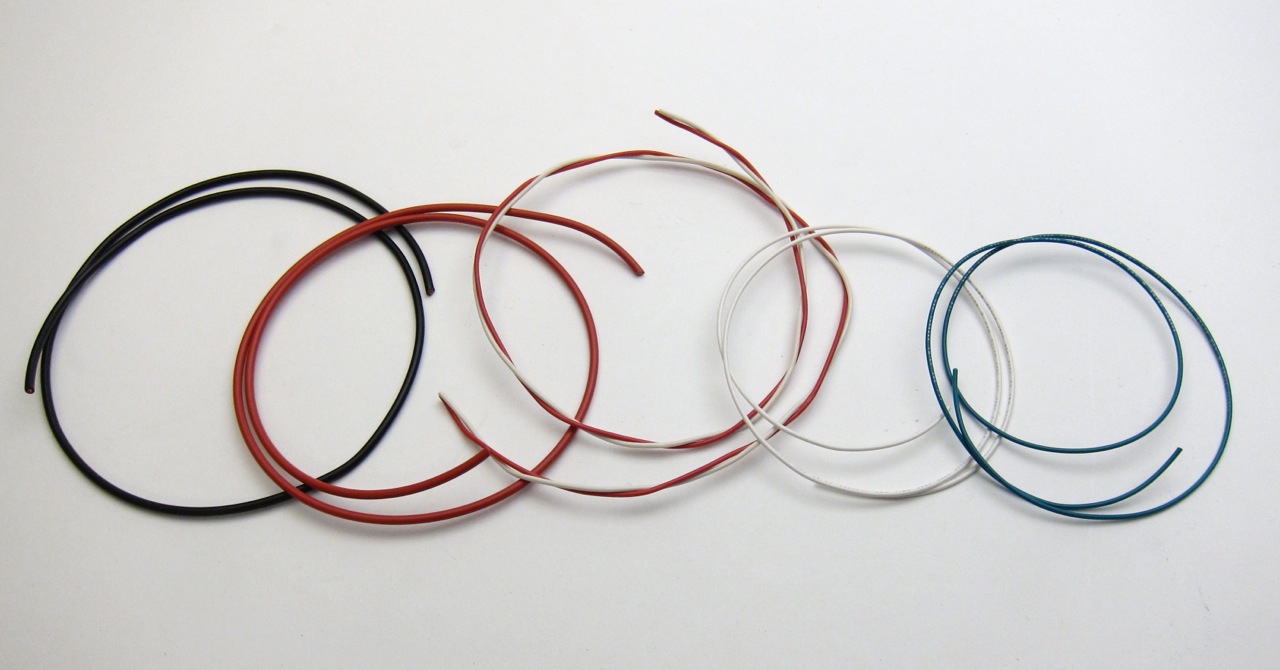
Supplied wire
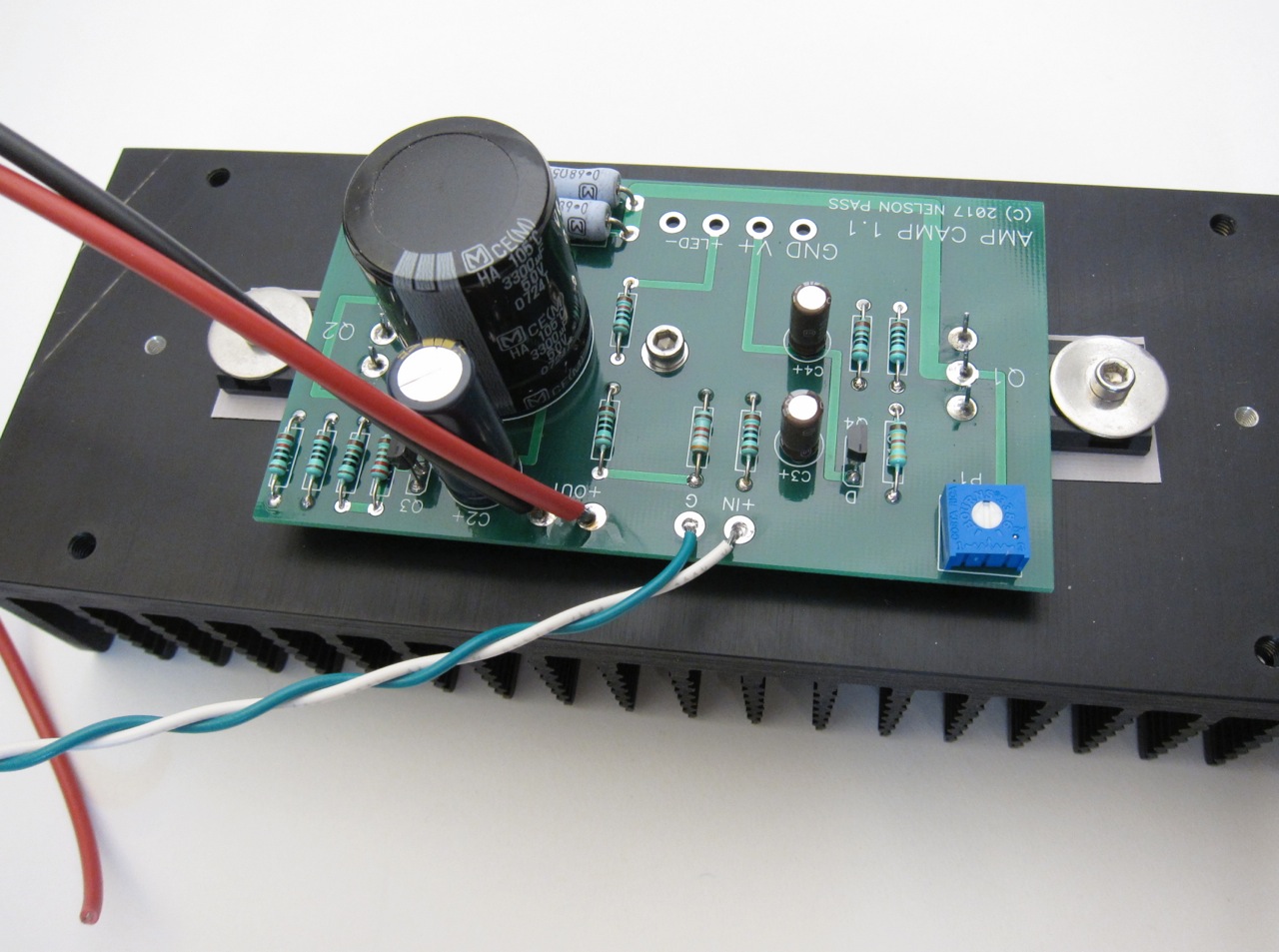
Use some of the red (+) and black (-) wire for the speaker outputs, and twist the green (-) and white (+) together for the input.
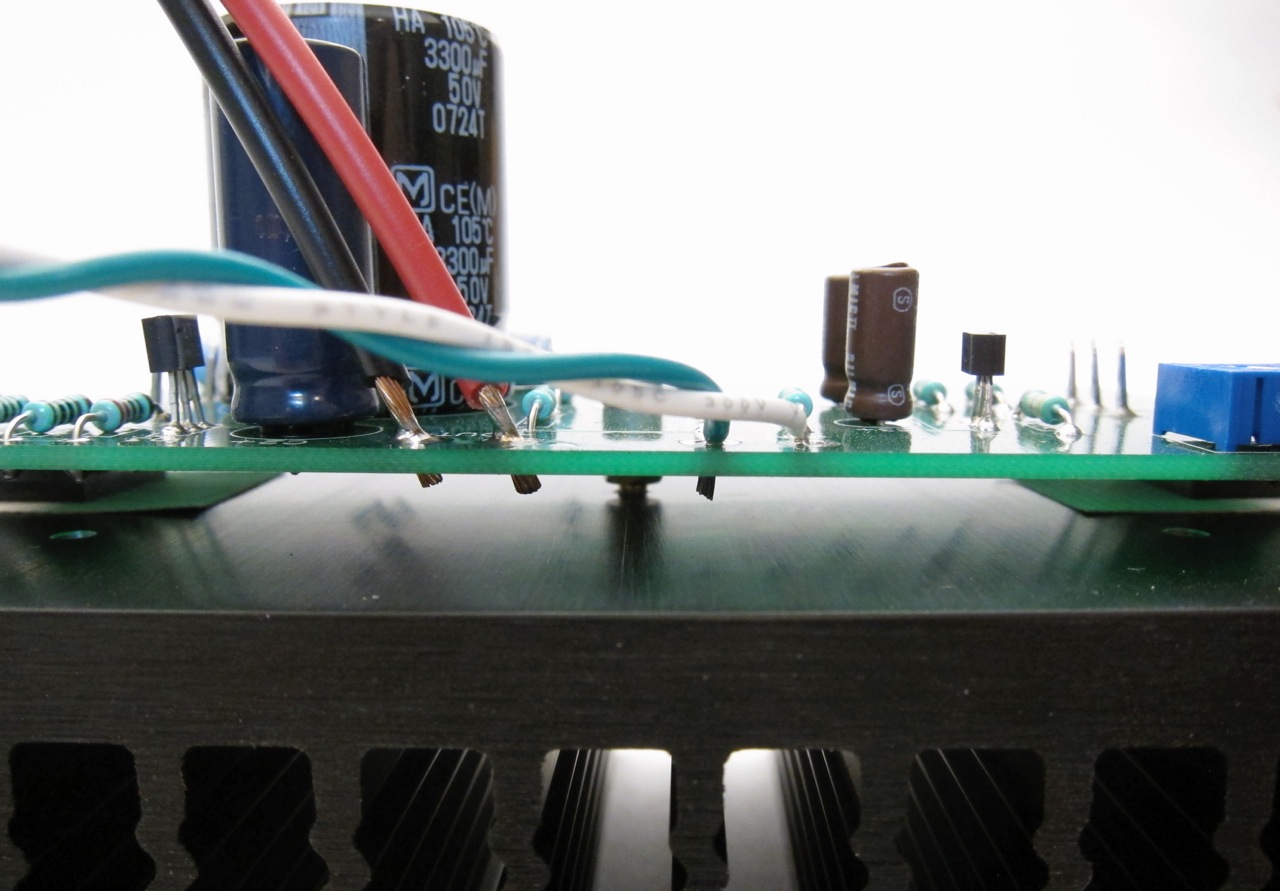
Strip the insulation and trim so it sticks through about 1-2mm. Make sure it does not touch the heatsink!
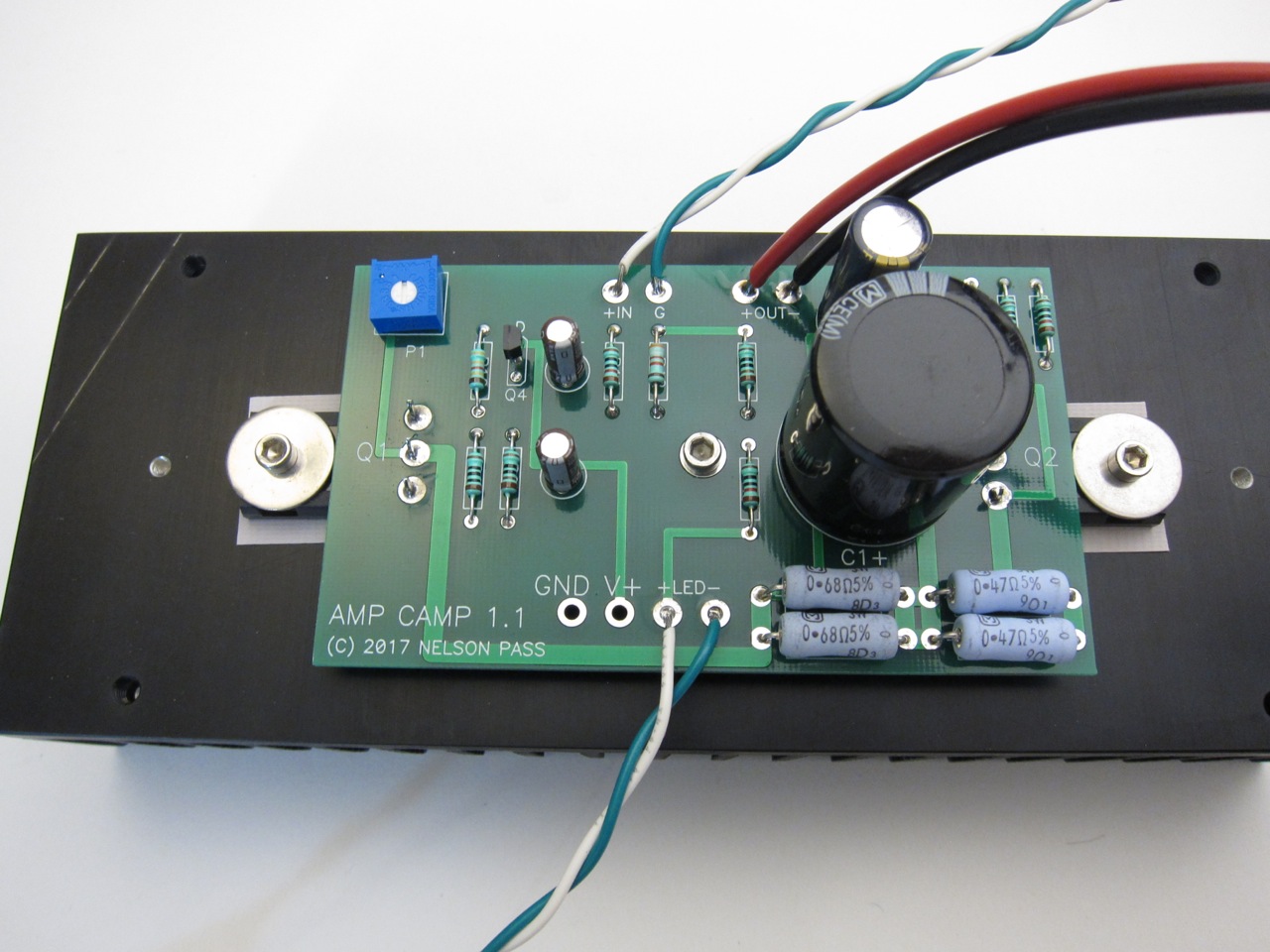
The LED wiring is next. Green (-) and white (+)
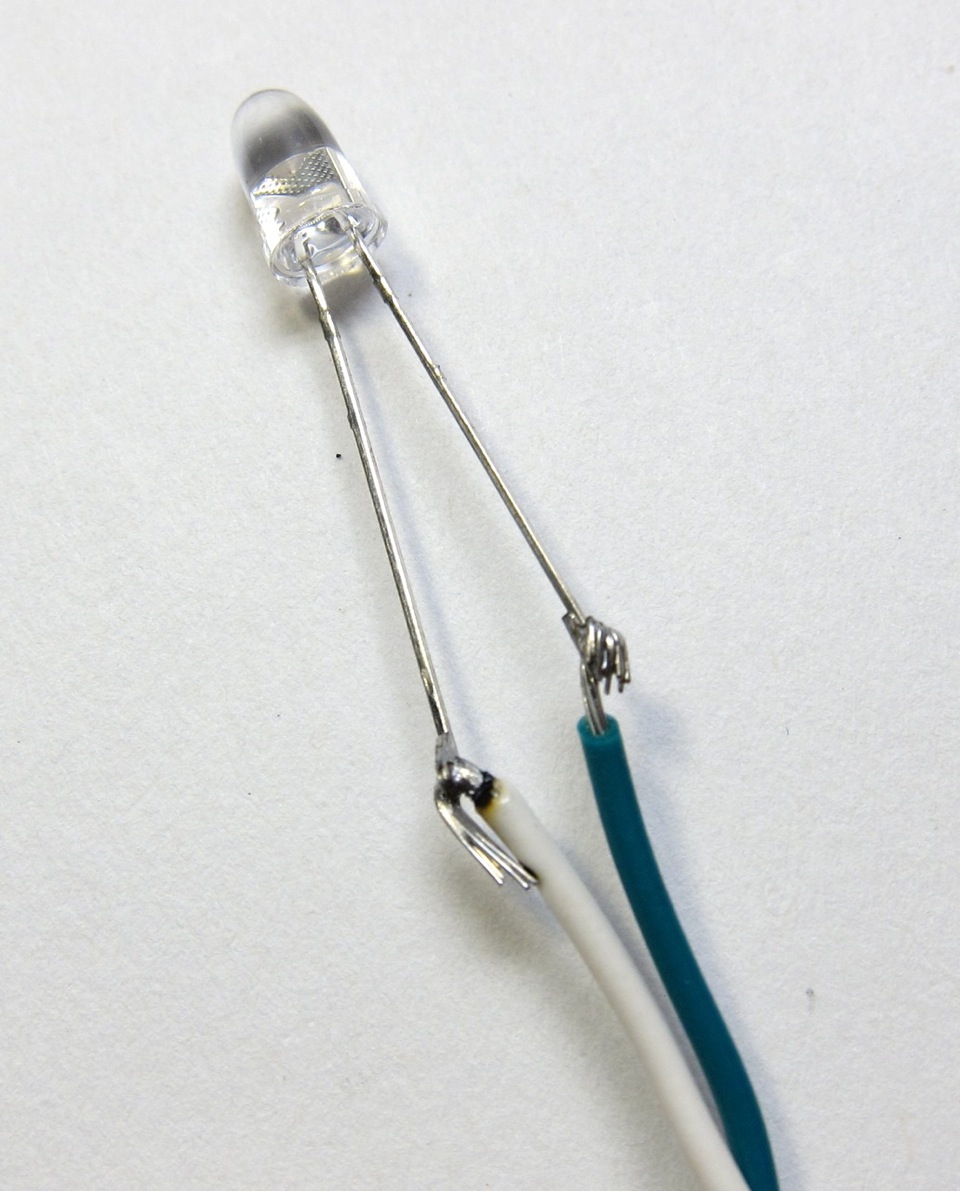
Long lead to white, short lead to green
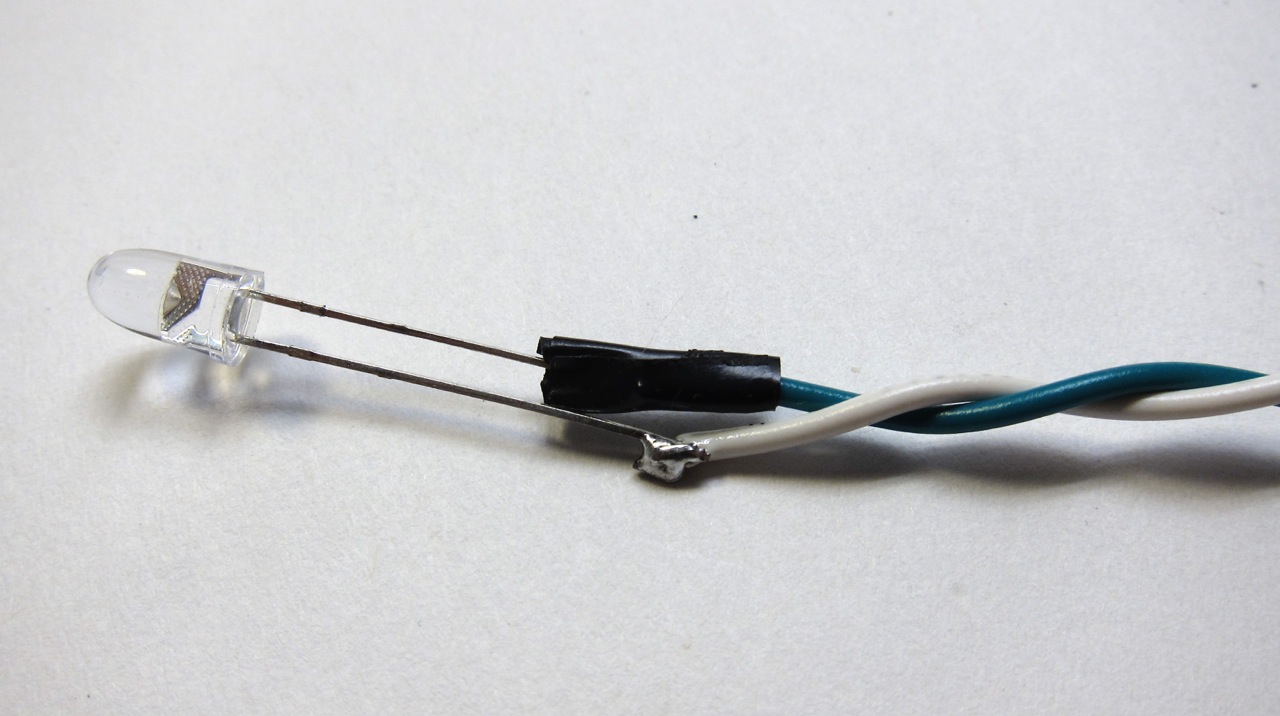
A bit of tape on one on the solder joints
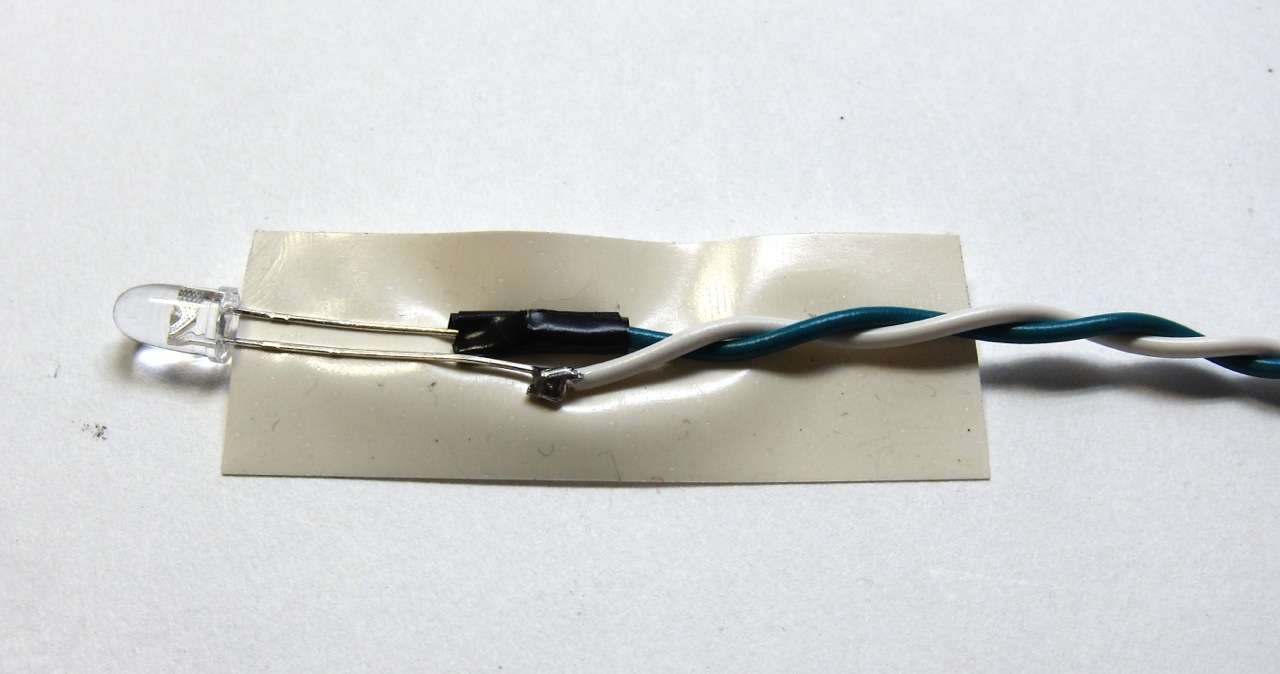
Then tape as shown
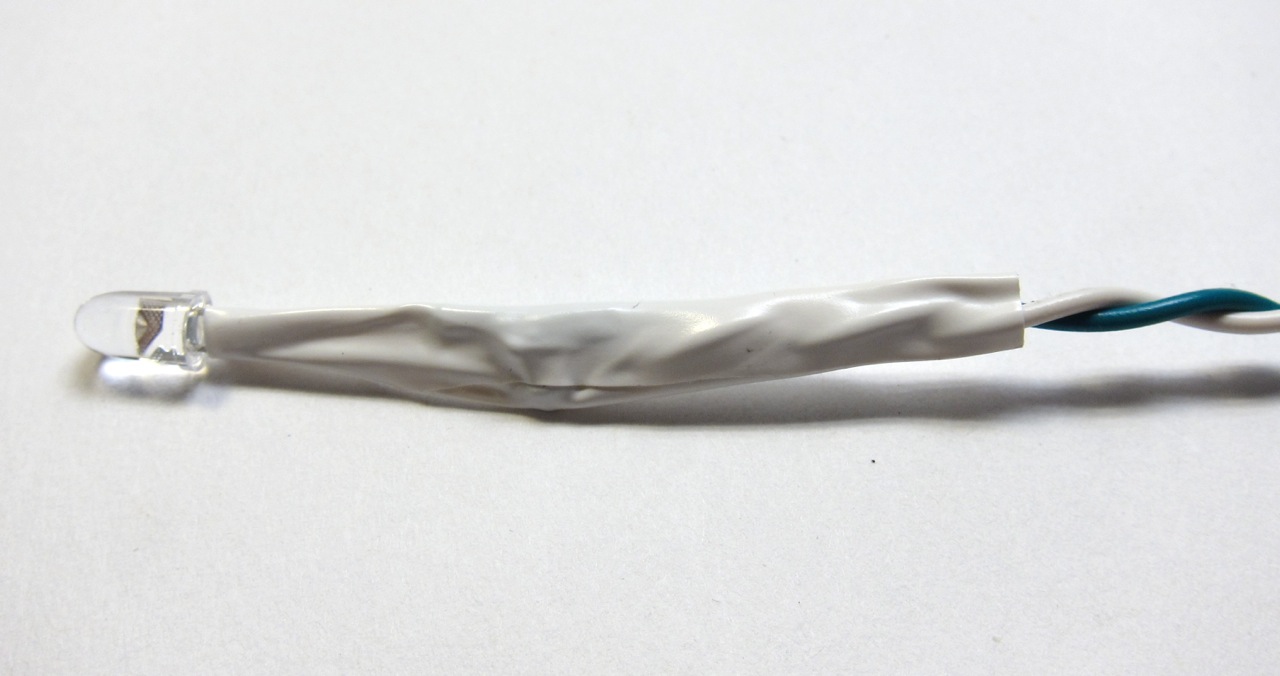
This is to keep the leads of the LED from touching.

The LEDs are routed forward and placed in the front panel hole - the wire stiffness will keep them in place, particularly if you make the wire a little longer than necessary.
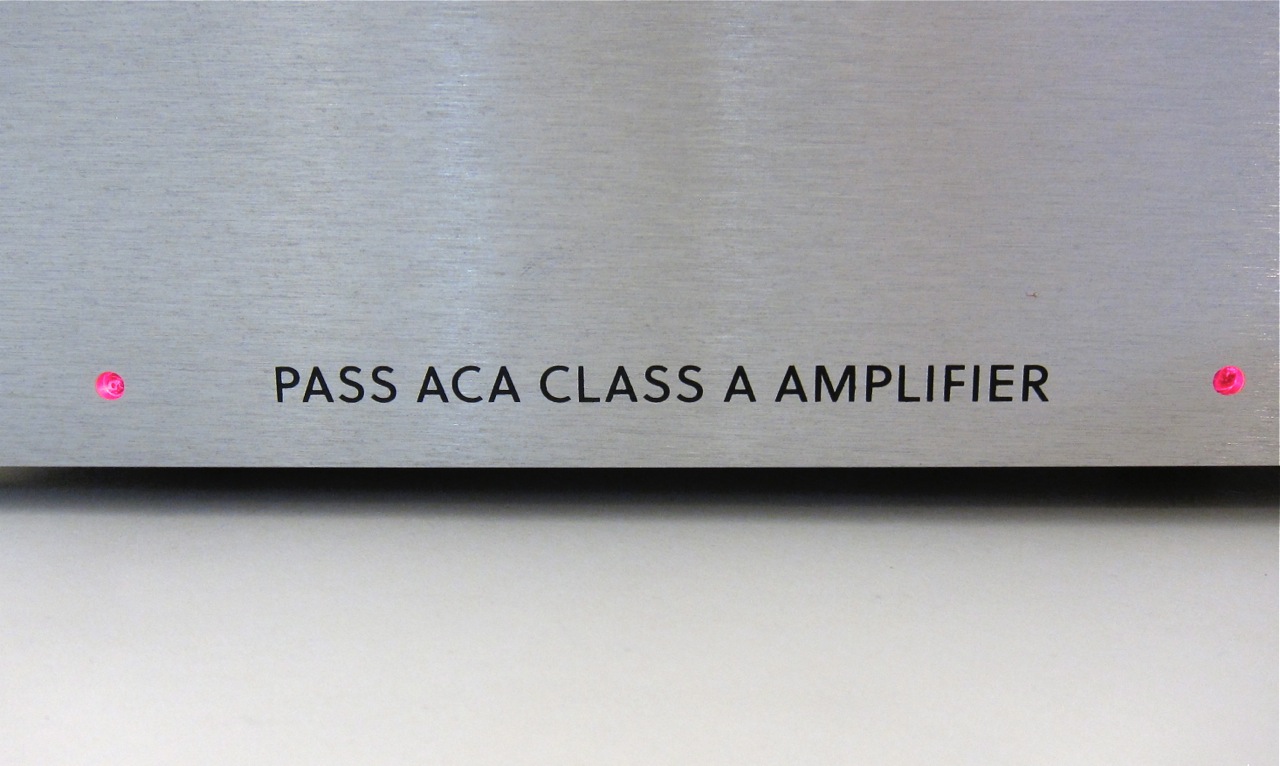
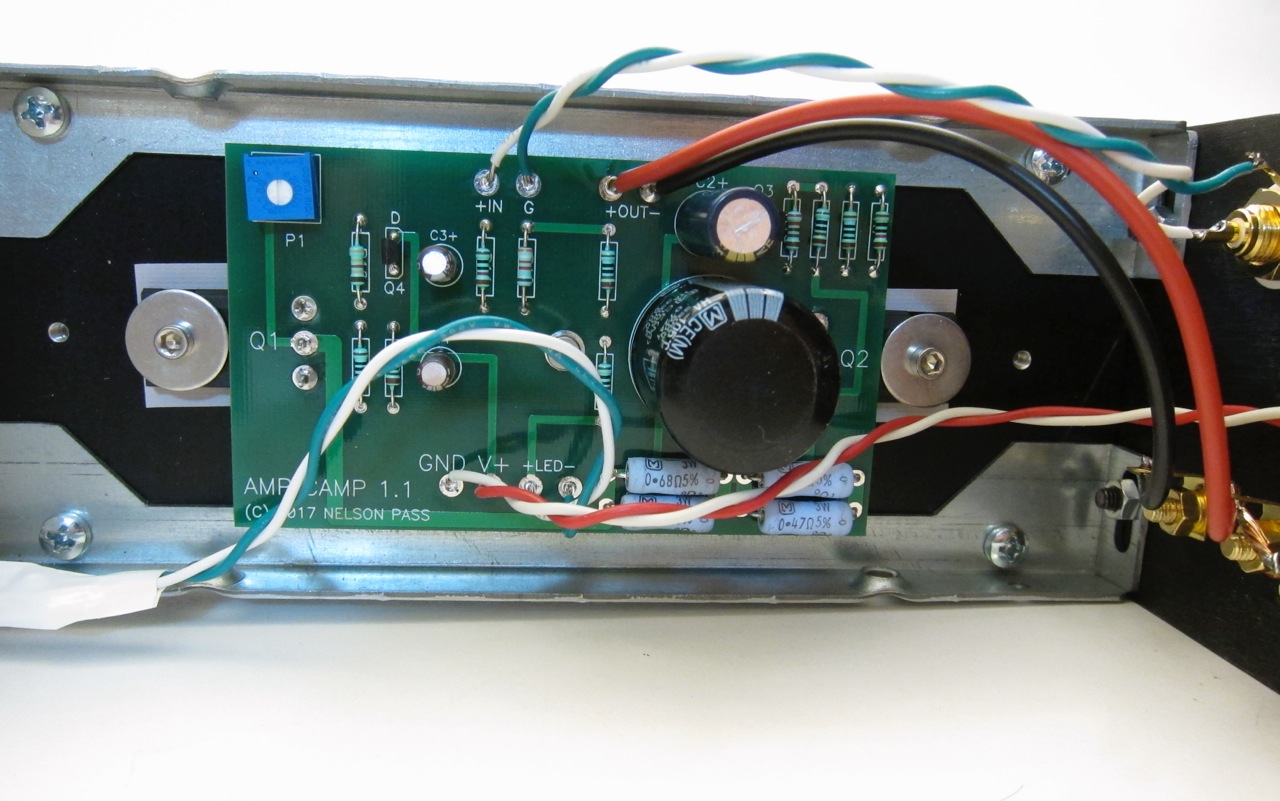
PCB to back panel wiring. Power from the back panel, red (+), white (-)
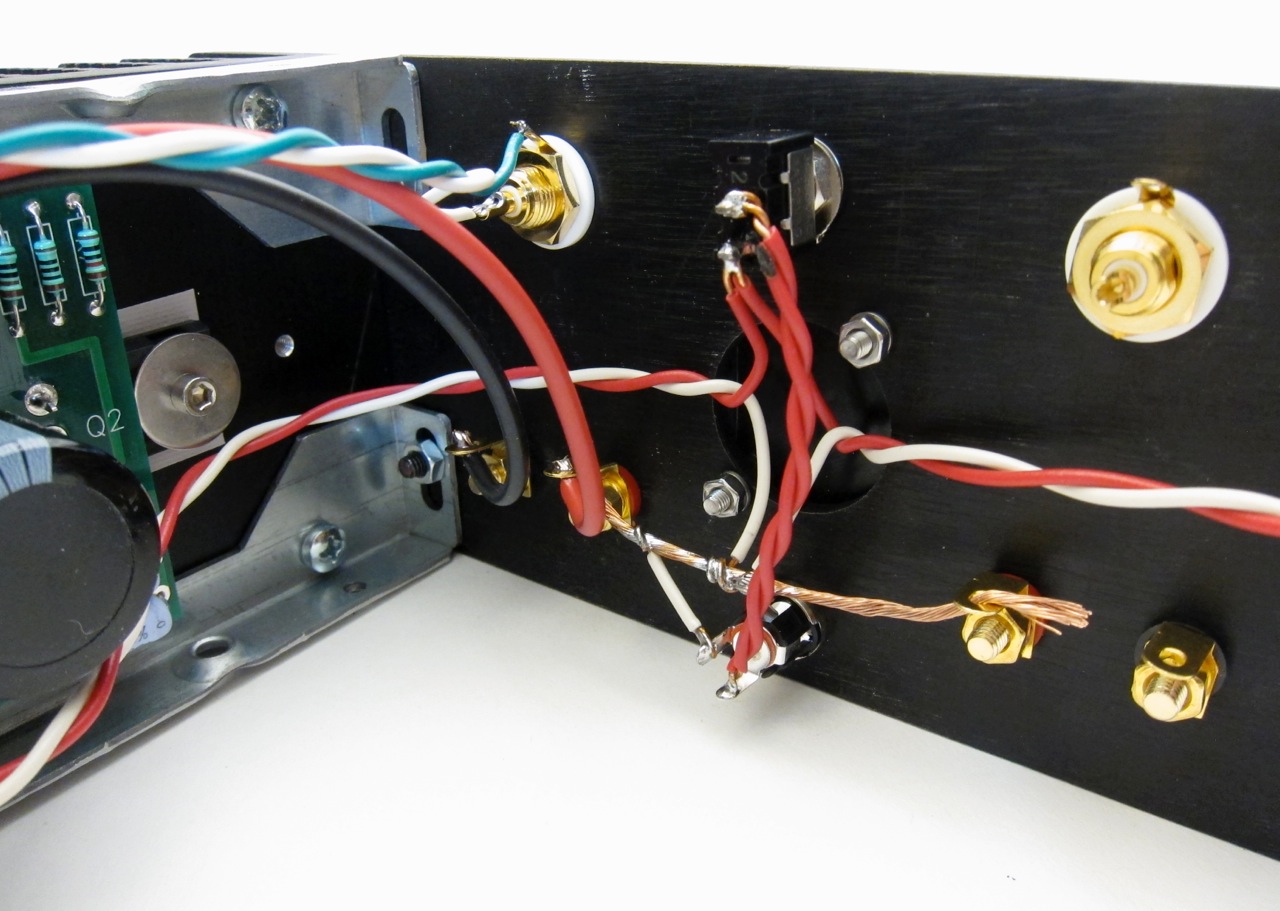
Input wiring shown - white (+) is RCA jack center pin, green (-) is RCA tab
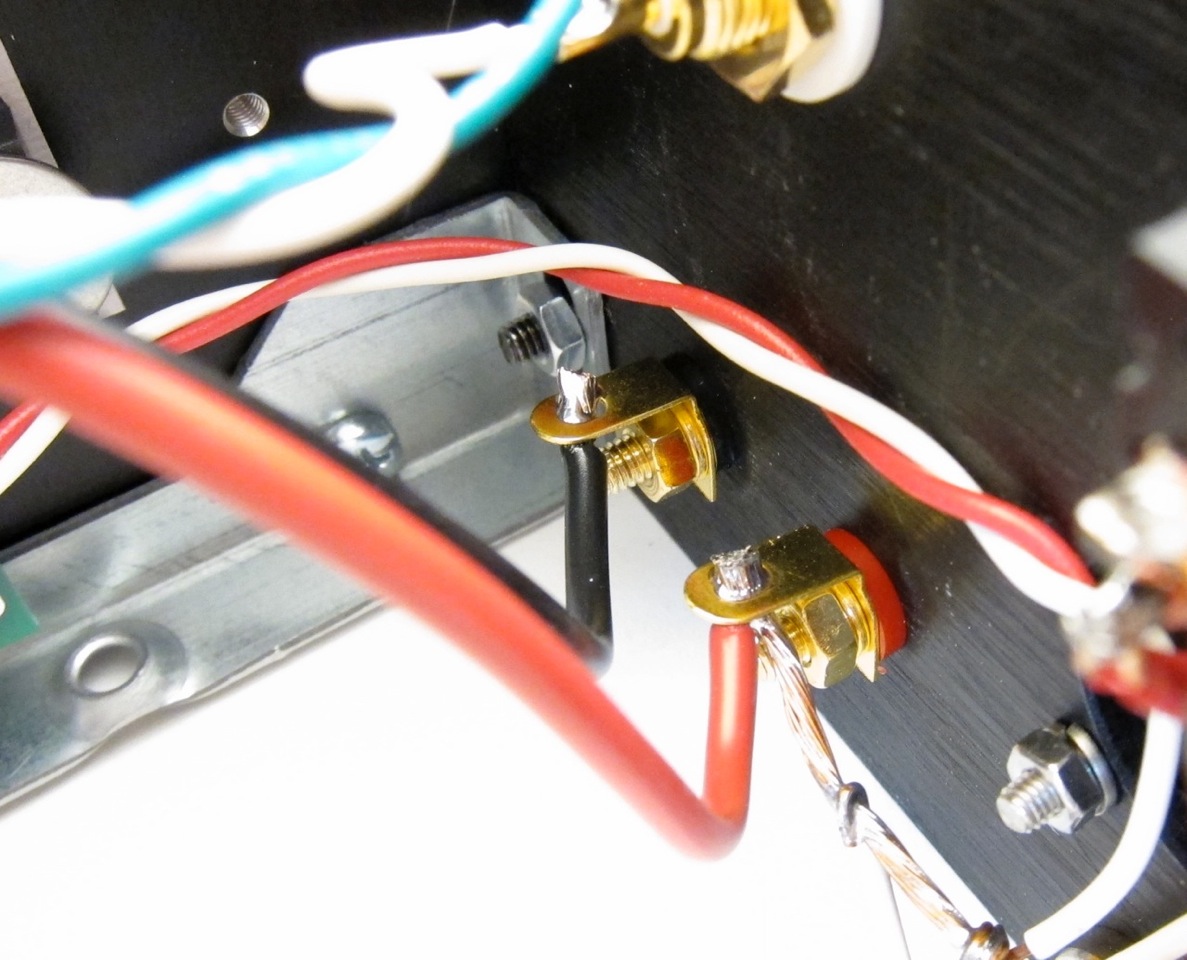
Now you may solder the ground buss to the speaker post.
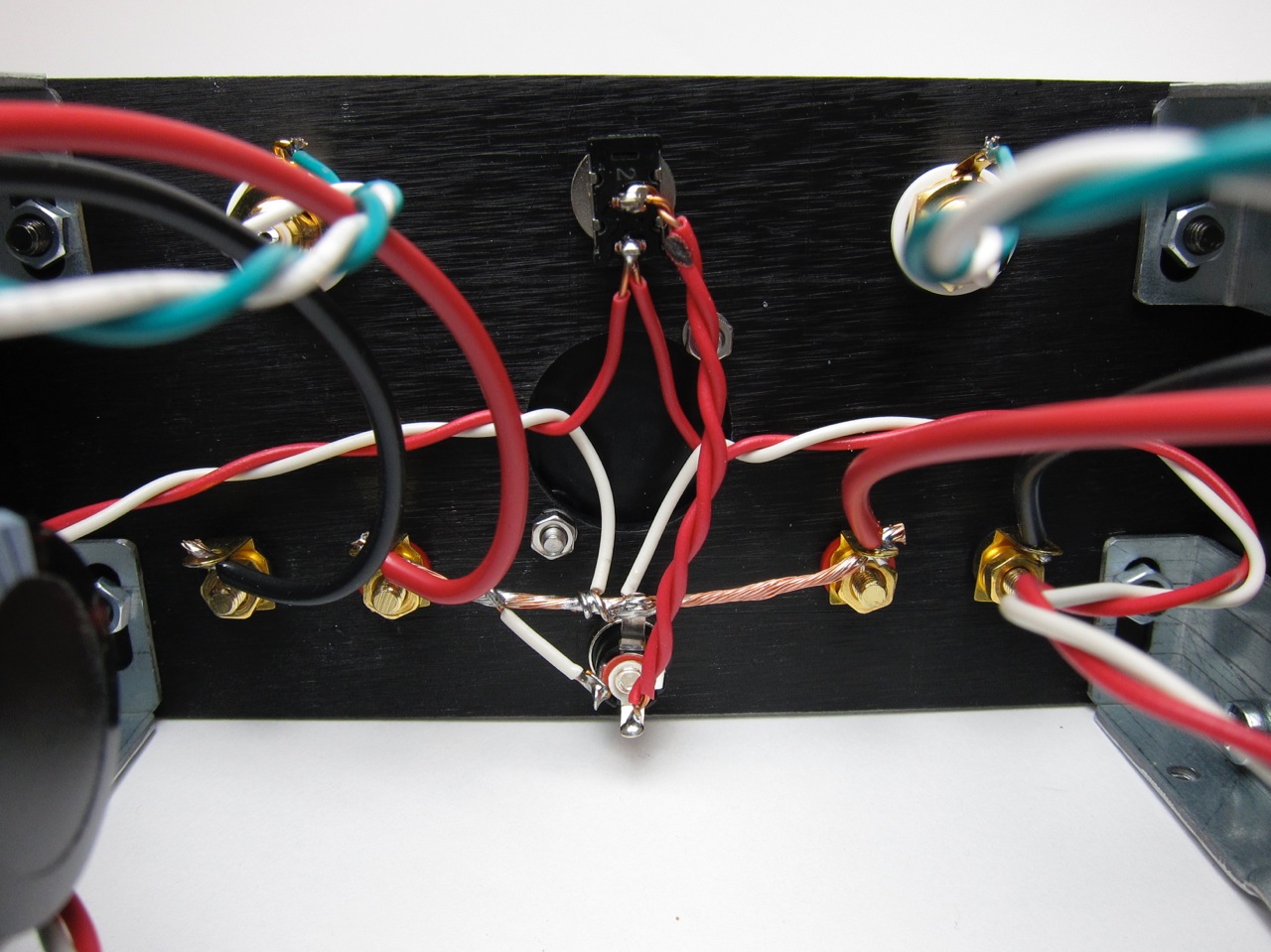
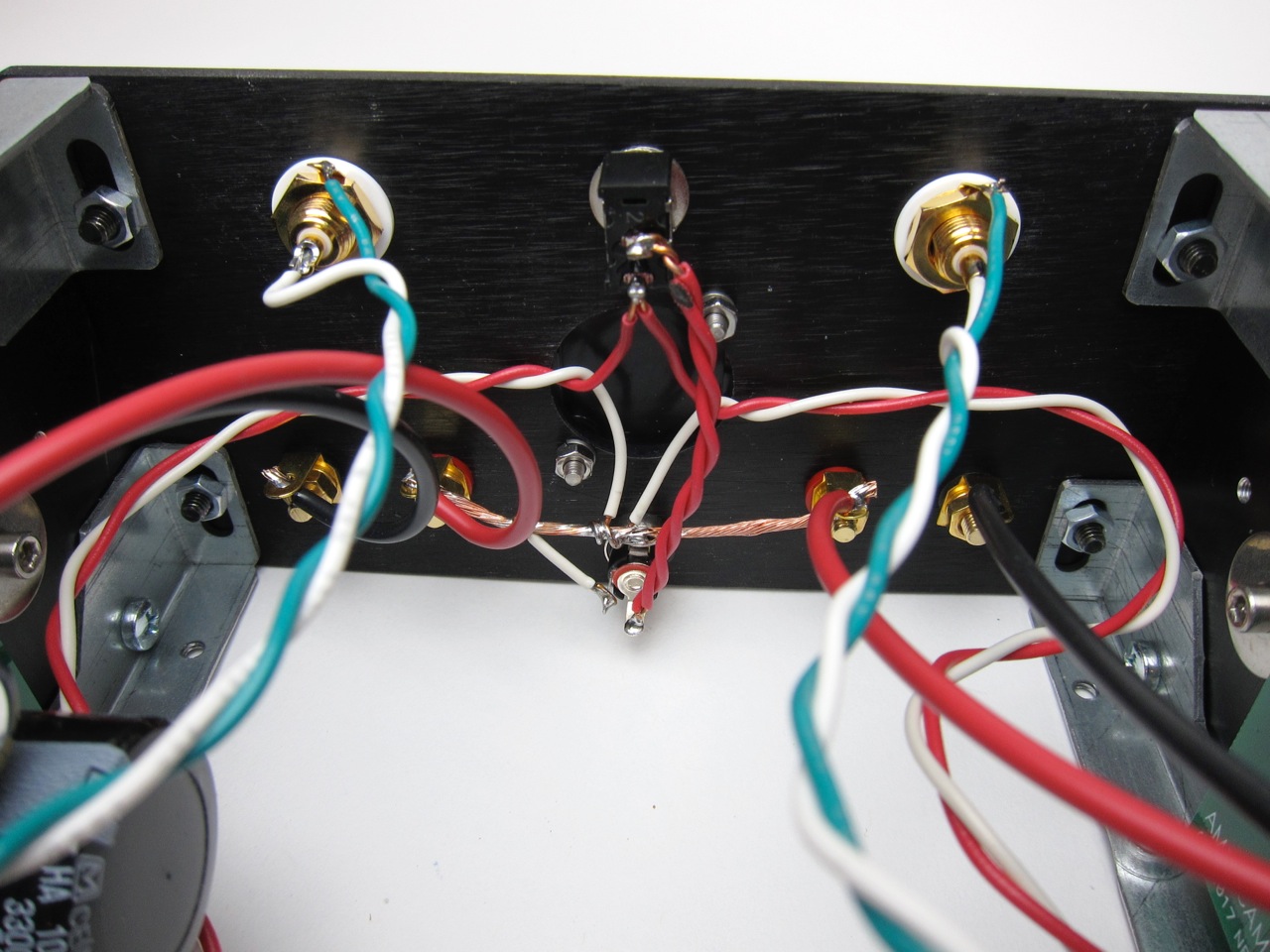
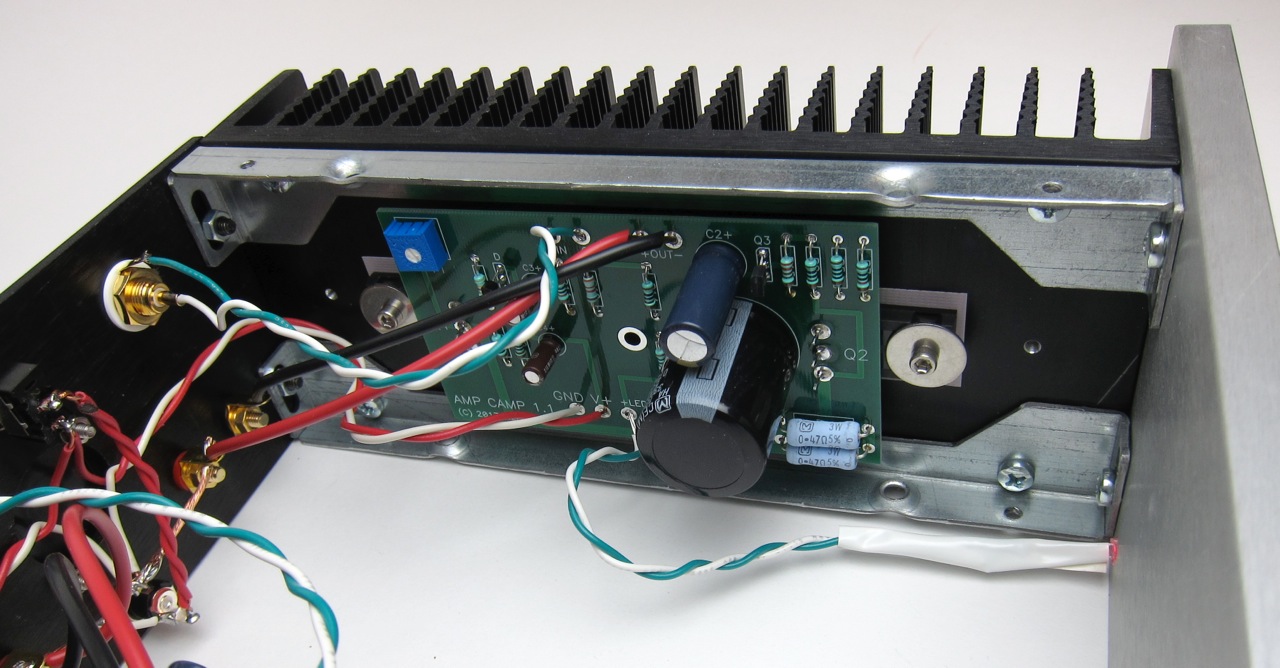

Supplied wire

Use some of the red (+) and black (-) wire for the speaker outputs, and twist the green (-) and white (+) together for the input.

Strip the insulation and trim so it sticks through about 1-2mm. Make sure it does not touch the heatsink!

The LED wiring is next. Green (-) and white (+)

Long lead to white, short lead to green

A bit of tape on one on the solder joints

Then tape as shown

This is to keep the leads of the LED from touching.

The LEDs are routed forward and placed in the front panel hole - the wire stiffness will keep them in place, particularly if you make the wire a little longer than necessary.


PCB to back panel wiring. Power from the back panel, red (+), white (-)

Input wiring shown - white (+) is RCA jack center pin, green (-) is RCA tab

Now you may solder the ground buss to the speaker post.



Last edited:
Bias set and Testing
Setting the bias is very easy;
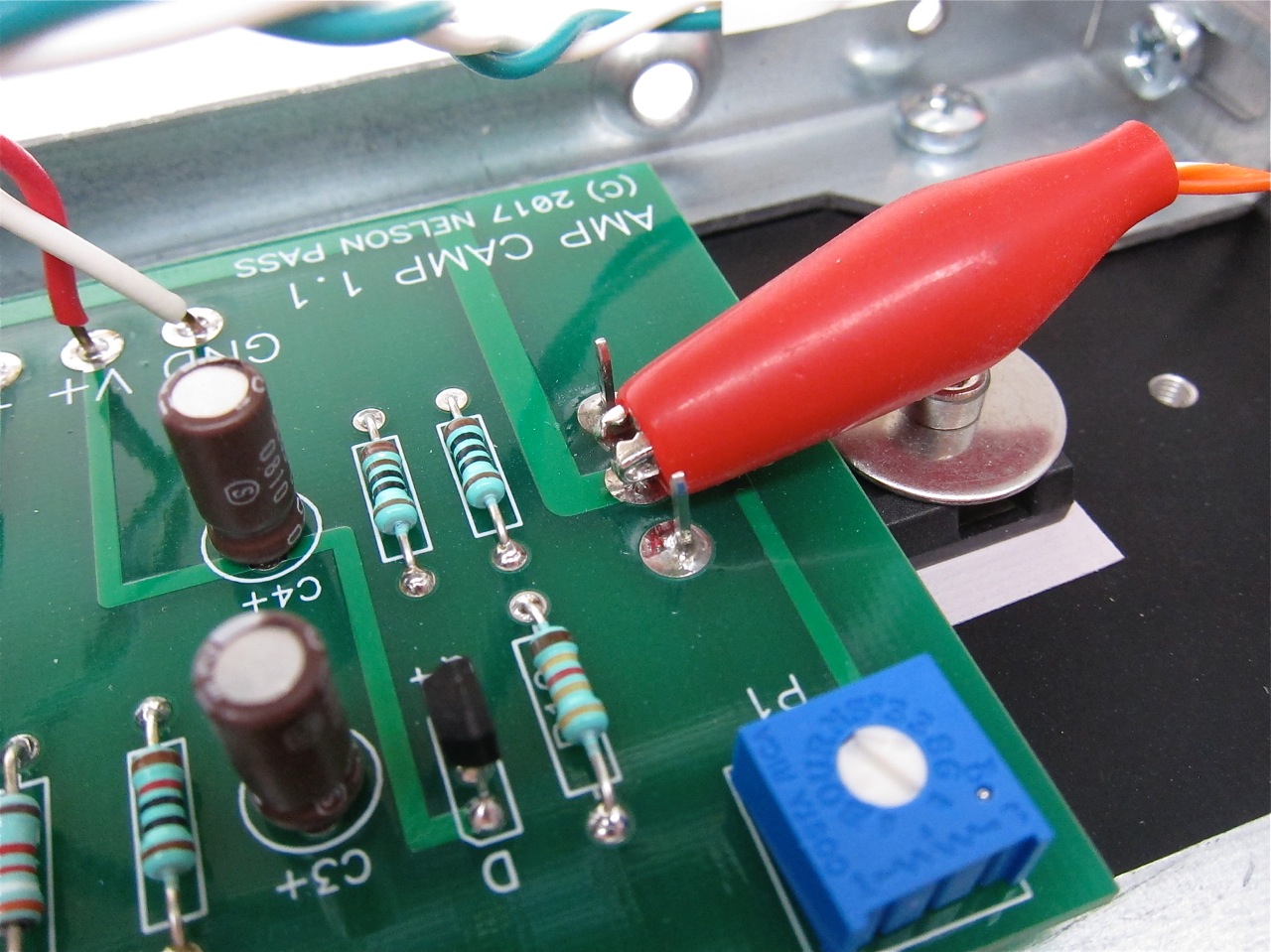
Connect your DMM red lead to pin 2 of Q1
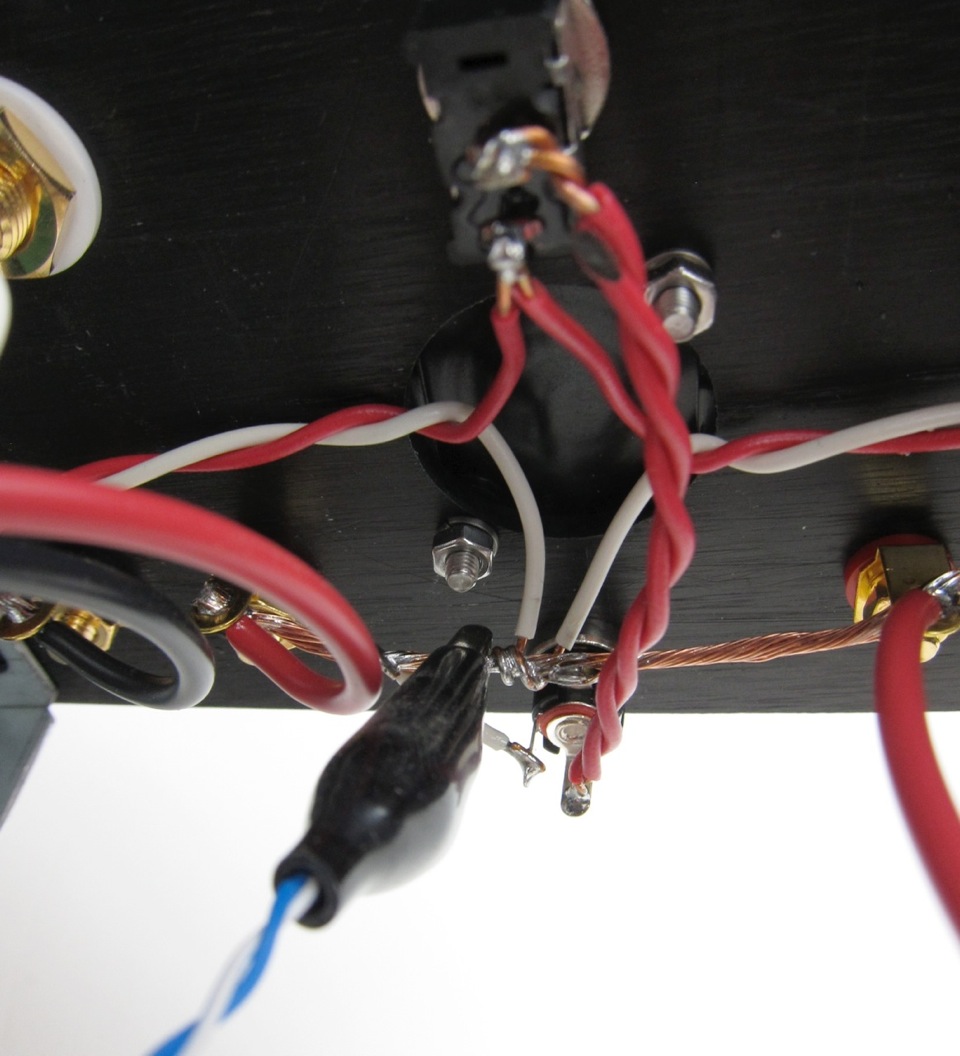
And the DMM black lead to ground. The buss is a perfectly good place to attach.
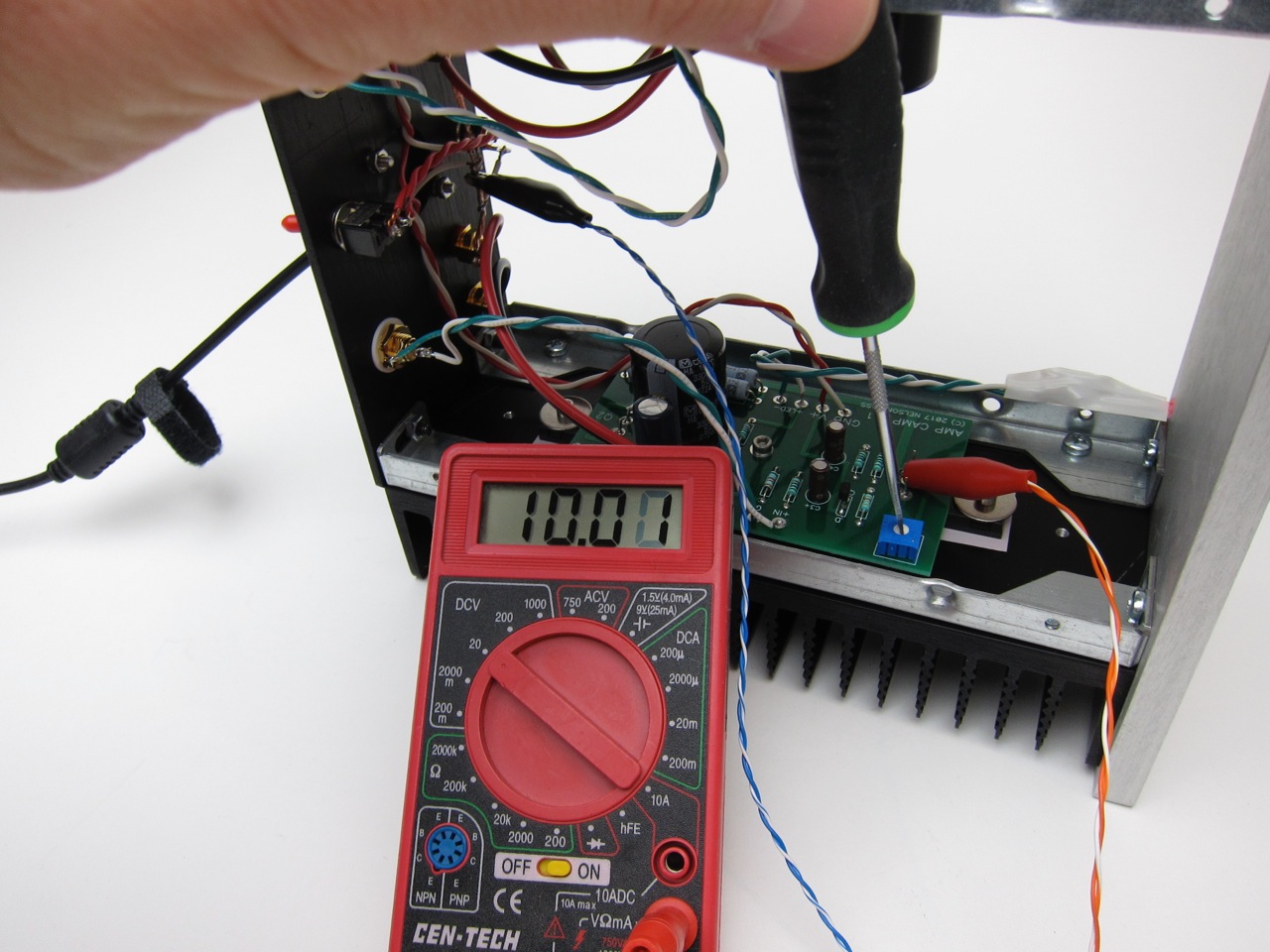
Set your meter to DC volts.
Adjust the pot in small steps to get 10v. A few tenths off in either direction is nothing to worry about.
The changes in voltage will lag behind the pot movement, almost in slow motion - this is normal. Small steps, wait a bit to let the voltage catch up, adjust a bit more, wait, etc...
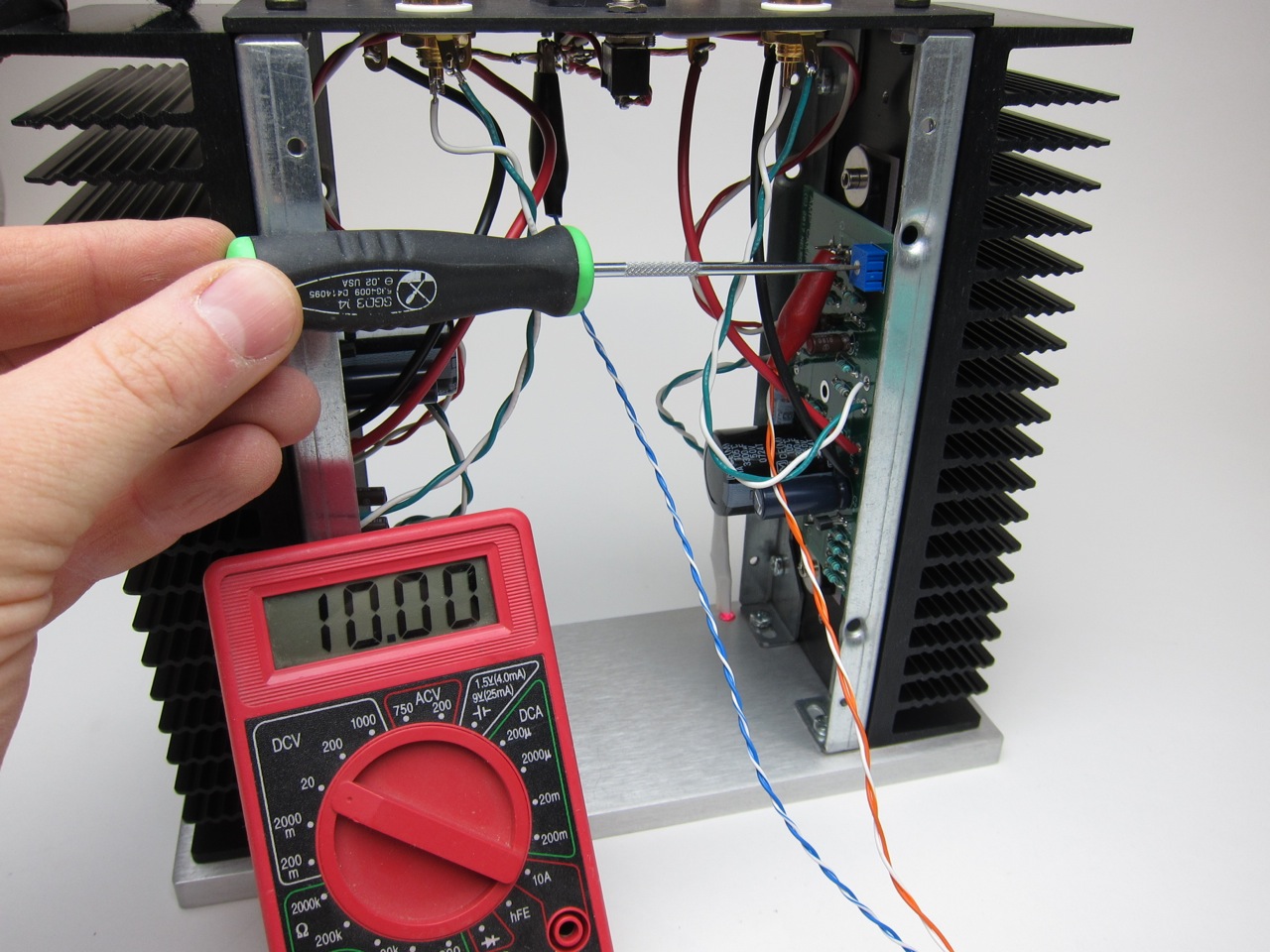
You don't need to remove both the top and the bottom panels to make adjustments, but it's super easy to get to everything if you do.
Setting the bias is very easy;

Connect your DMM red lead to pin 2 of Q1

And the DMM black lead to ground. The buss is a perfectly good place to attach.

Set your meter to DC volts.
Adjust the pot in small steps to get 10v. A few tenths off in either direction is nothing to worry about.
The changes in voltage will lag behind the pot movement, almost in slow motion - this is normal. Small steps, wait a bit to let the voltage catch up, adjust a bit more, wait, etc...

You don't need to remove both the top and the bottom panels to make adjustments, but it's super easy to get to everything if you do.
Last edited:
Bridge Monoblock conversion
Option 1 - XLR bridge monoblock (That can still be used as RCA input stereo amp)
The addition of a standard 3-pin XLR jack and 3 small pieces of wire can make a stereo ACA into a bridge balanced monoblock amplifier. 😀 The only catch is the signal must now come from a balanced source or preamp.
Output is taken from the black speaker posts.
See photos for wiring.
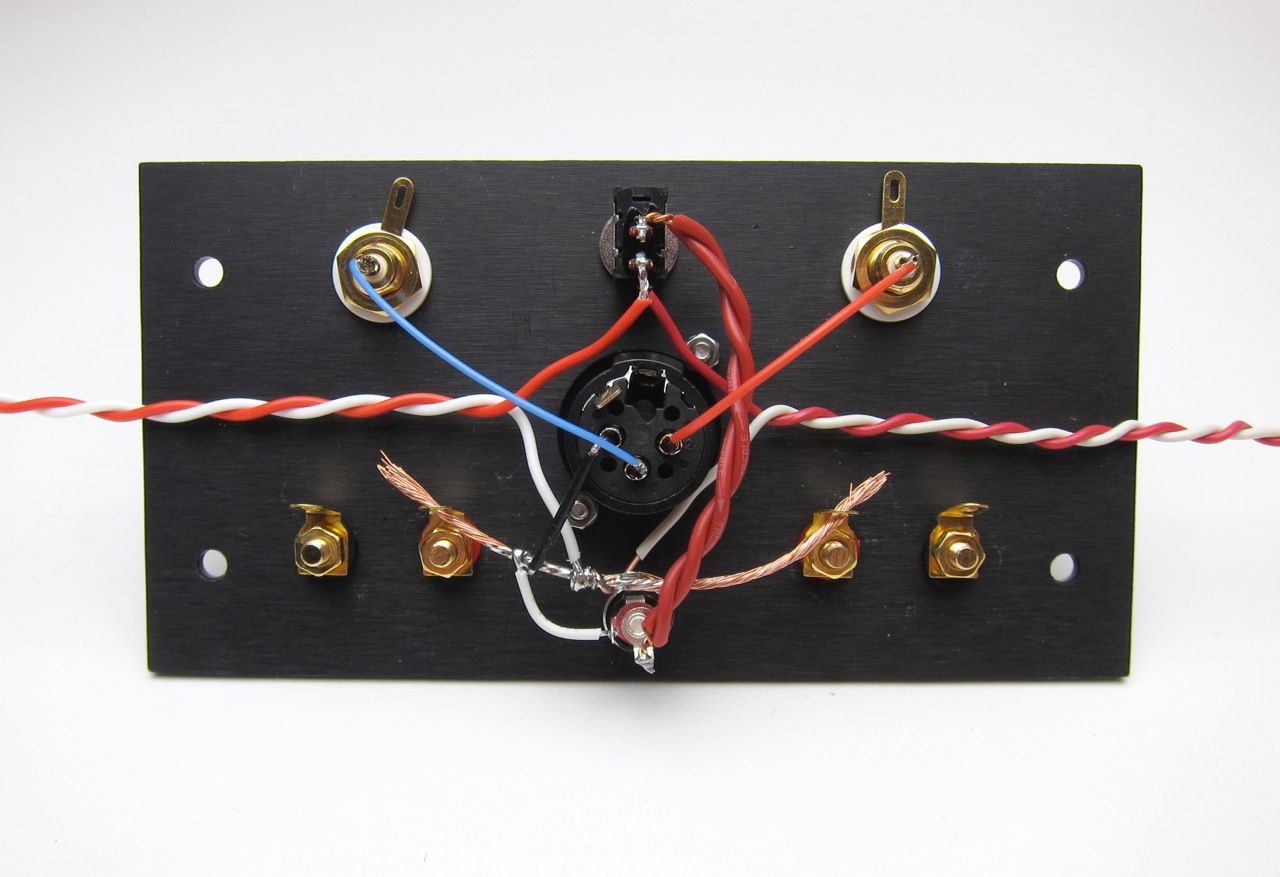
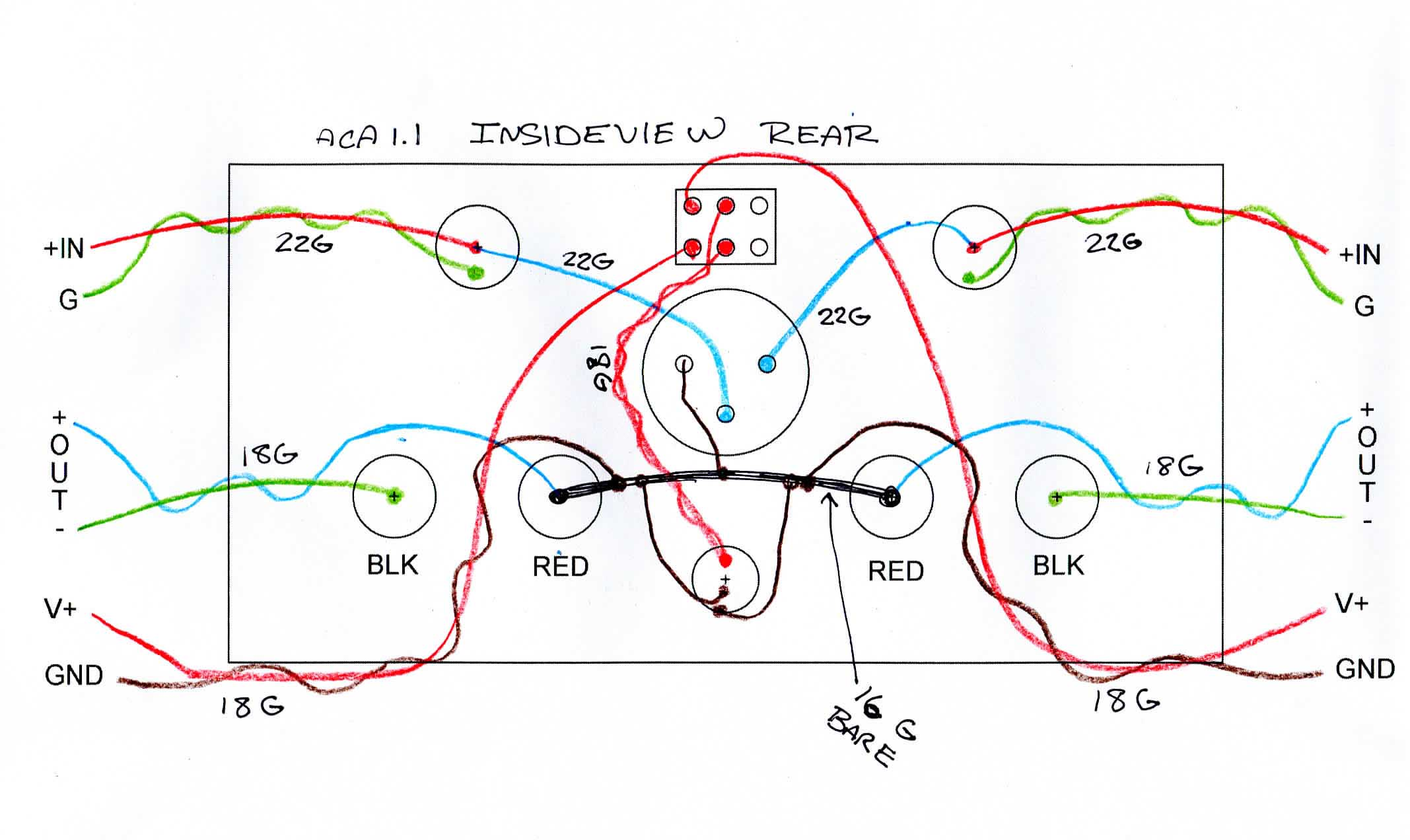
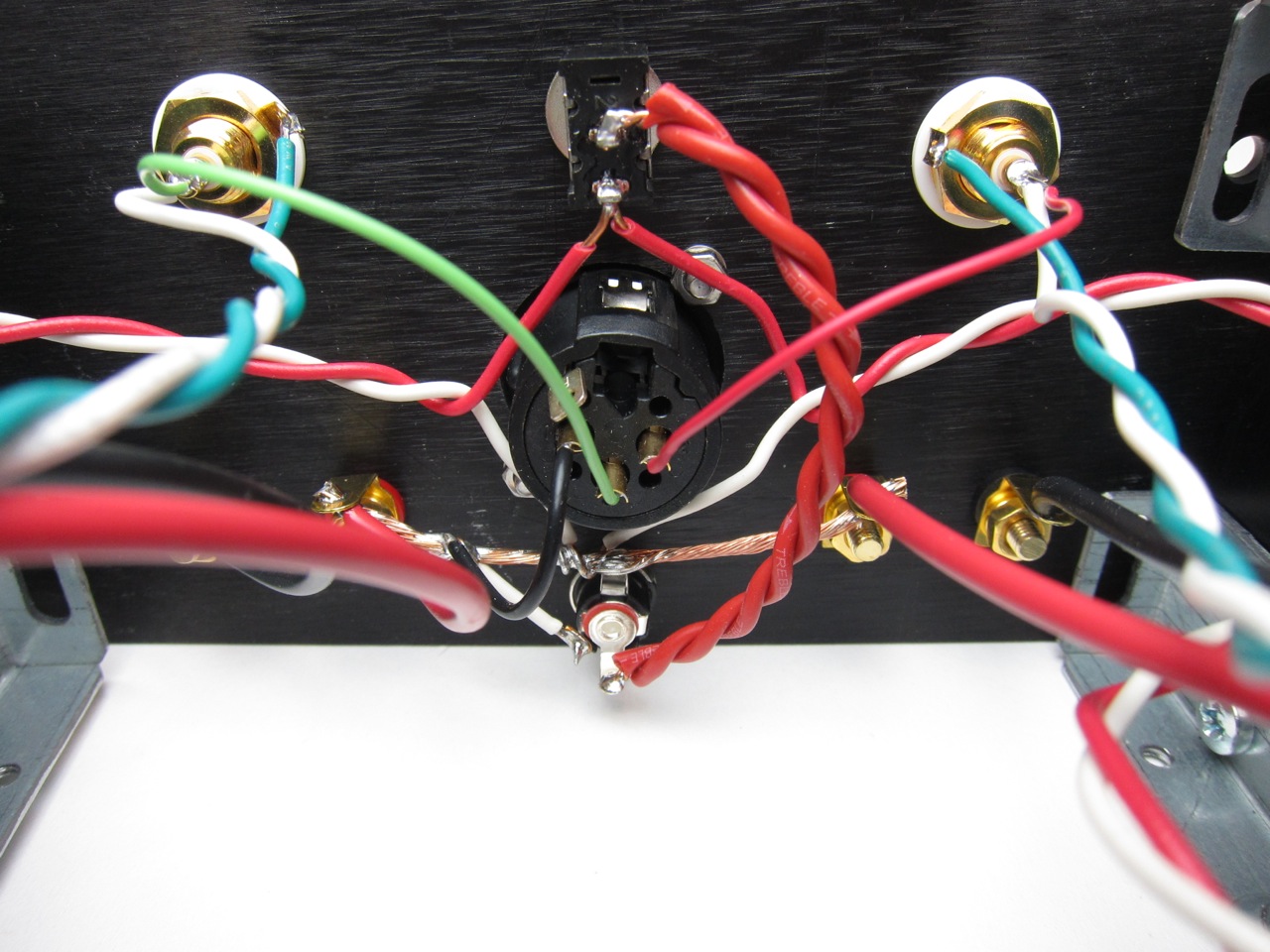
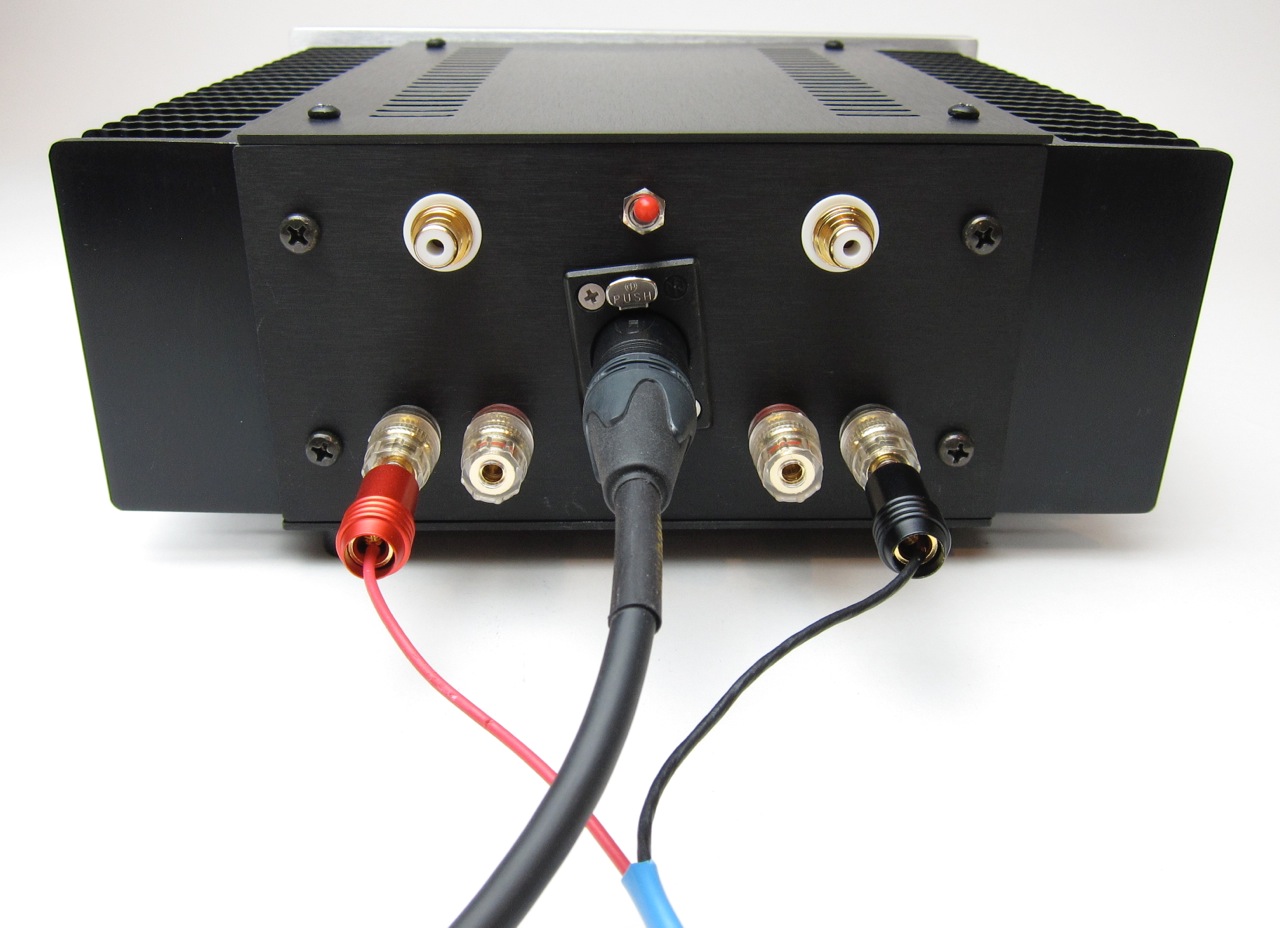
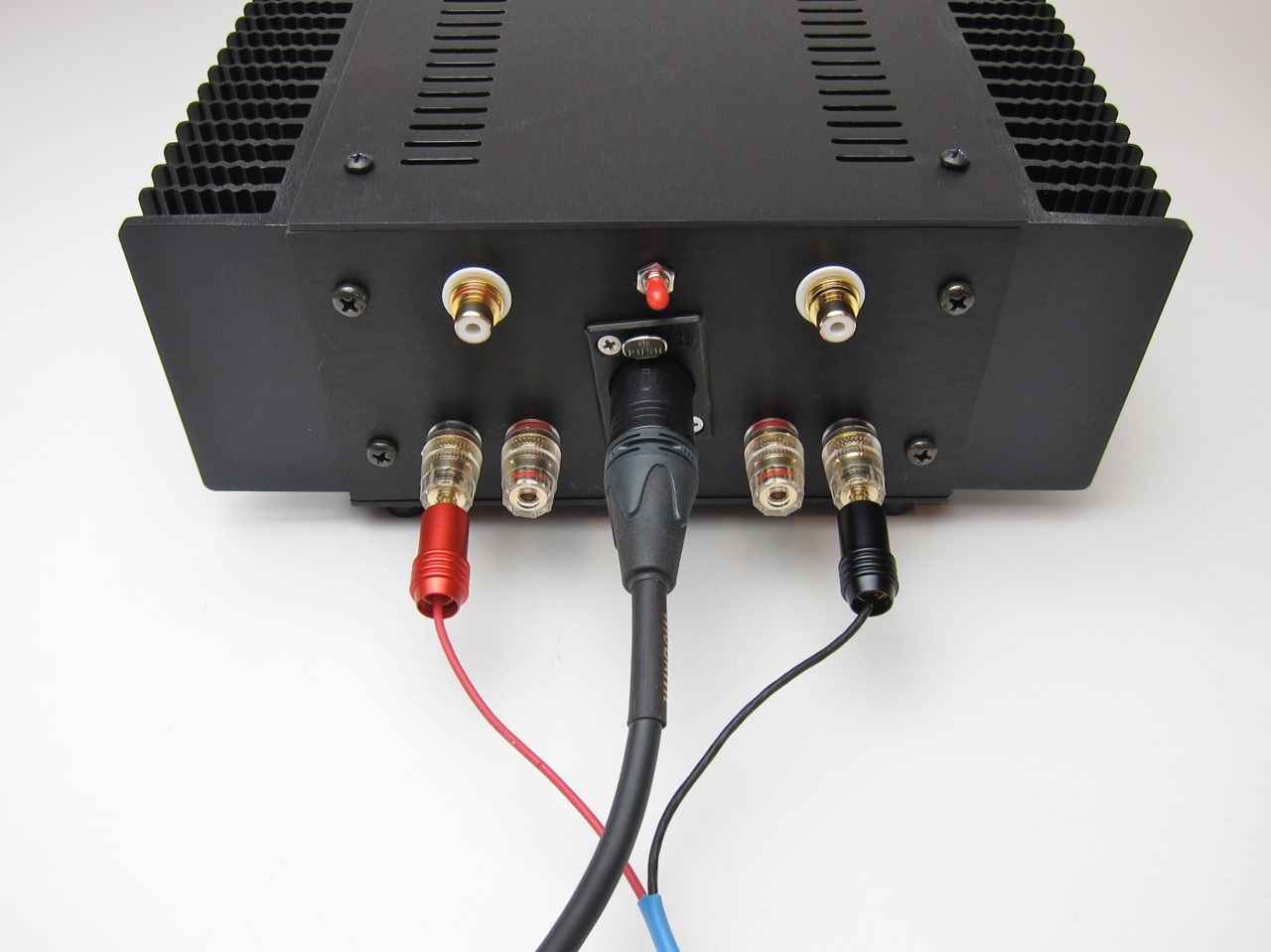
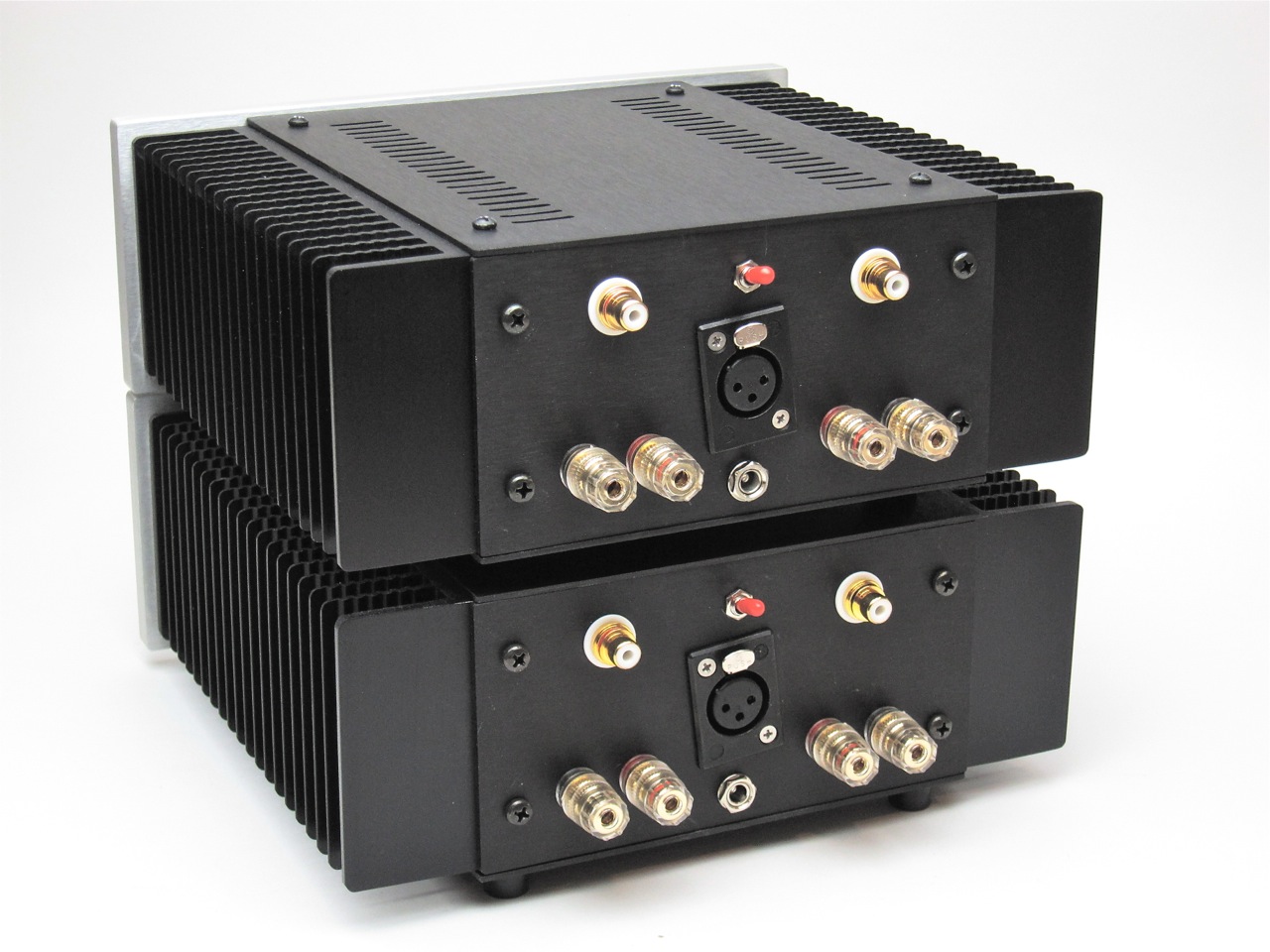
Regardless of how you wire for bridged operation, you'll need two ACA for stereo now.
Of note - I used XLR jacks that I had on my shelf from a different product, they have tabs a bit long for the chassis and that's why they are at a slight angle. (Use what you have, this is DIY, afterall... 🙂 ) There are plenty of XLR jacks that fit.
Option 2 - RCA input monoblock (less power than XLR, a bit more distortion)
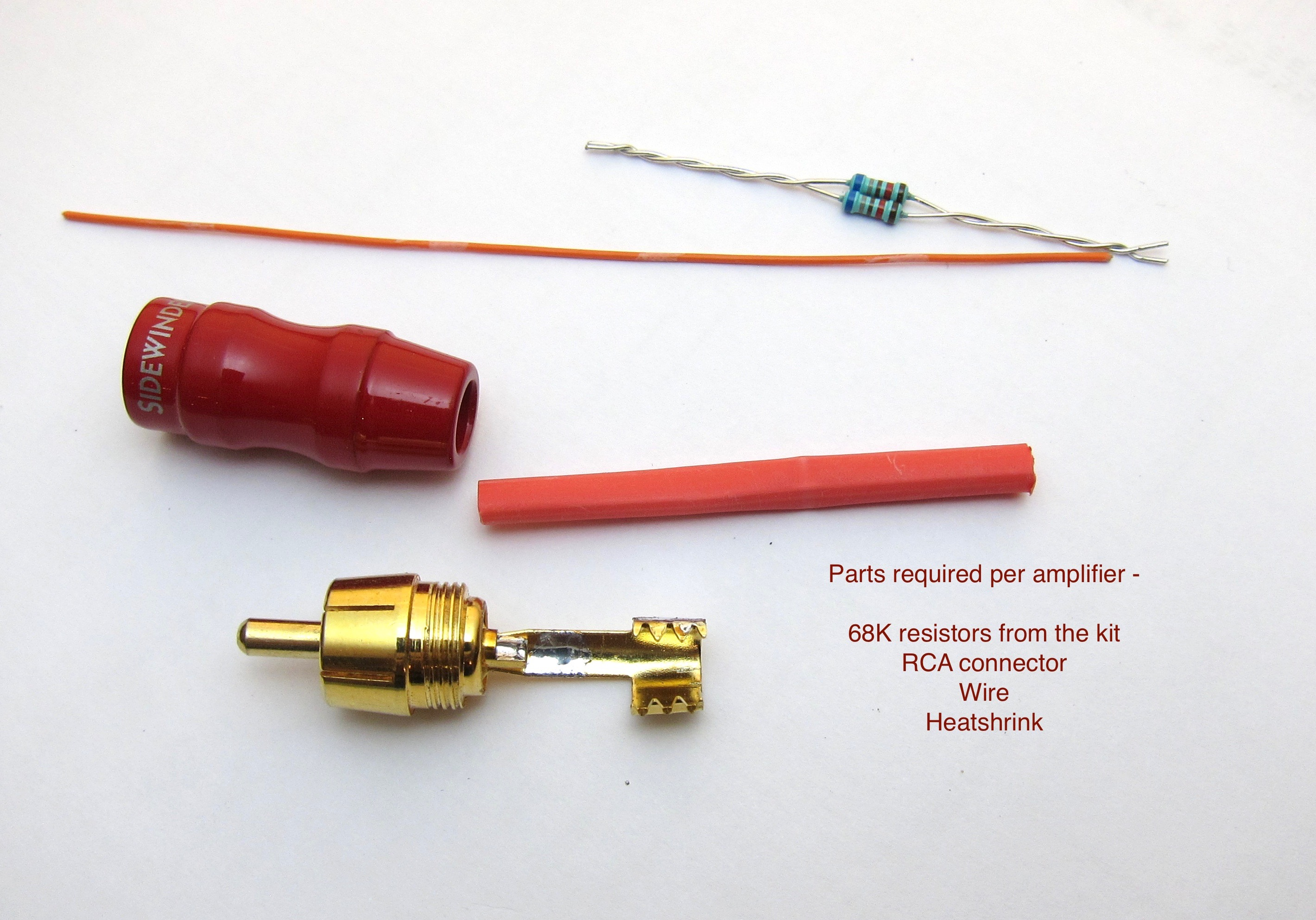
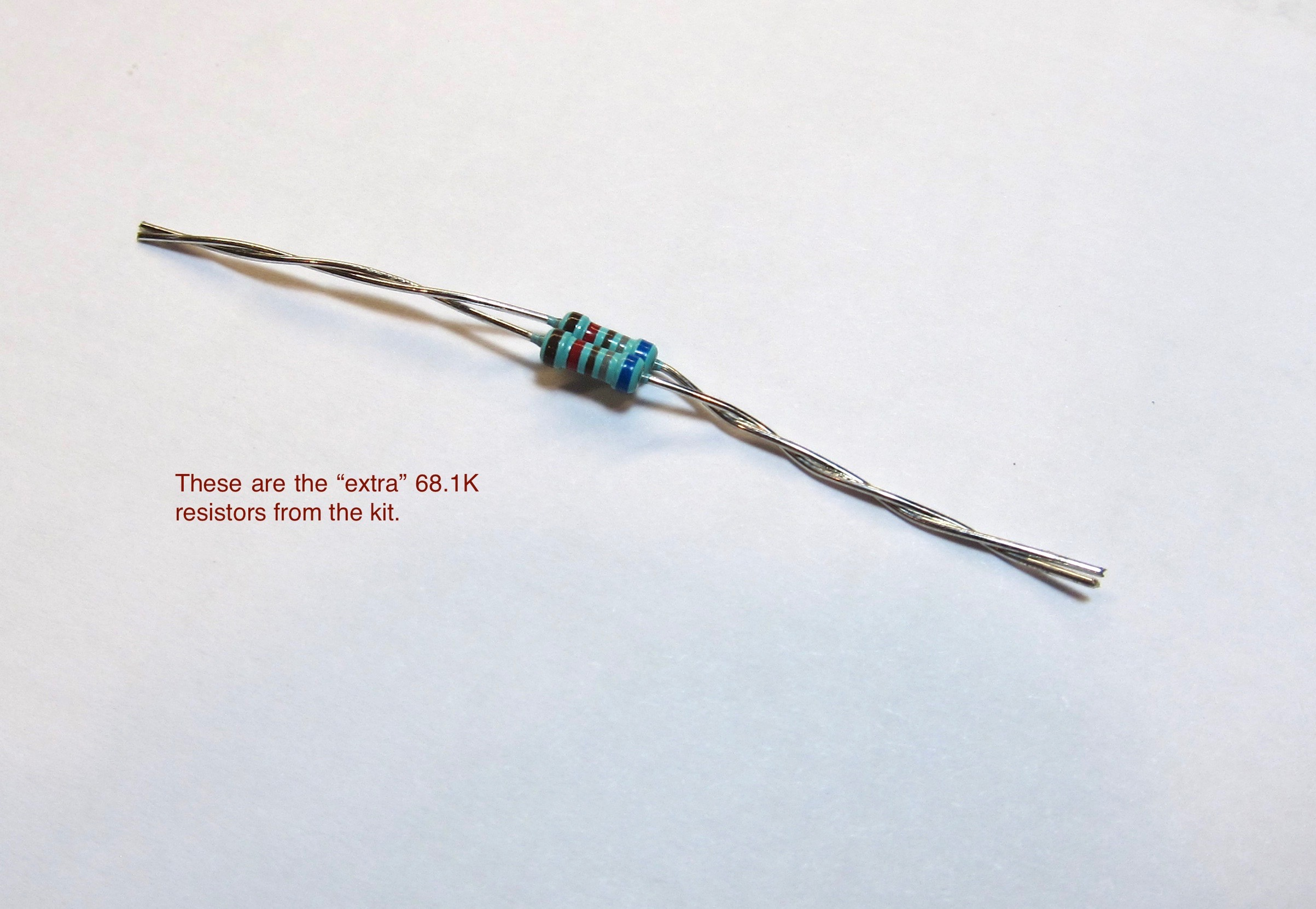
Take the extra 68K resistors from the kit and parallel them to make a 34K resistor. (if you'd like to be super precise, use a 39K for the ideal tuning, but 34K is close enough to not matter much... Also, you need only a 1/4w resistor, the 2 in parallel are used only because 1) it makes the proper value and 2) those resistors are already in the kit. 🙂 )
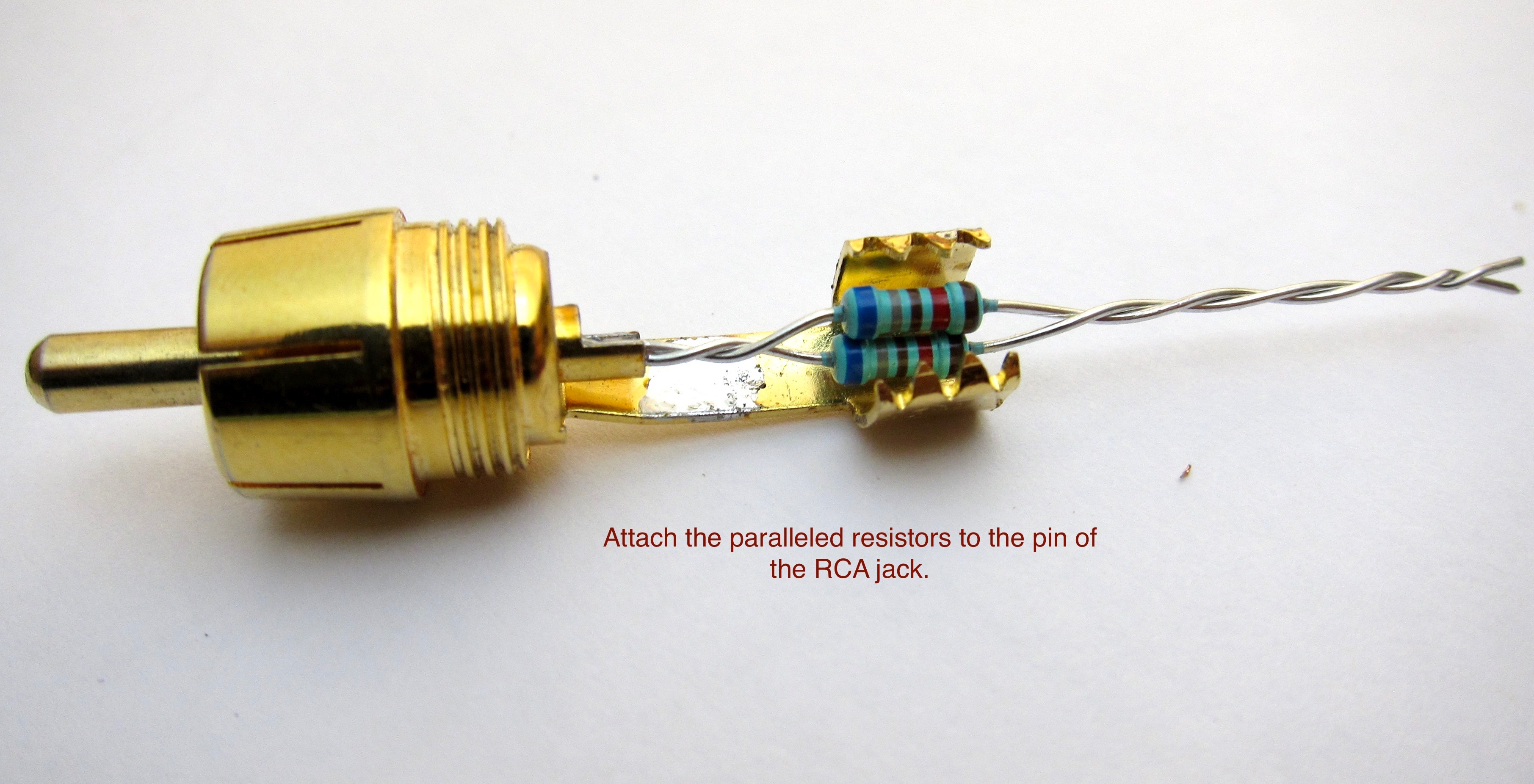
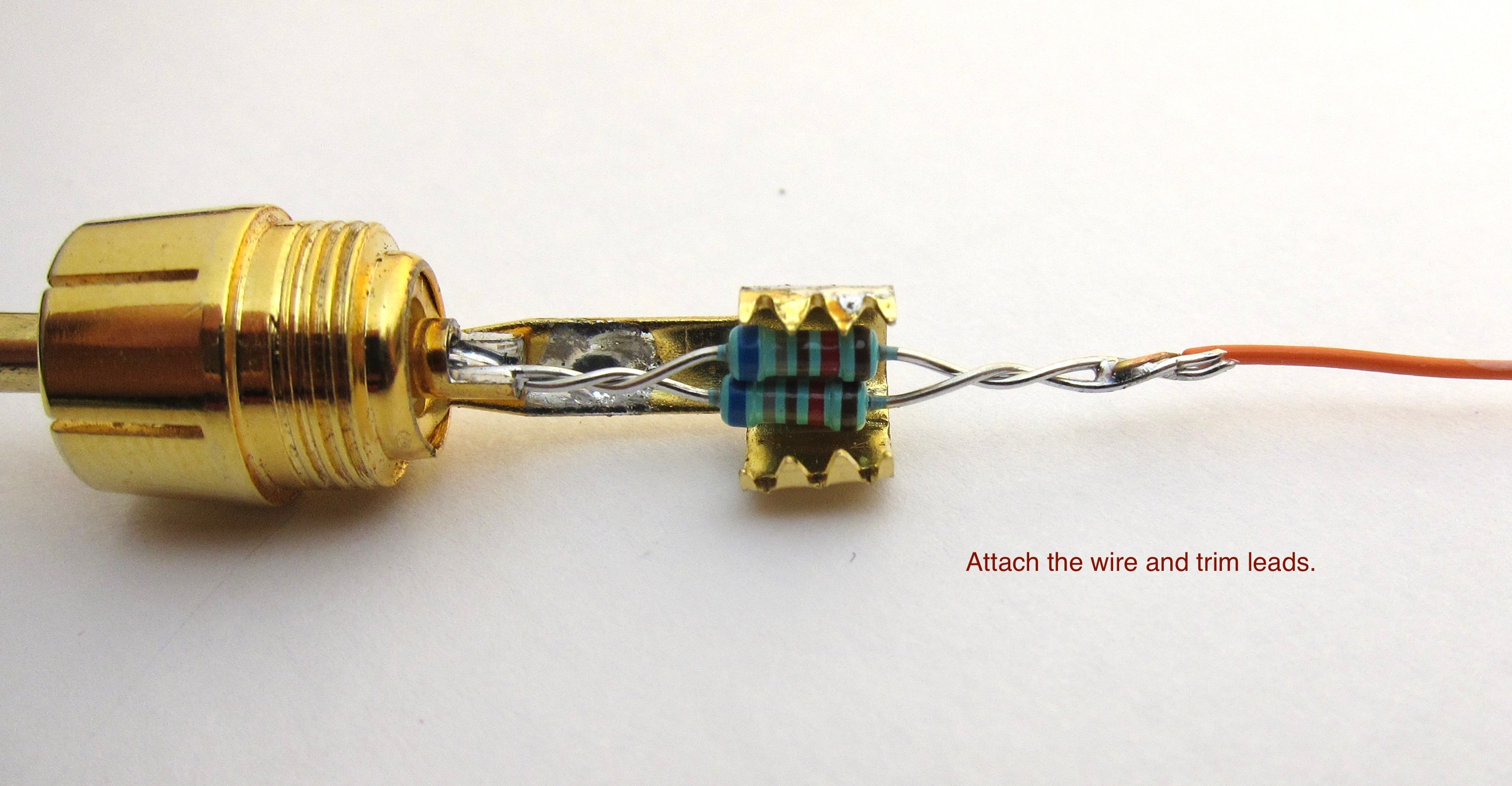
Solder to the pin (+) of an RCA jack and add 5" (120mm) wire.
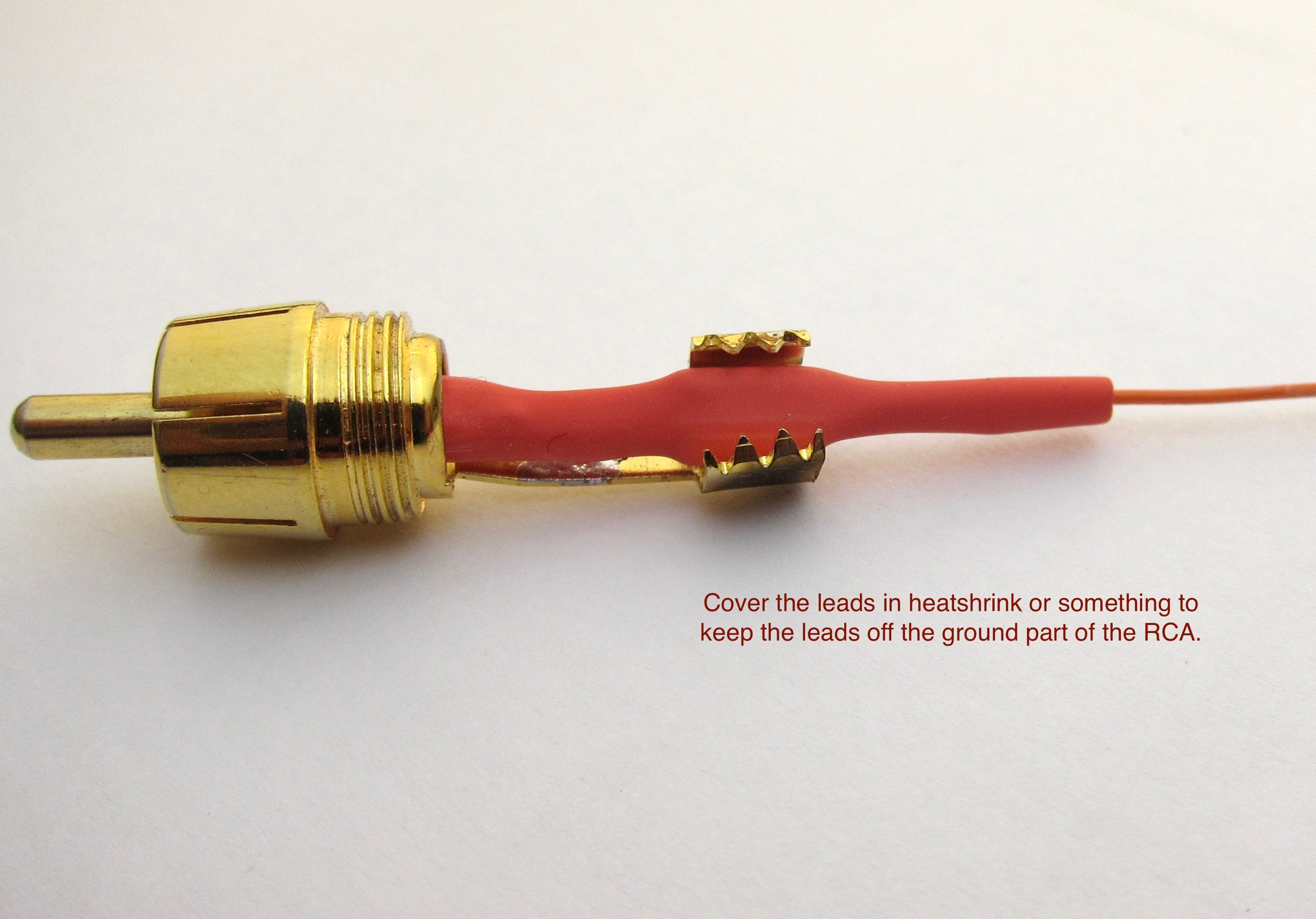
Use some heatshrink or something similar to keep the leads from touching the ground part of the RCA.
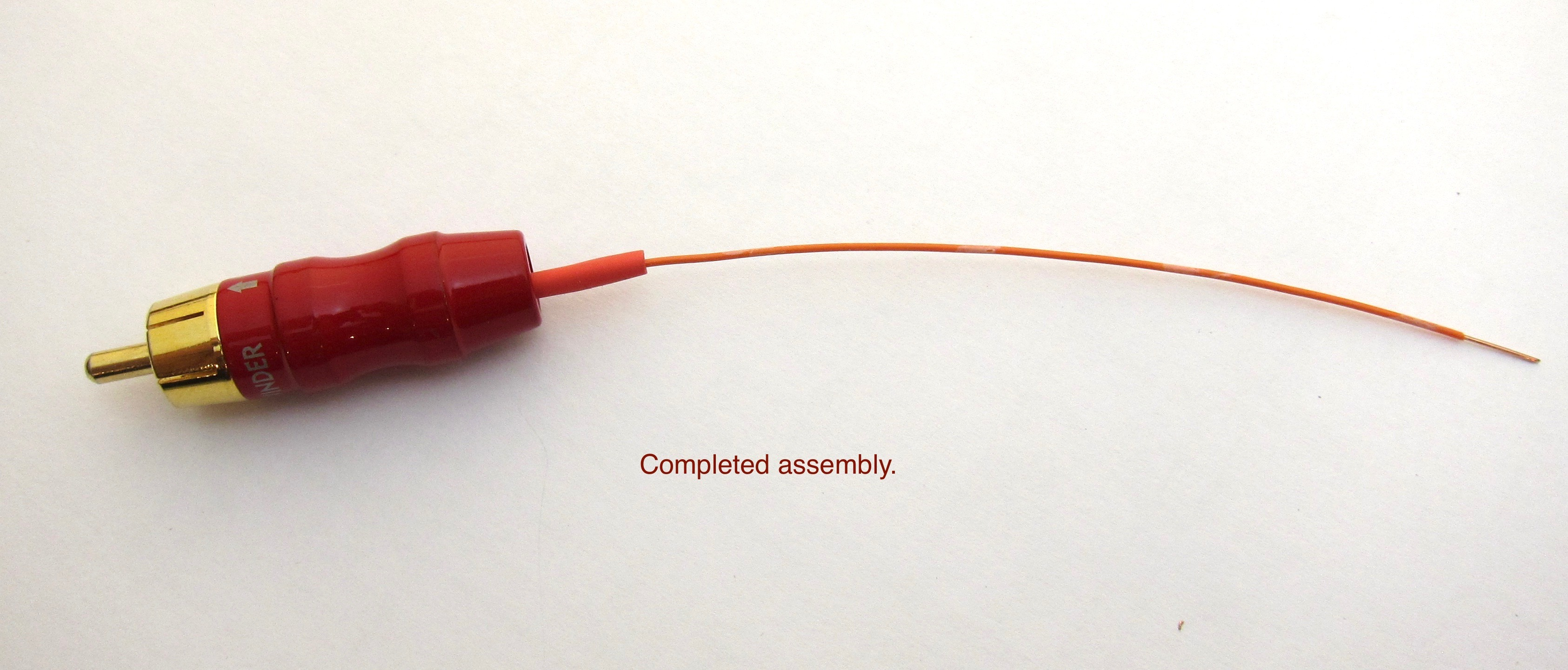
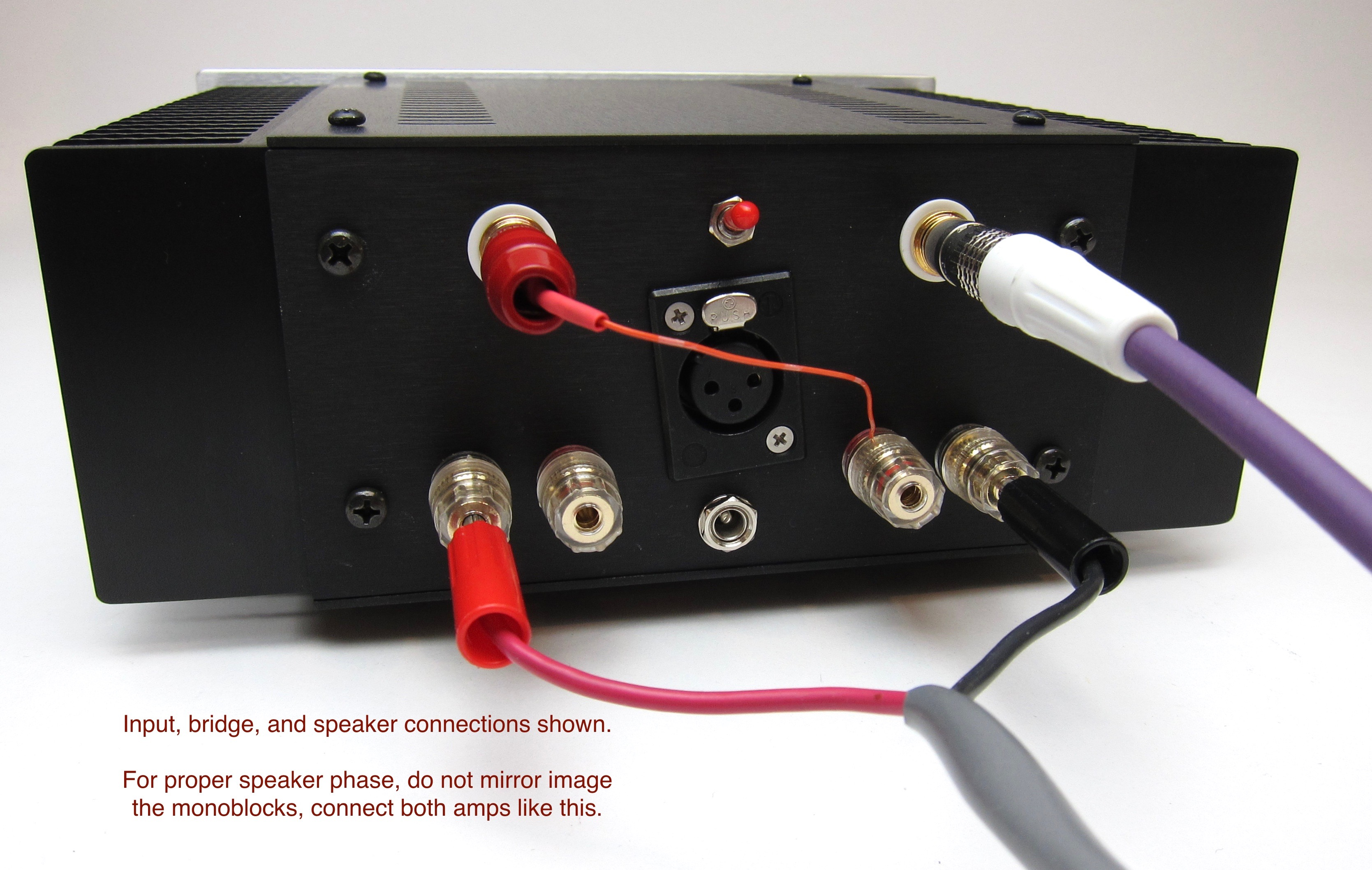
EDIT - This photo is wrong.
The small red wire of the RCA assembly needs to be attached to the Black post, along with that speaker wire. Connecting it to Red will result in faint or no signal to the speakers.
Attach speakers as shown for proper phase. This takes advantage of the inverting character of the amp circuit, and uses the invert through the resistor to feed the other channel of amp to bridge. Clever!! 😀
-
Option 1 - XLR bridge monoblock (That can still be used as RCA input stereo amp)
The addition of a standard 3-pin XLR jack and 3 small pieces of wire can make a stereo ACA into a bridge balanced monoblock amplifier. 😀 The only catch is the signal must now come from a balanced source or preamp.
Output is taken from the black speaker posts.
See photos for wiring.






Regardless of how you wire for bridged operation, you'll need two ACA for stereo now.
Of note - I used XLR jacks that I had on my shelf from a different product, they have tabs a bit long for the chassis and that's why they are at a slight angle. (Use what you have, this is DIY, afterall... 🙂 ) There are plenty of XLR jacks that fit.
Option 2 - RCA input monoblock (less power than XLR, a bit more distortion)
Being that the channels are inverting in phase, another way is to simply
drive one channel and feed its output through an appropriately large value
resistor to the input of the other channel, taking the output off both
minus outputs of the ACA.
The "minus" output of the channel driven by the source would become
the (-) speaker terminal, and the other channel's "minus" goes to the
(+) terminal. The resistor value in question would be about 68k for the
early version of the ACA (same as feedback resistor minus 10K) and the
later version would be about 39K.
The result is a bridged amplifier. It will deliver about 15 watts into
8 ohms at clipping, but will not enjoy the distortion cancellation that
comes with driving the inputs balanced. The result is still negative
phase 2nd harmonic at ordinary levels.


Take the extra 68K resistors from the kit and parallel them to make a 34K resistor. (if you'd like to be super precise, use a 39K for the ideal tuning, but 34K is close enough to not matter much... Also, you need only a 1/4w resistor, the 2 in parallel are used only because 1) it makes the proper value and 2) those resistors are already in the kit. 🙂 )


Solder to the pin (+) of an RCA jack and add 5" (120mm) wire.

Use some heatshrink or something similar to keep the leads from touching the ground part of the RCA.


EDIT - This photo is wrong.
The small red wire of the RCA assembly needs to be attached to the Black post, along with that speaker wire. Connecting it to Red will result in faint or no signal to the speakers.
Attach speakers as shown for proper phase. This takes advantage of the inverting character of the amp circuit, and uses the invert through the resistor to feed the other channel of amp to bridge. Clever!! 😀
-
Last edited:
Nice work with the pics...that's kinda tedious getting that all done and sequenced. Good lens work.
Yet another excellent 6l6 build guide. Can’t wait for the store to get some kits for us to build. Thanks 6l6 and DIYAudio store!
It’s marked 1.1 on the schematic and the PCB, so I went with that. I was thinking about calling it Amp Camp Amp (2018) or something like that, however the boards are marked 2017...
Instead, maybe we should call it George. Or Simon. Or perhaps Annabelle.
Instead, maybe we should call it George. Or Simon. Or perhaps Annabelle.
Last edited:
Pass DIY Addict
Joined 2000
Paid Member
Jim- Thanks for your dedication to provide these guides for everyone! I know how much time it takes to make nice images, organize them, and document things in a manner that is clear and makes sense. Great work!
Since you mentioned monoblock coversion a few posts back, how soon before you’ll have some photos and notes / cautions for the process? I know a couple of guys who’d be interested.
And since we’re at it, addition of B1 buffer and volume pot to formulate a sorta “integrated” amp?😉
And since we’re at it, addition of B1 buffer and volume pot to formulate a sorta “integrated” amp?😉
Last edited:
Since you mentioned monoblock coversion a few posts back, how soon before you’ll have some photos and notes / cautions for the process? I know a couple of guys who’d be interested.
Sure! The monoblock operation of the ACA requires an XLR jack and 3 pieces of wire. Power should be more than double as it's balanced bridge operation, not parallel. The only catch is it must be fed from a balanced source.
It will be covered in detail in the near future. 😀
And since we’re at it, addition of B1 buffer and volume pot to formulate a sorta “integrated” amp?😉
Place a stereo 25k pot between the RCA jacks and the input. It really is that easy. That said, I'd rather use a dedicated preamp circuit or just use the volume on your computer as that's what a majority of people are using as source today.
According to Variac it is Amp Camp Amp 1.5
So we can't call it George? 😕
Bummer.
-
Last edited:
- Status
- Not open for further replies.
- Home
- Amplifiers
- Pass Labs
- ACA V1.5 Illustrated Build Guide
